We like Big Bend and we cannot lie
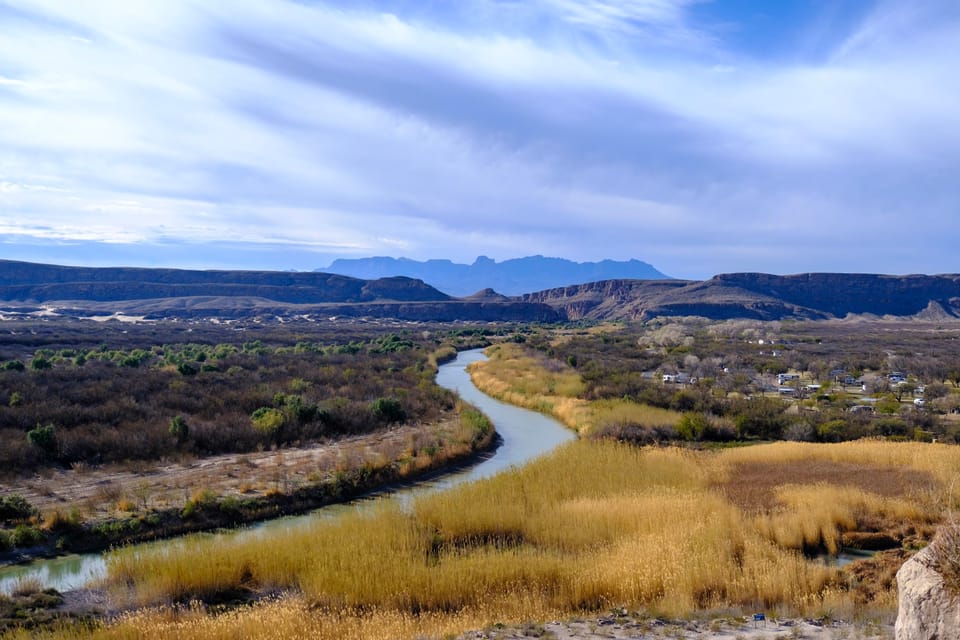
The word "underrated" is tossed around a lot, but we definitely think it applies to Big Bend National Park.
Located in southwest Texas along the US/Mexico border, Big Bend's popularity has increased since the pandemic, like every other national park – but it still only gets about 500,000 visitors a year (compared to Yellowstone's 3+ million and Great Smoky Mountains' 14+ million).
Big Bend is one of the most isolated, remote national parks. Depending on where you are in the park, you often have to drive an hour or more to get to the closest town. There are a few small "hubs" spread out inside the park with visitor centers, gas stations, basic convenience stores, and campgrounds, but apart from those areas, it's basically pure wilderness. Don't expect cell service besides a few sporadic locations (and it's usually 3G) or the guest Wi-Fi at the visitor centers.
But all of that is part of Big Bend's appeal. It might be decently busy at the visitor hubs and on the most popular trails, but you don't have to try very hard to find solitude if that's what you're looking for. And the park is much more beautiful and diverse than you might expect: deep river canyons, wide open desert, and tall rocky mountains.
We really liked our week in Big Bend... and we cannot lie.
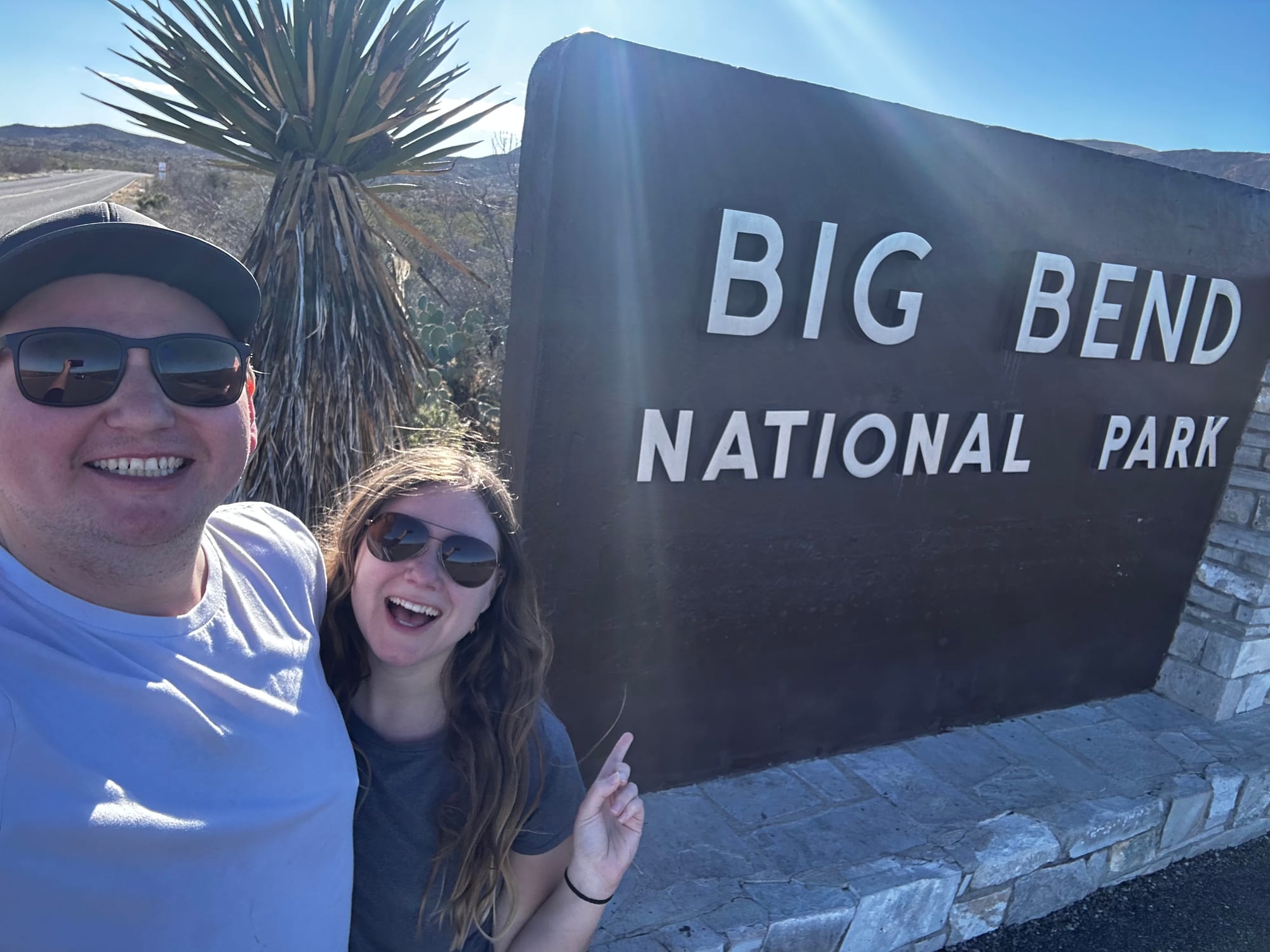
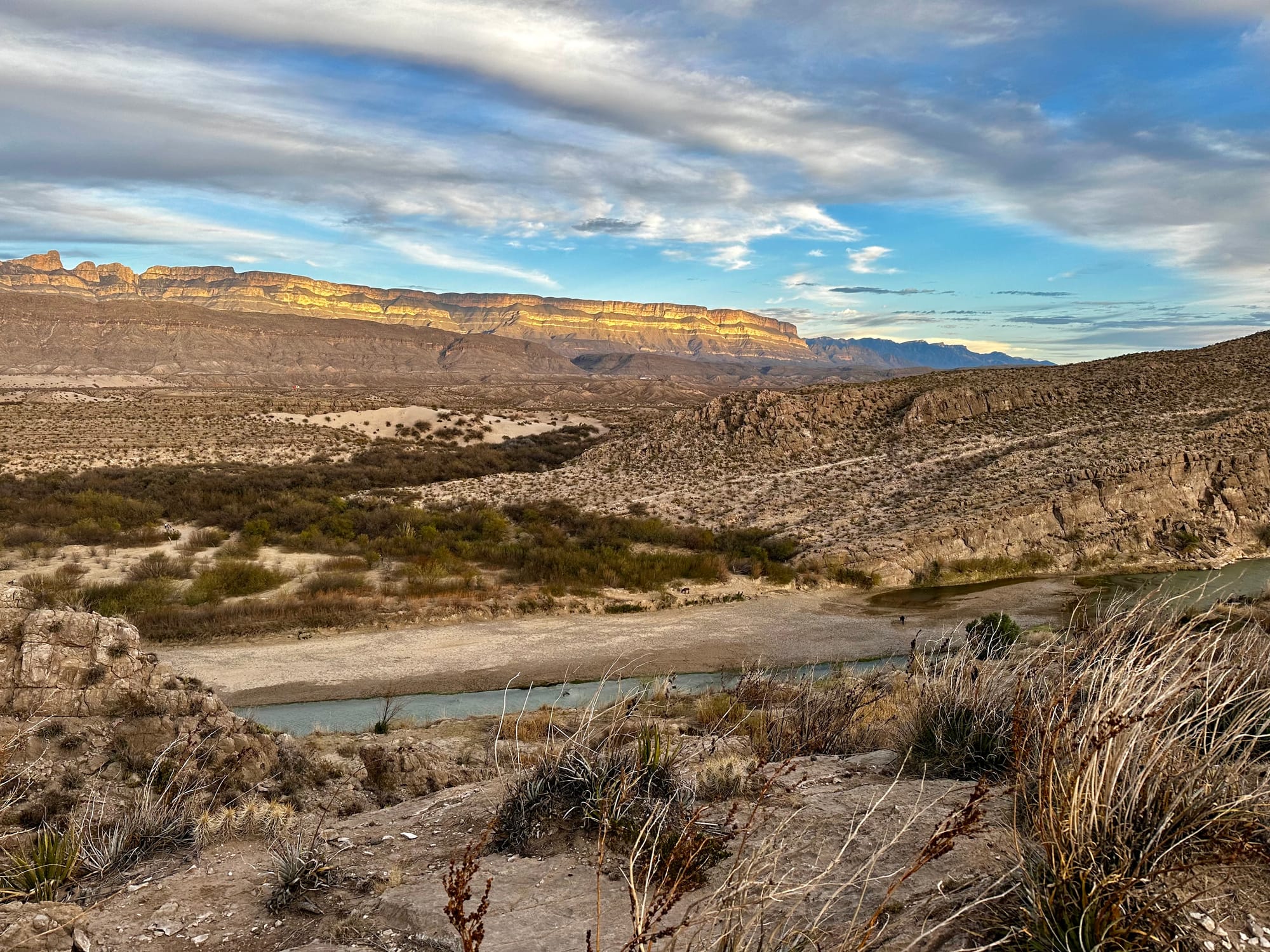
A few fun facts:
- Big Bend is an International Dark Sky Park, and it has the least light pollution and darkest skies of any park in the lower 48 states – making it an amazing place for stargazing!
- The park includes 118 miles of the US/Mexico border, divided by the Rio Grande. On the other side are the states of Chihuahua and Coahuila, the tiny town of Boquillas, and more Mexican parks/protected areas.
- The highest point in the park is Emory Peak at 7,832 feet (in contrast, the lowest point is at Rio Grande Village, 1,850 feet).
- Wildlife: Big Bend has black bears, mountain lions, coyotes, javelinas (they look like pigs, but actually aren't closely related to pigs), rattlesnakes, and over 450 species of birds, including roadrunners!
Rio Grande Village (east side)
Day 1
We drove from Canyon Lake, Texas to Big Bend on a Saturday – leaving the hilly, greener area of Texas and entering the flat desert zone. It was WINDY on this drive. We made sure to fill up on propane, go grocery shopping, and plan our gas stops before entering the park, since there weren't many options once we got in.
The last town we drove through north of the park (Marathon) was tiny. Then it was a long, increasingly remote drive to the Big Bend entrance. As we made our way to the campground, we passed by the Chisos Mountains and drove closer and closer toward a huge canyon wall – it was gorgeous!
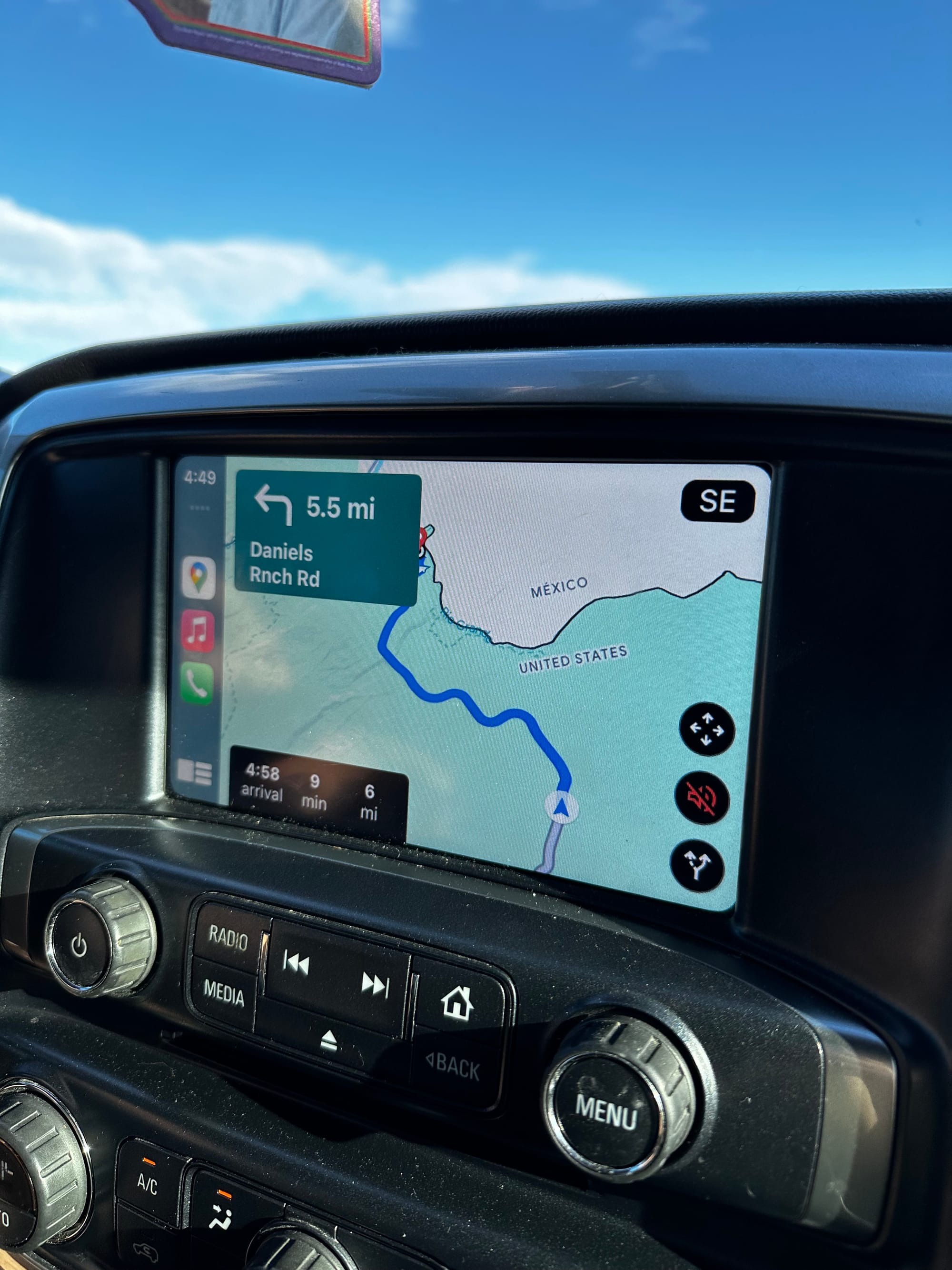
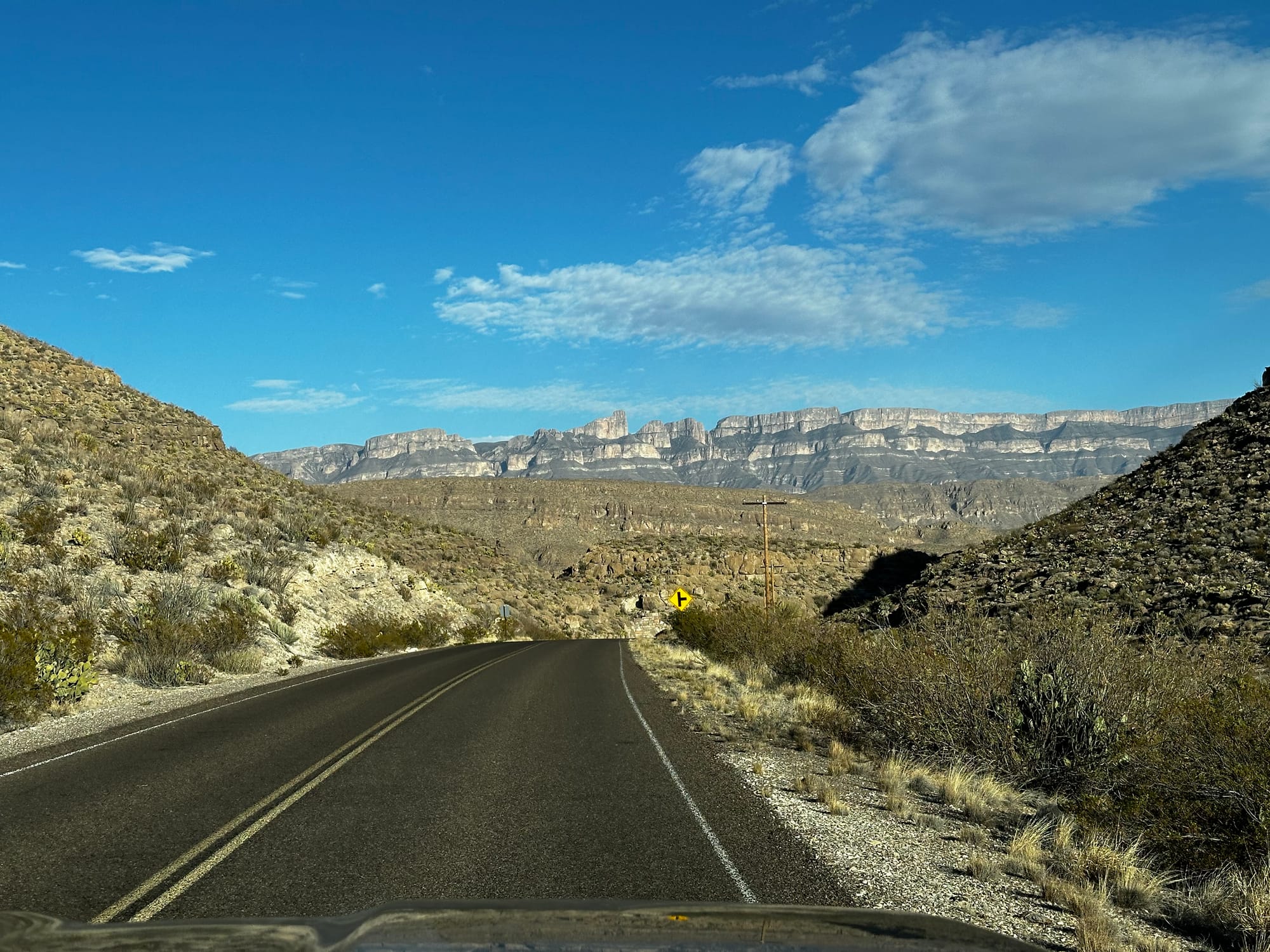
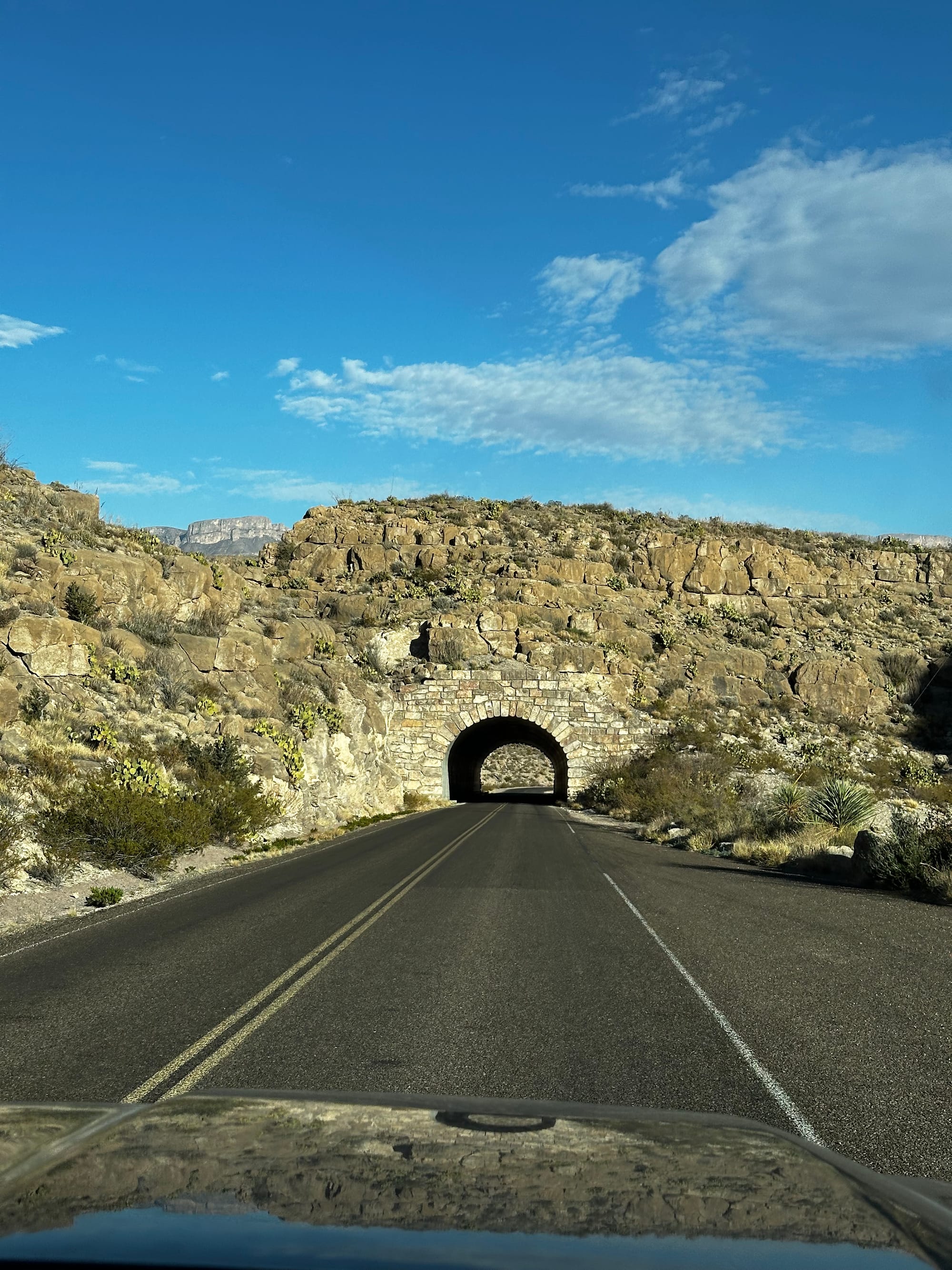
Our first campground was at Rio Grande Village, the main hub on the east side of the park. It's a big and popular campround – dry camping only, but there's a separate, smaller RV park nearby with hookups (we didn't camp there). Like its name suggests, the campground is walking distance from the Rio Grande.
Our RV site at Rio Grande was one of the trickier ones to park at – it was very unlevel and kind of an awkward setup. We finally figured it out by parking the Airstream sideways and backing it right up to our bear box.

After we got set up, it was sunset, and we could see the lighting getting prettier on the canyon walls. We drove around to try to get a better view, and pulled off on the side of the road just as the sunset lit up the canyons in a fiery pink glow.
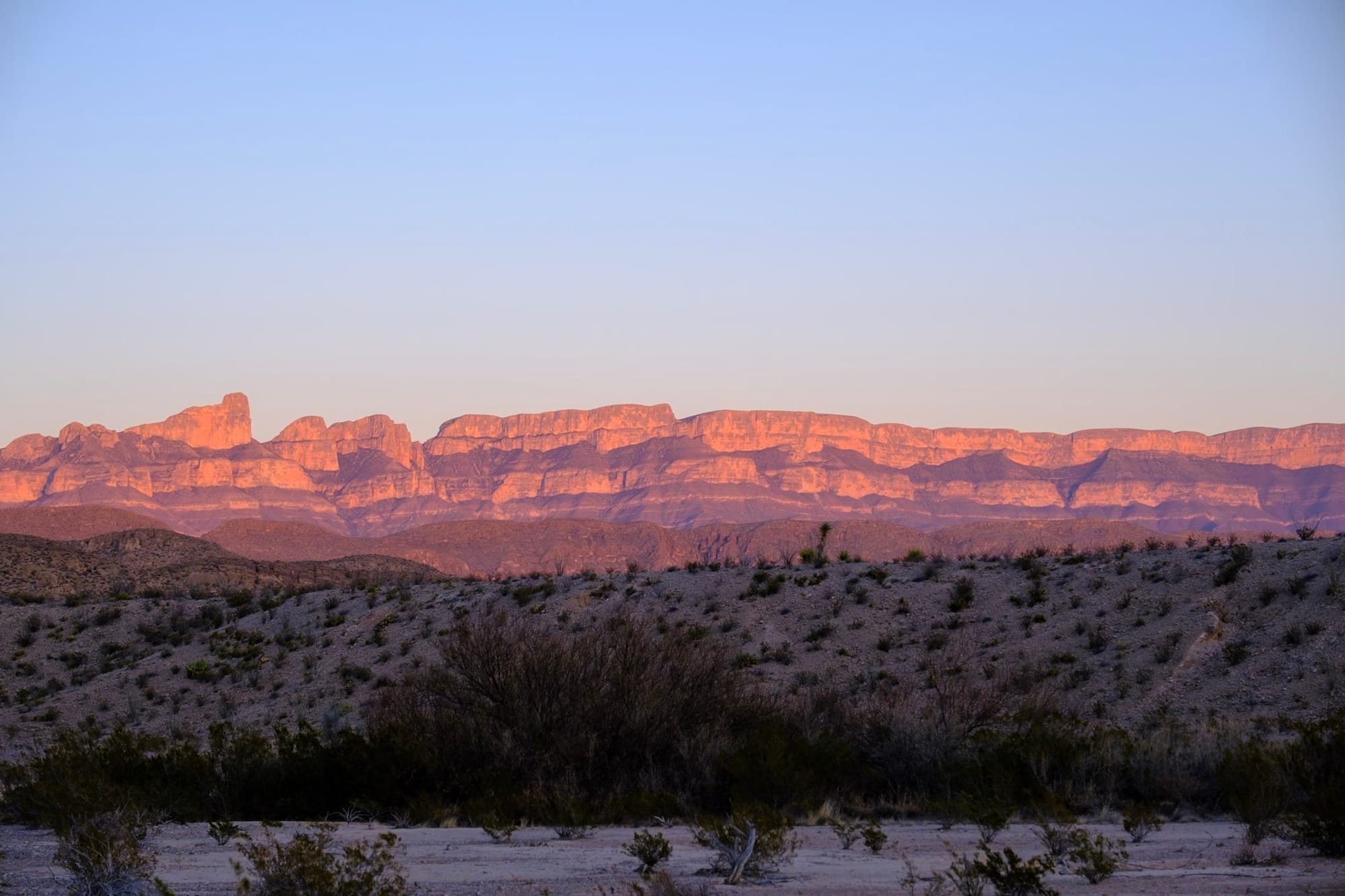
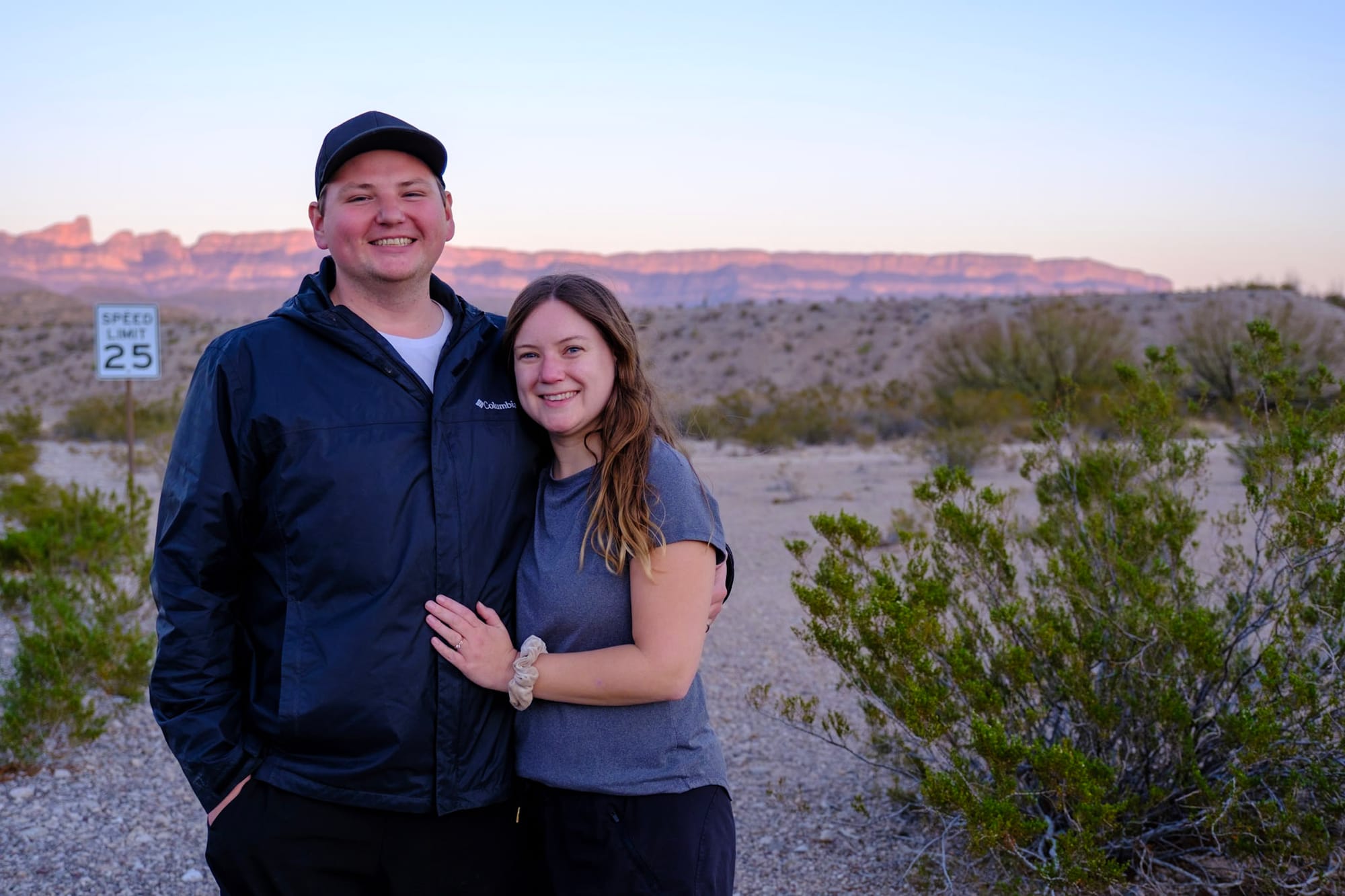
A rare photo of both of us!
Then we stopped by Boquillas Overlook, where you get a view of the Rio Grande and the town of Boquillas across the border. It was weird knowing Mexico was just right over there! At the overlook, there were a bunch of Mexican souvenirs placed on the ground for sale, with a box where you put cash. There were cute little pots, figurines of cacti and roadrunners, fabric pouches and aprons, bracelets, etc. We ended up seeing little groups of souvenirs like this all over the area, especially along trails – people from Boquillas cross over to add more and collect money. It's technically illegal to sell and buy these, but the park people don't seem to enforce it much. (And yes, I did end up buying one – a cute little cactus shot glass with a handle).
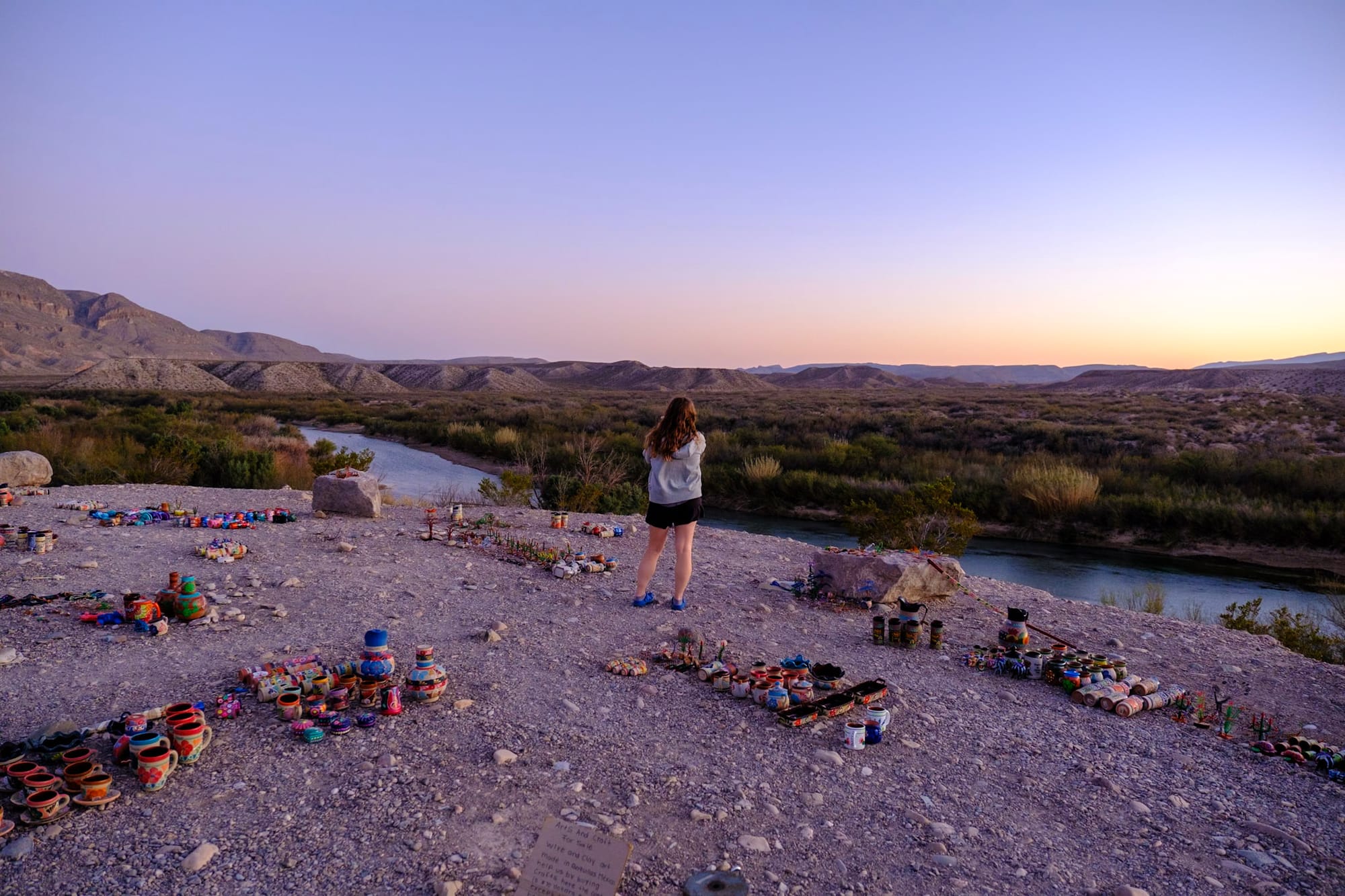
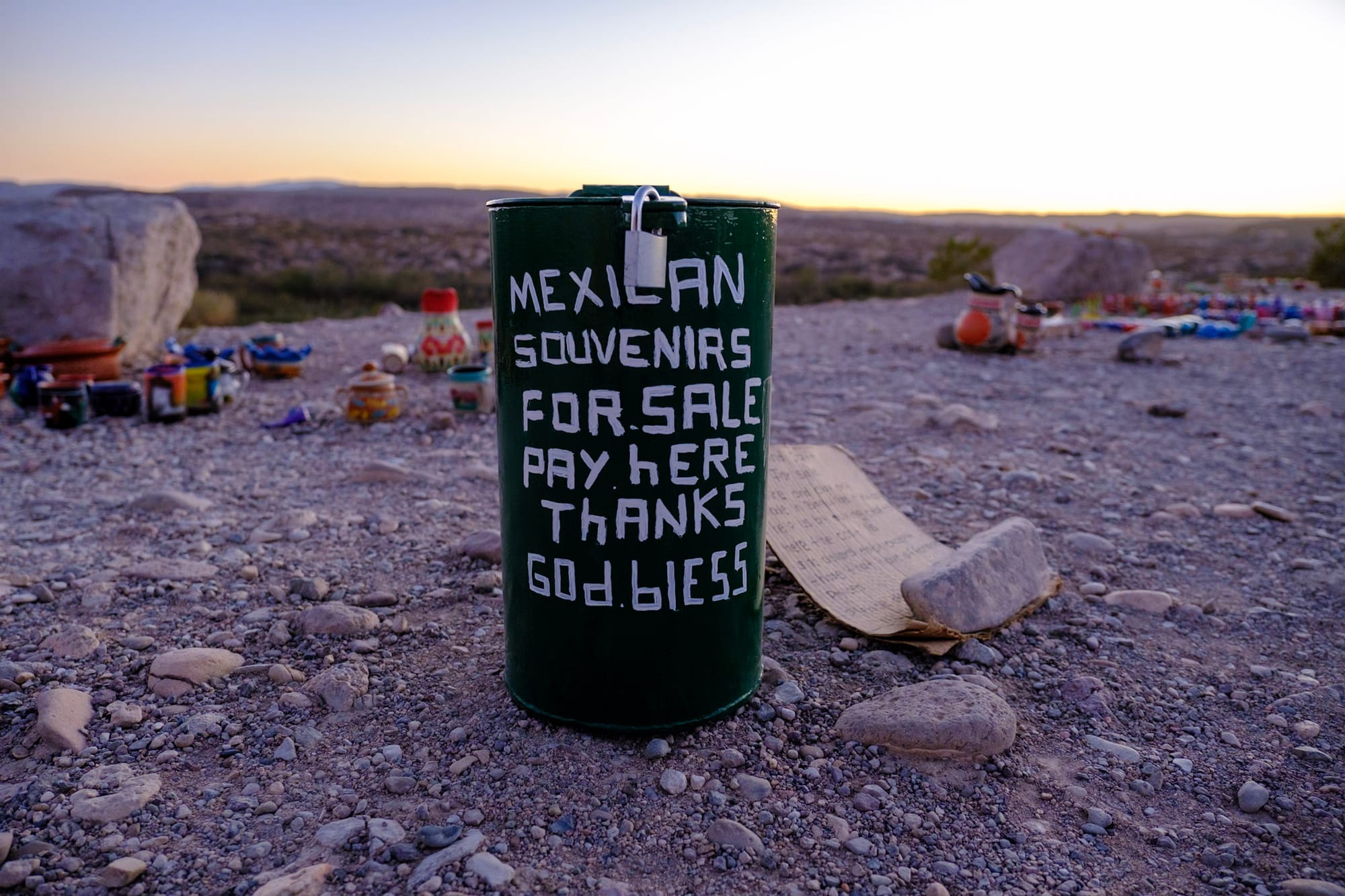
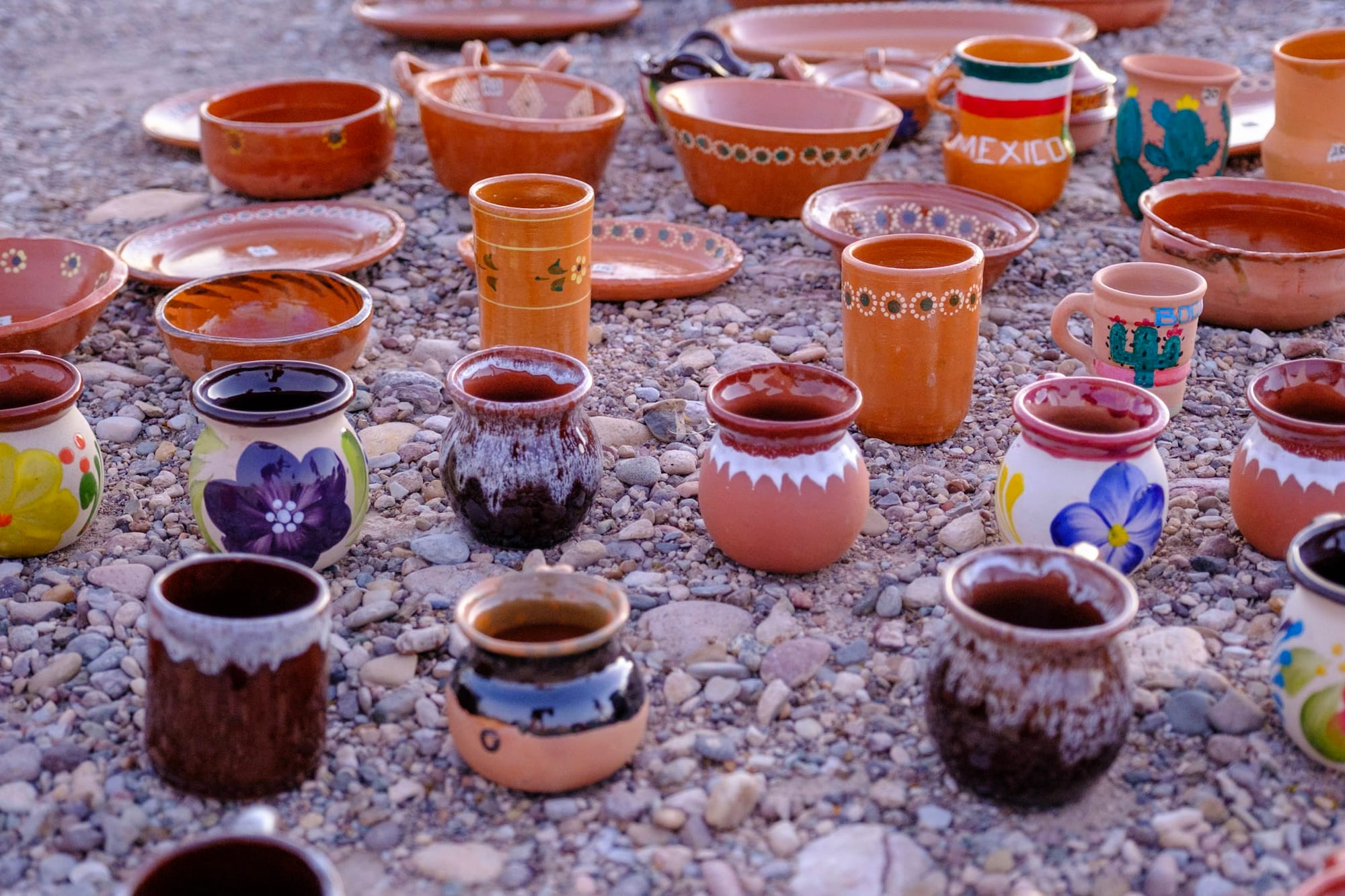
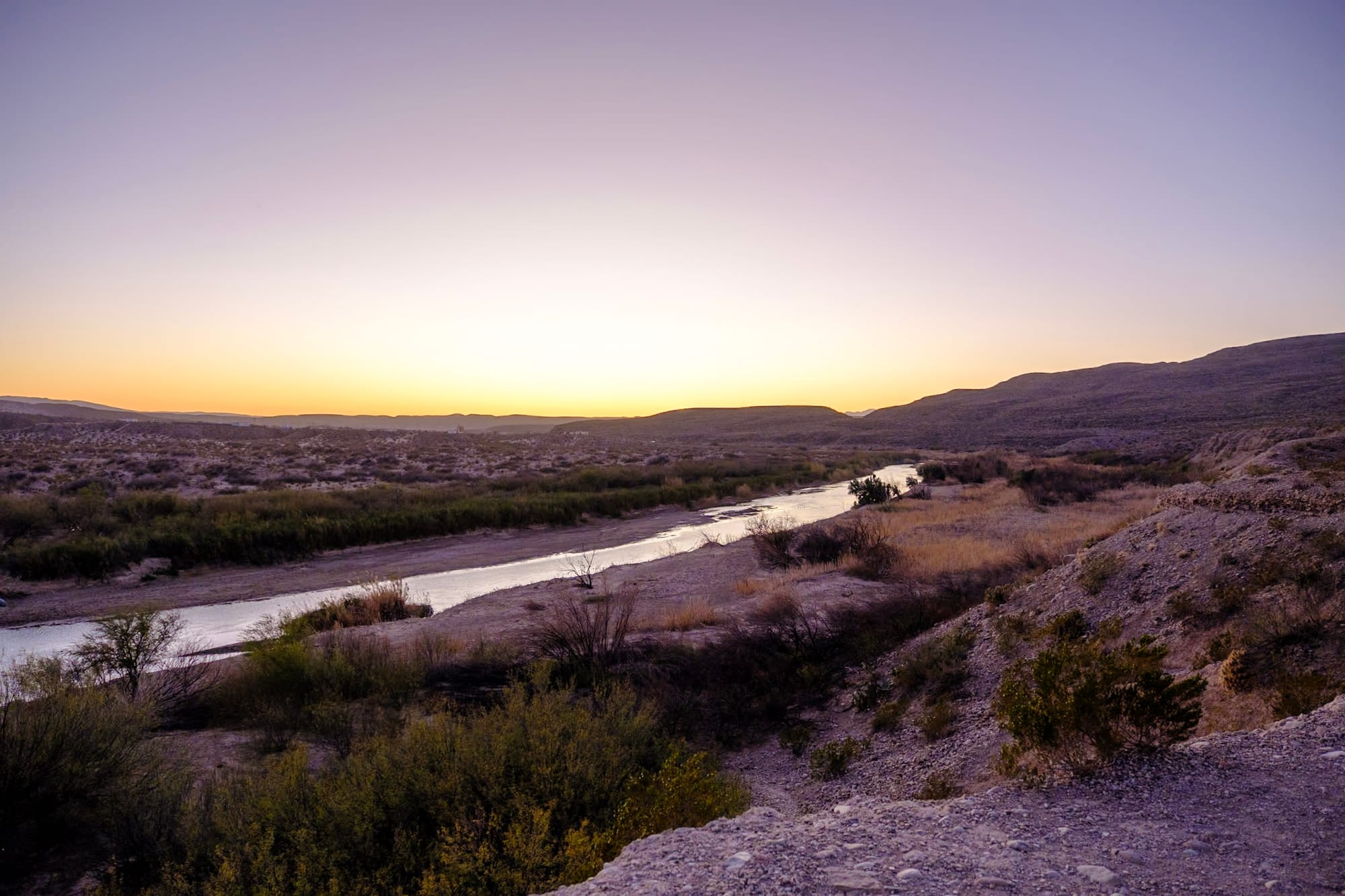
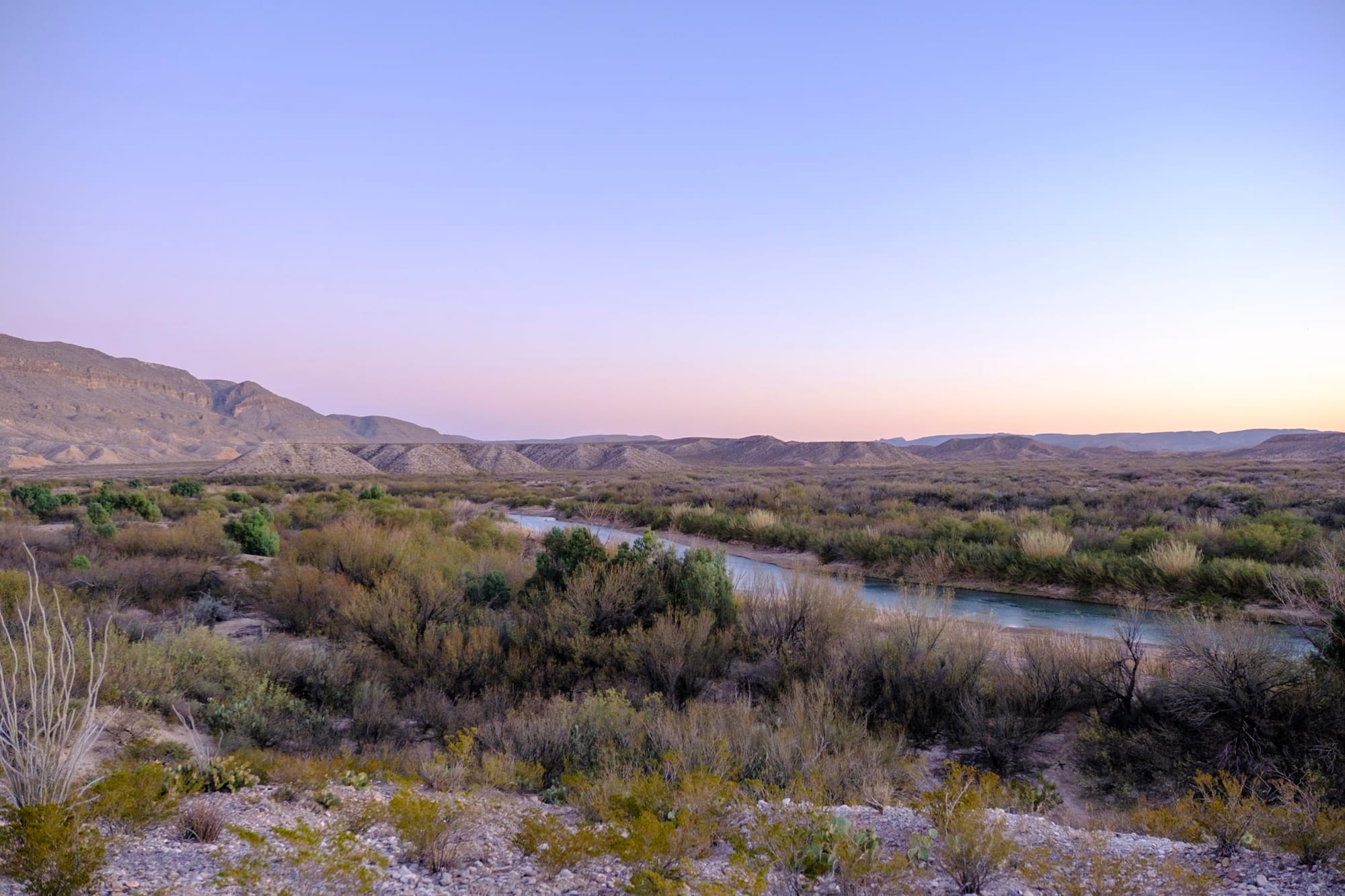
Side note – there's also an official border crossing in Big Bend, where park visitors can either take a small boat or wade across the river, and then walk or ride a mule to Boquillas. You can shop and go out to eat in the town, and then come back to the U.S. the same day. We wanted to do this, but sadly, the checkpoint was closed during the days we camped at Rio Grande. We'll hopefully do it next time we visit; it sounds super fun!
Anyway, then we drove down the rest of the road to the Boquillas Canyon trail parking lot. It was getting dark, and we decided to set up our chairs and stargaze. It really doesn't take long after sunset for the stars to come out there – by 8pm, they were starting to look amazing. But it was also getting cold and we were a little sketched out in that parking lot lol – it was super dark and quiet, besides the wind making the plants rustle and Hollie occasionally growling at who knows what – so we left after a while to go back to the campground.
Day 2
Sunday, and a full day off to explore Big Bend! We drove up to the Chisos Mountains, which are kind of in the middle of the park. This is another hub with a campground, visitor center, store, and a bunch of trails.
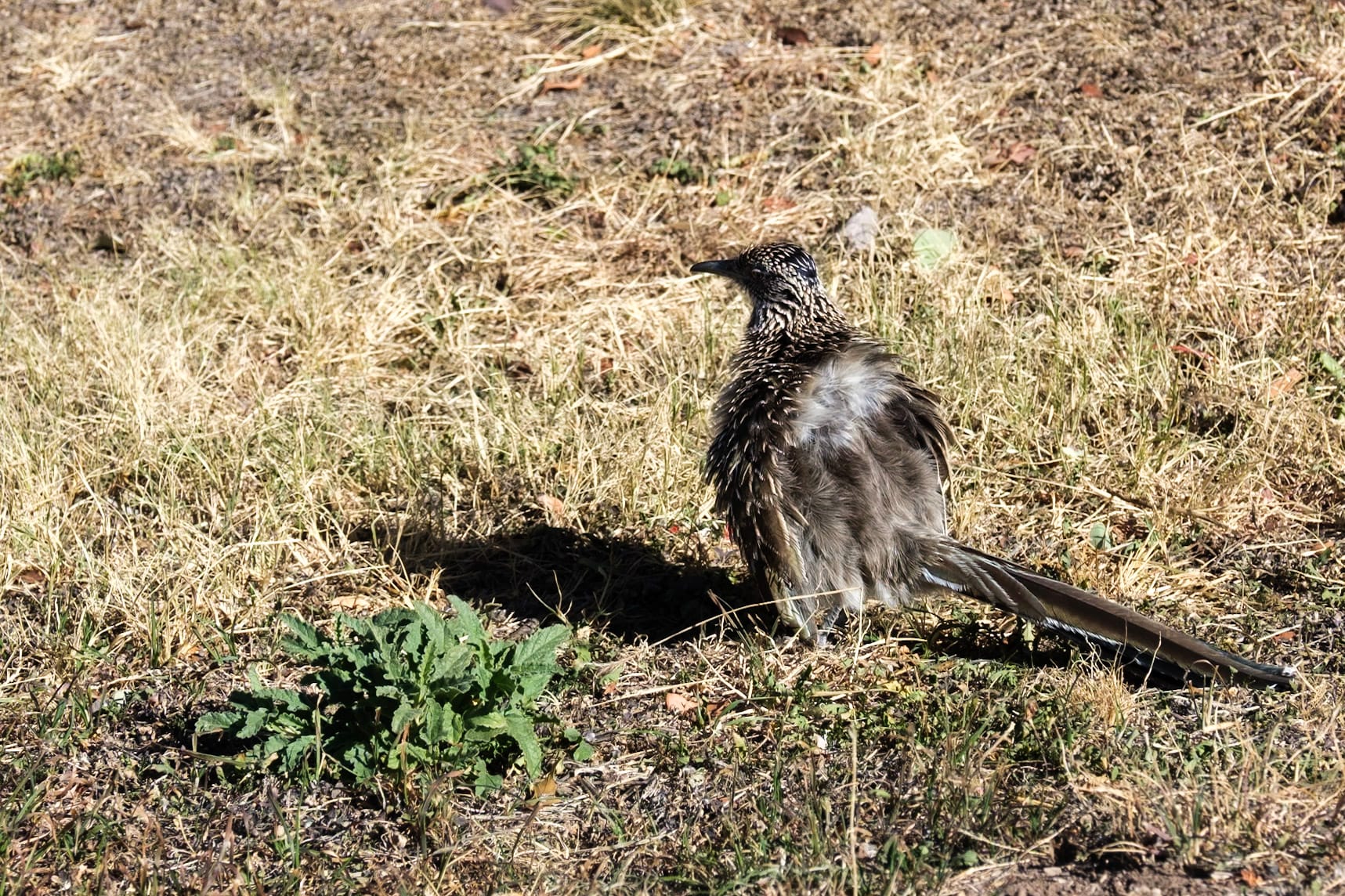
The drive up the mountains was beautiful and winding, and once we got out of the truck, we were surprised at how much colder it was up there! The highs for the day were in the upper 60s down at Rio Grande, but up here it was in the low 50s and windy. We were underdressed, but warmed up once we started hiking.
We hiked the Lost Mine Trail, which might be the most popular one in the park. It's about 5 miles roundtrip and rises 1,100 feet during the first half on the way up the mountain – we were out of hiking shape and that elevation gain was a struggle lol. But the scenery was incredible!
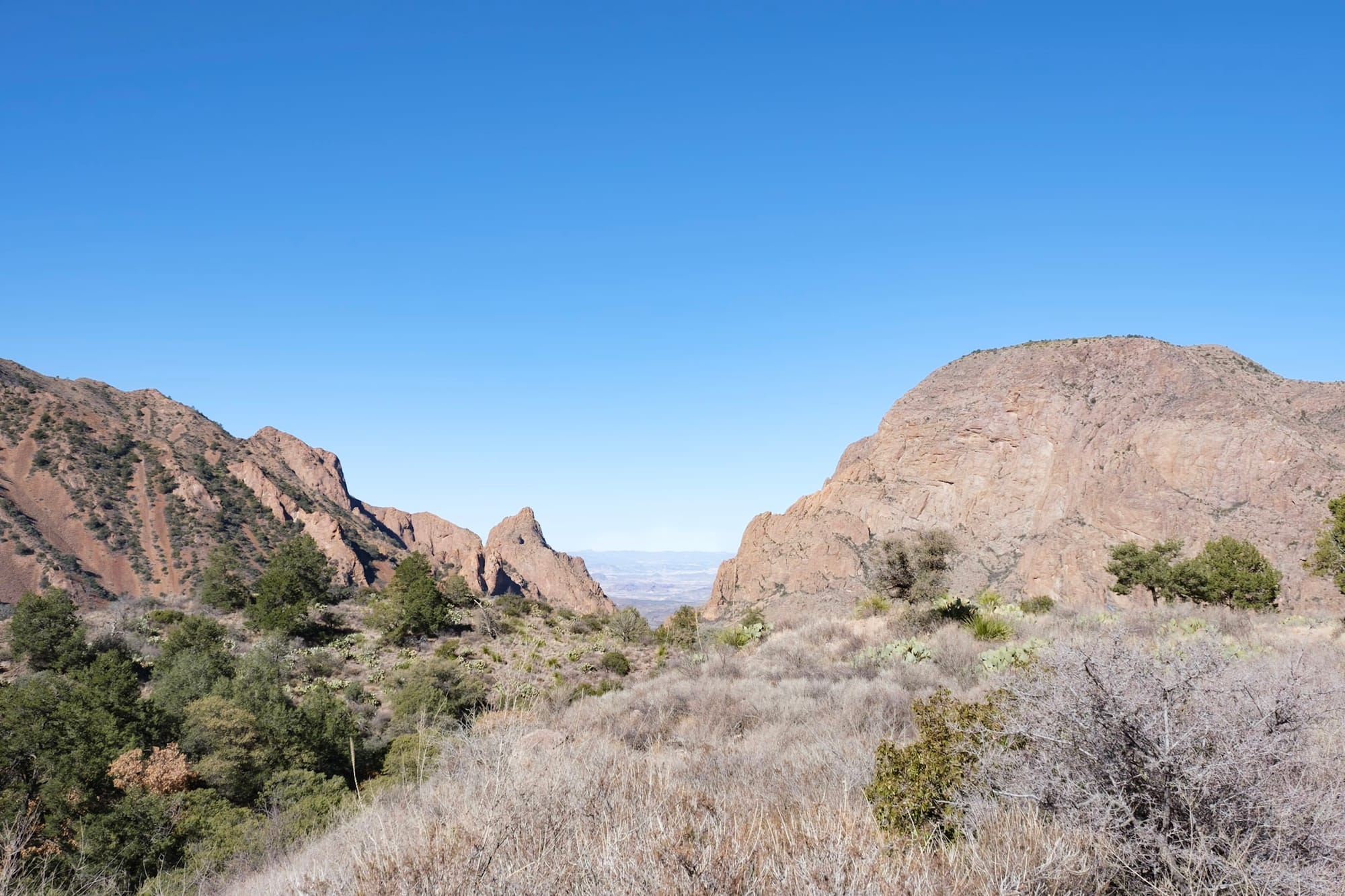
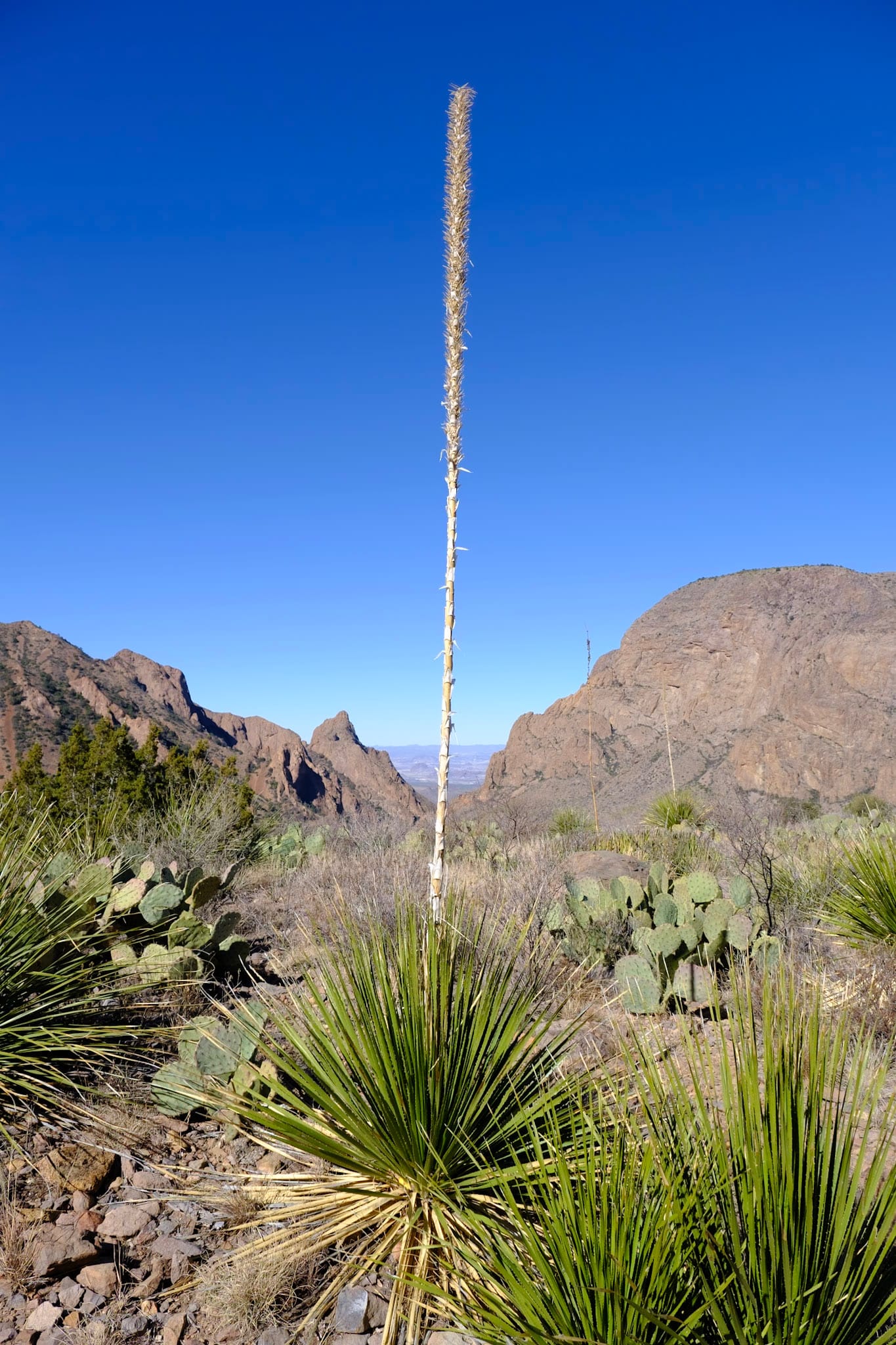
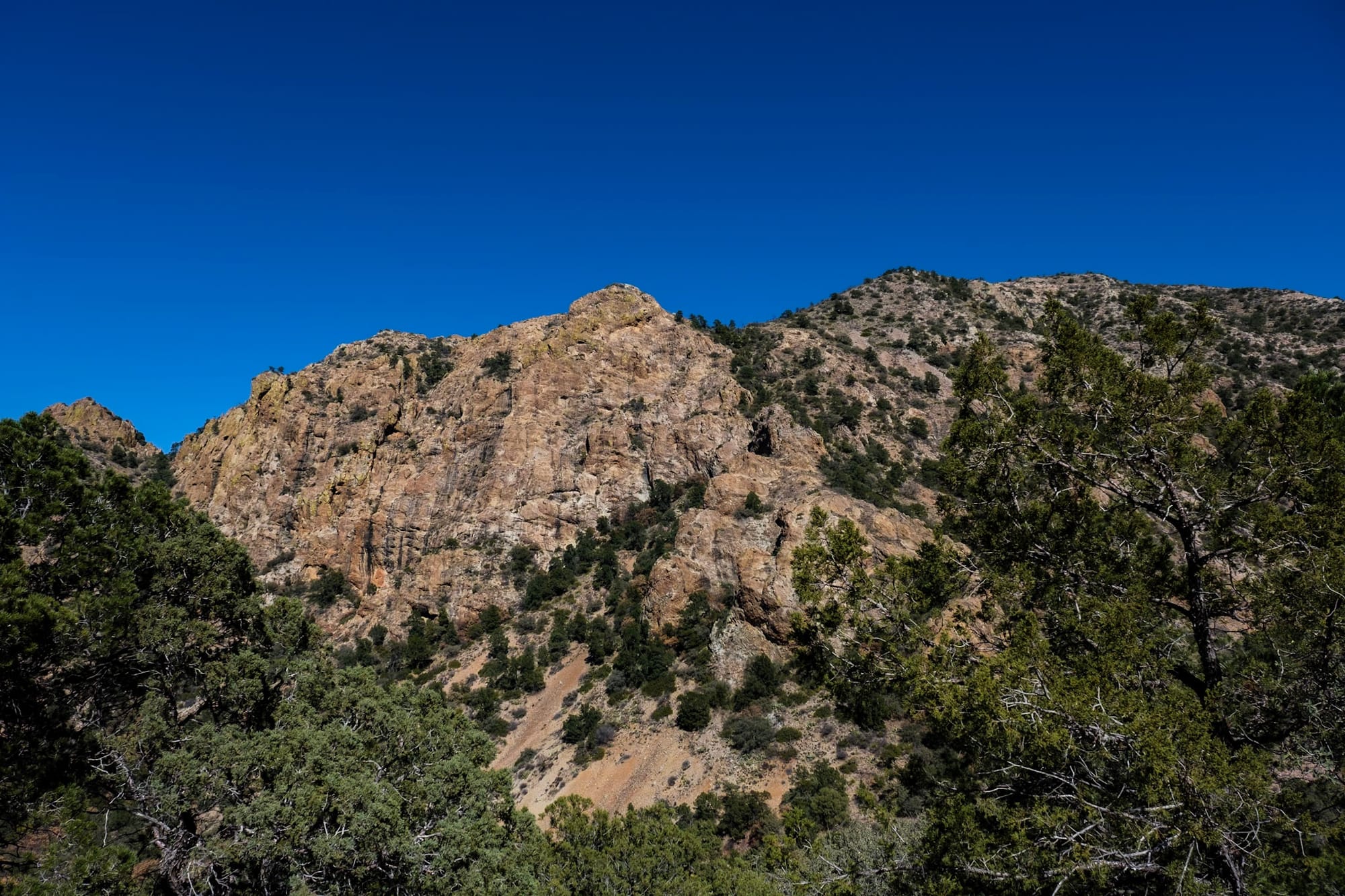
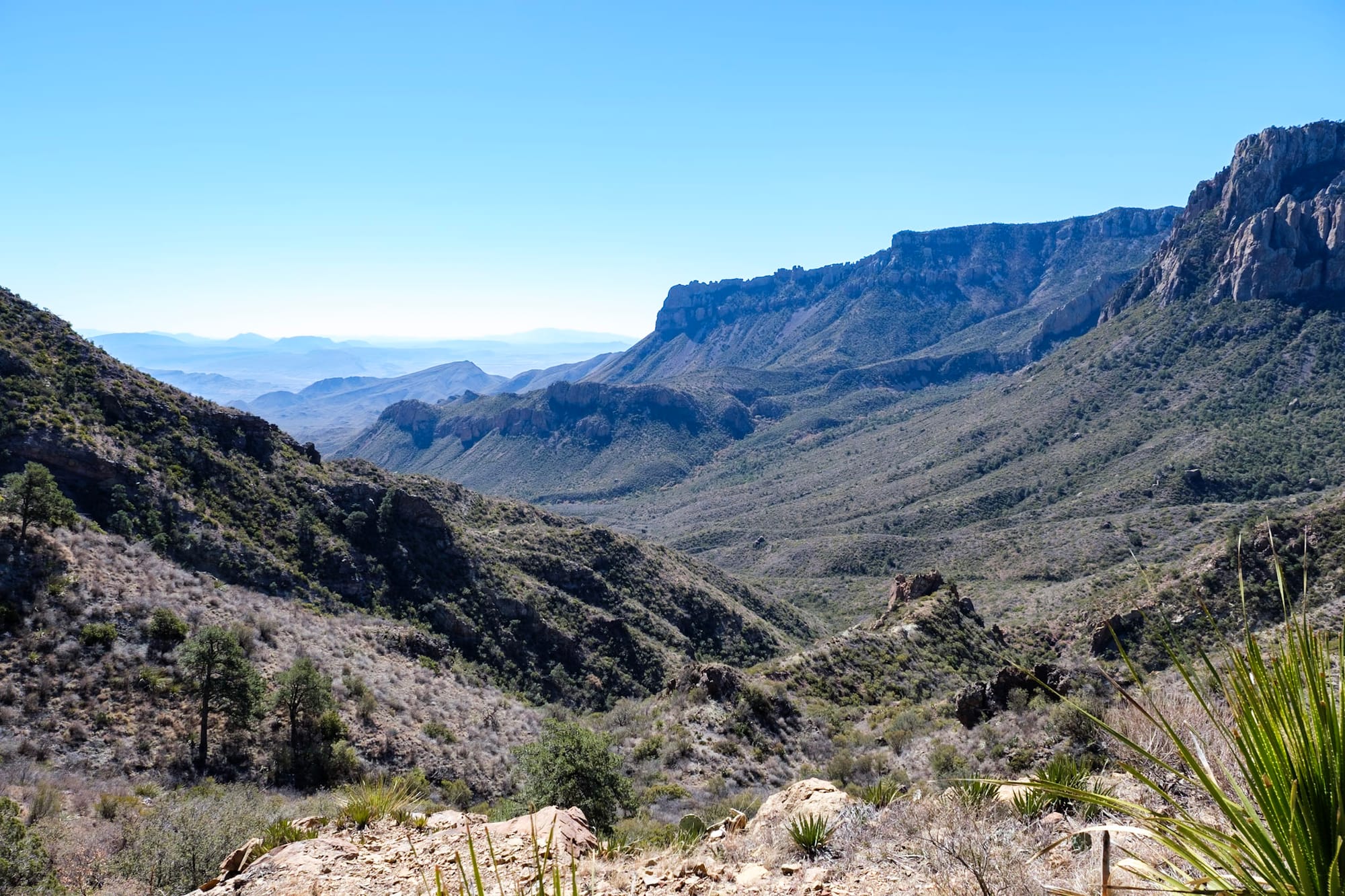
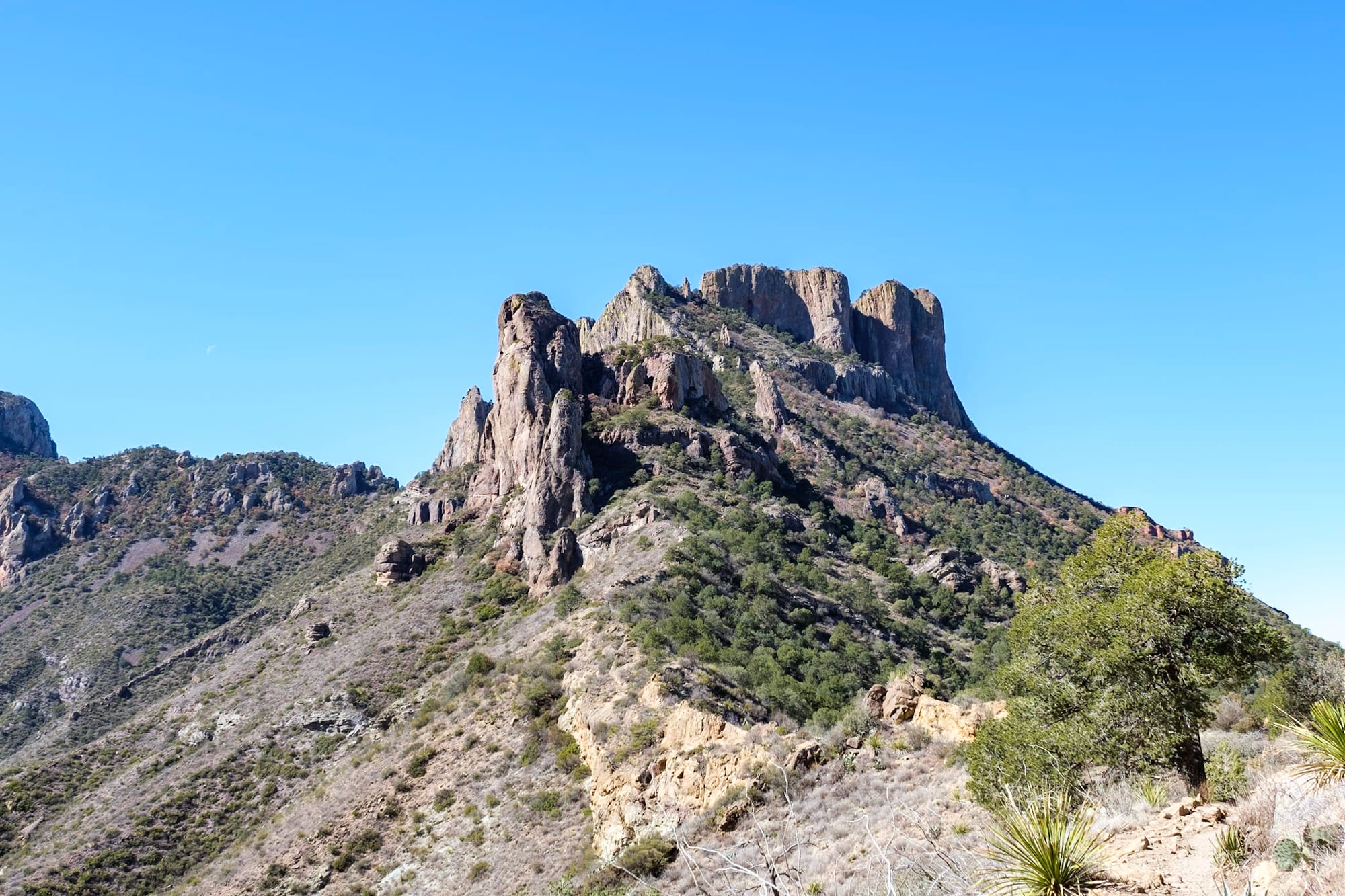
We rose high above the road and got awesome views of the Chisos Basin, Casa Grande Peak, and the other mountains. Finally, after a bunch of switchbacks and steep climbs near the top, we were up on the ridgeline, with 360 degree views of the Chisos and the desert way down below.
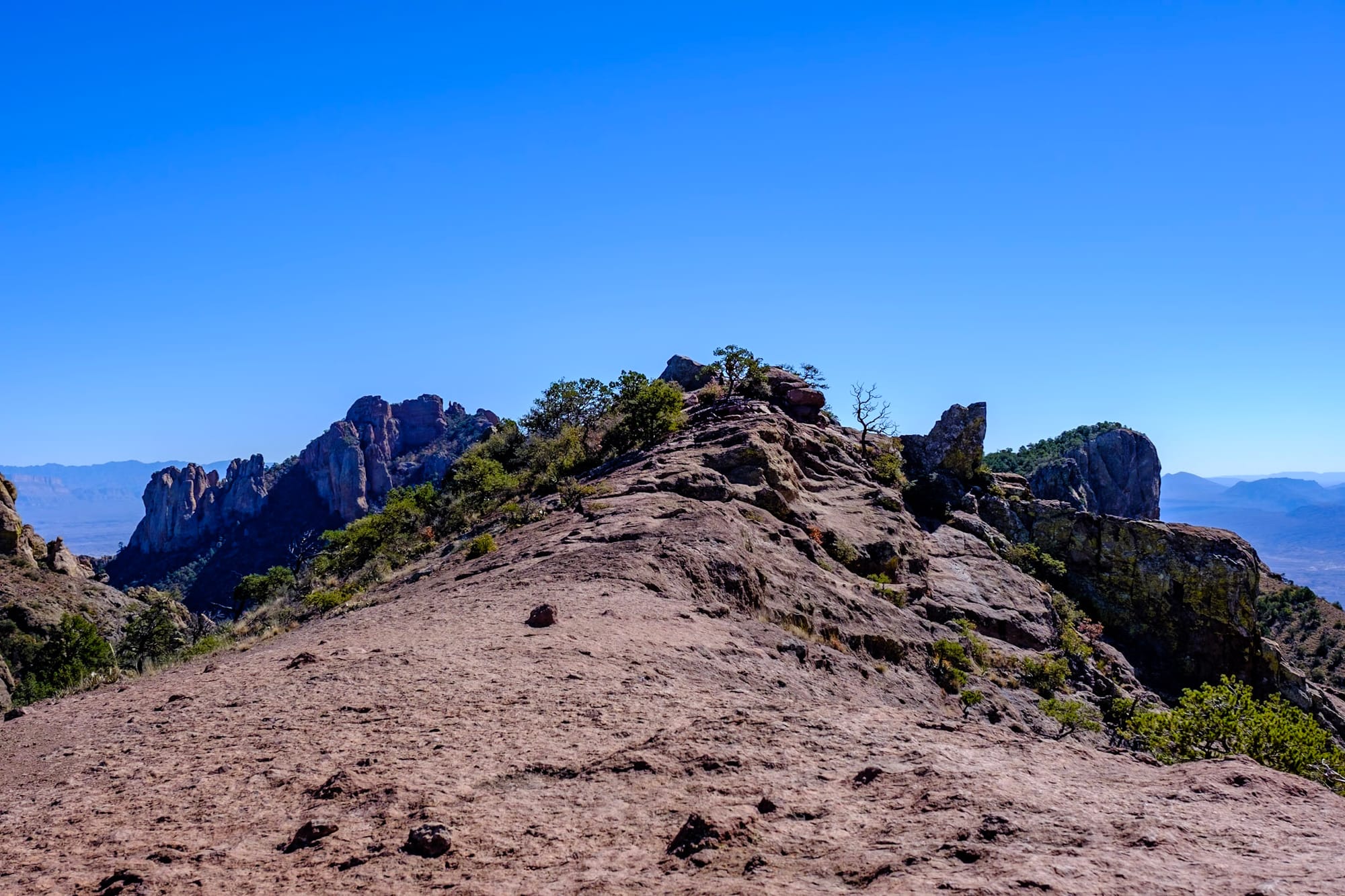
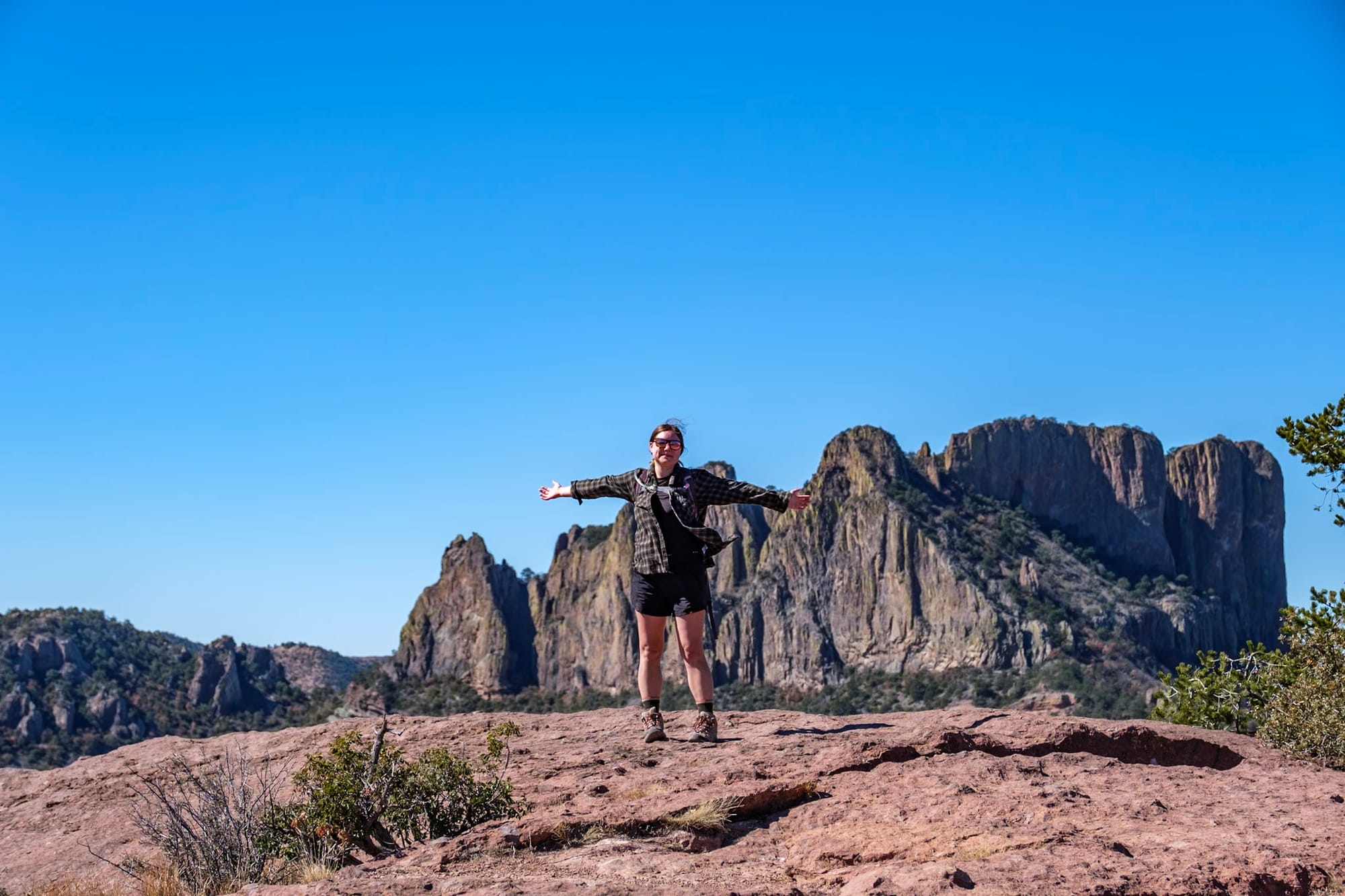
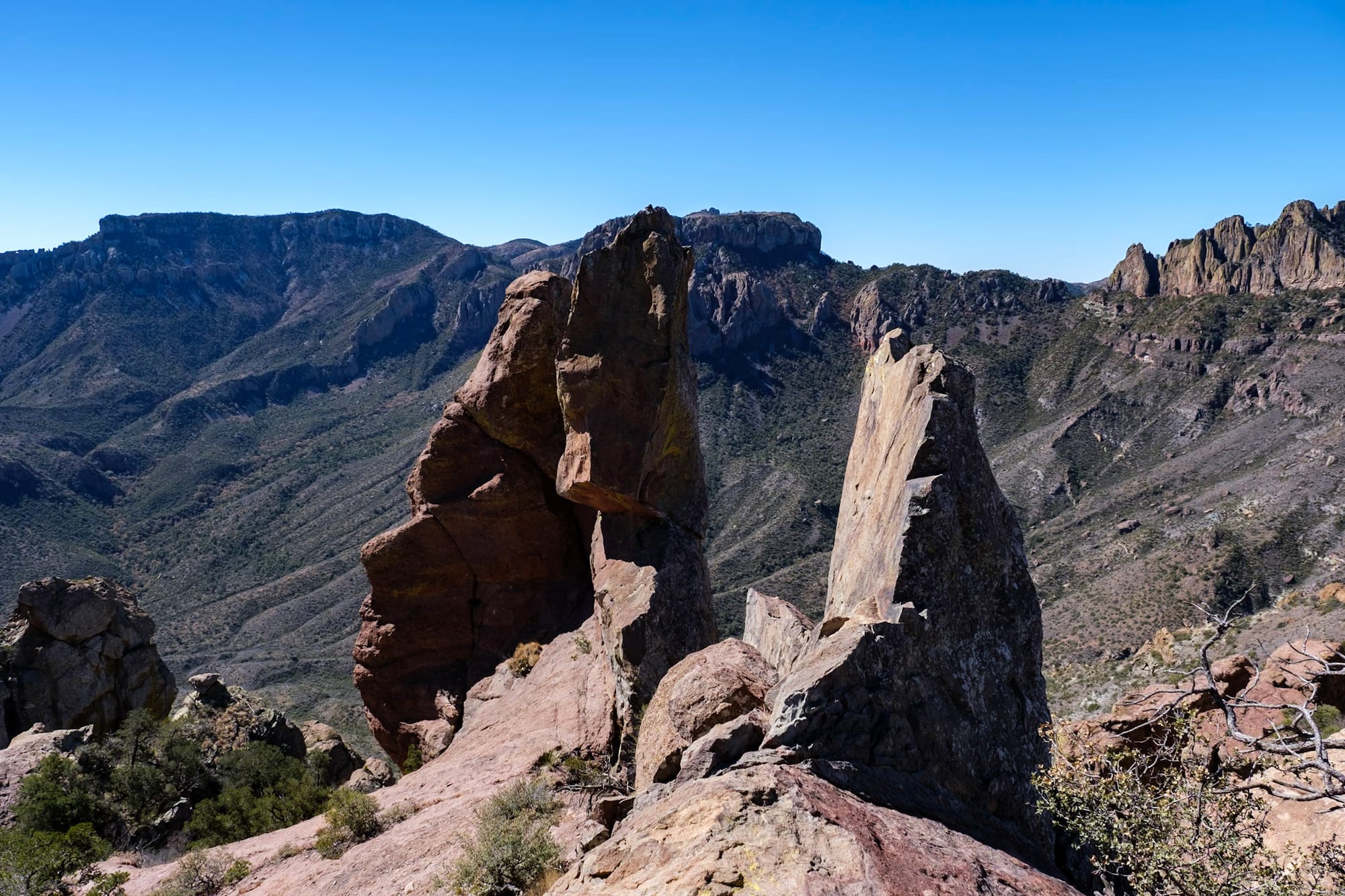
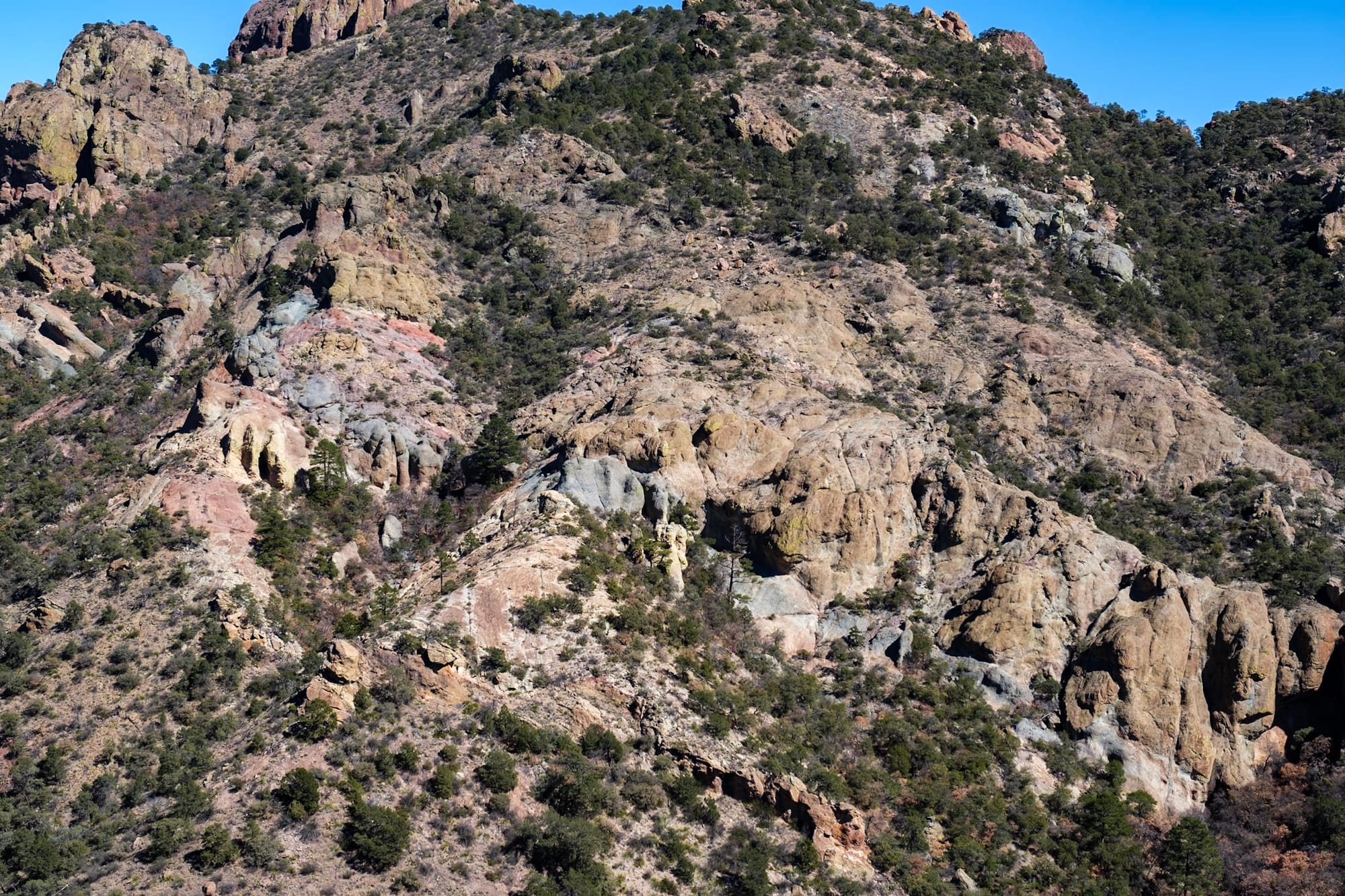
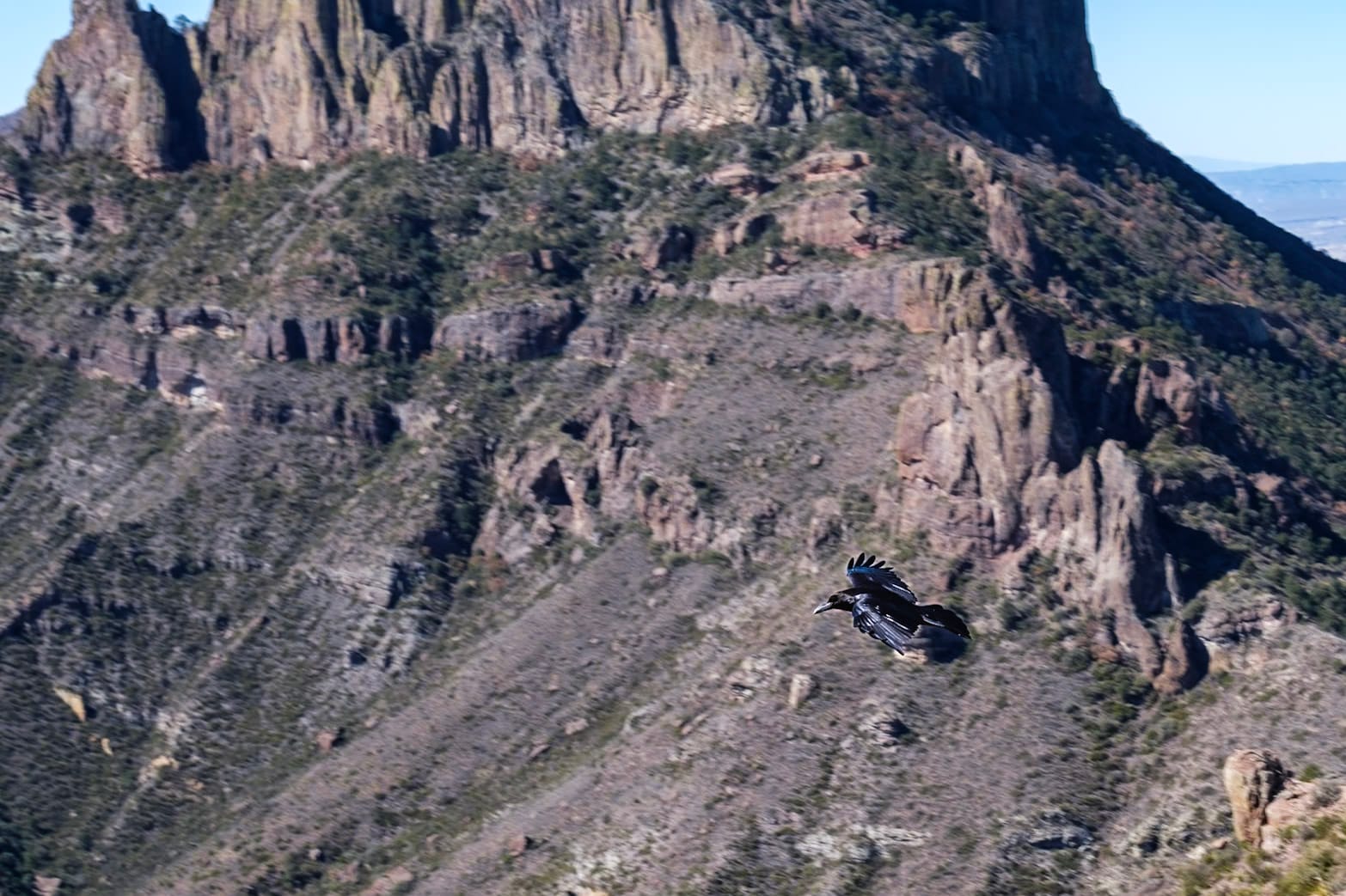

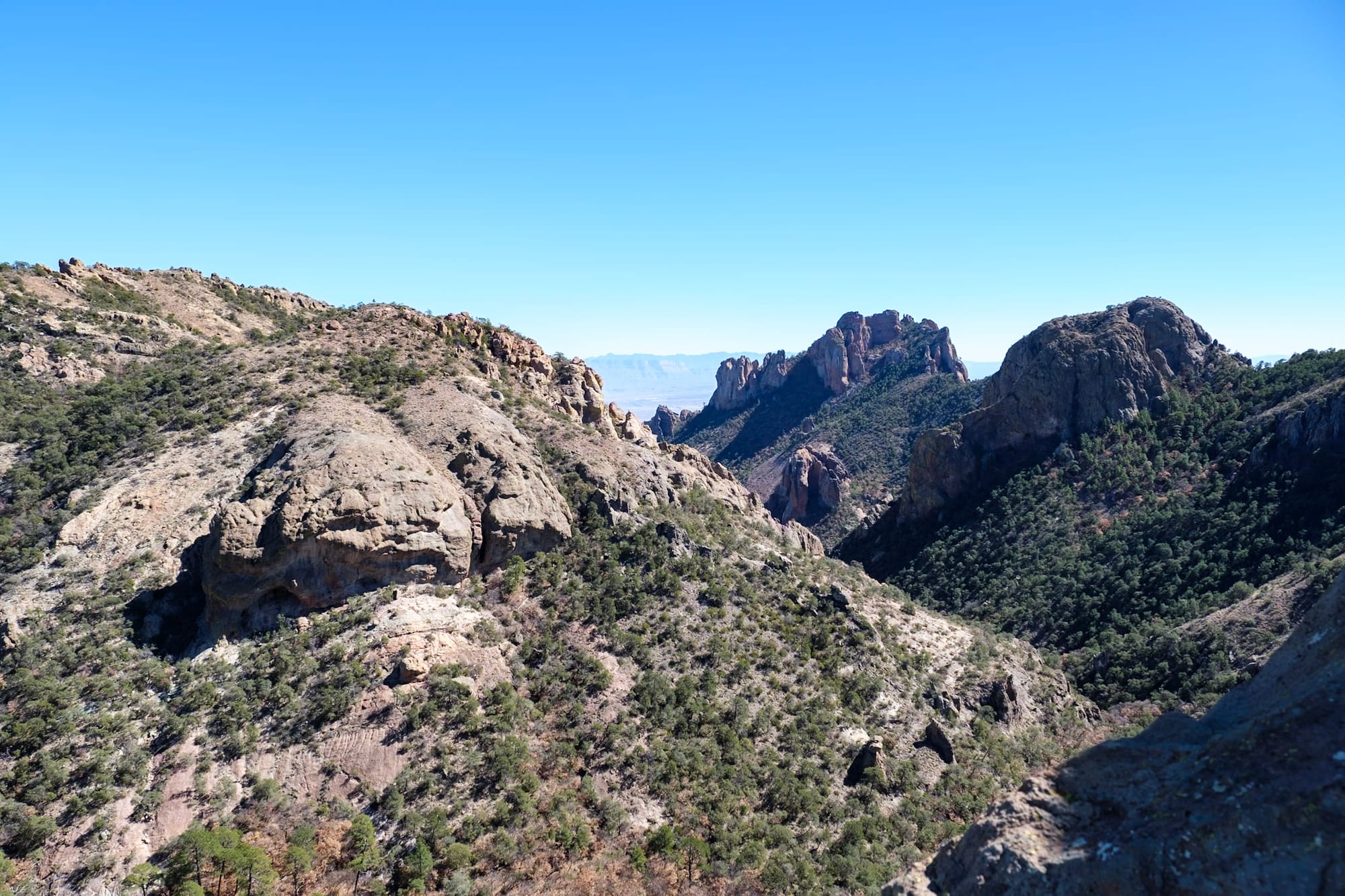
It was WINDY and cold up there! Big gusts of wind kept almost knocking us sideways. It was especially nervewracking when you got close to an edge. We tried to shelter from it against some big rocks as we rested and soaked in the views. But eventually, we were ready to escape the wind and head back. The last half was all downhill and much faster.
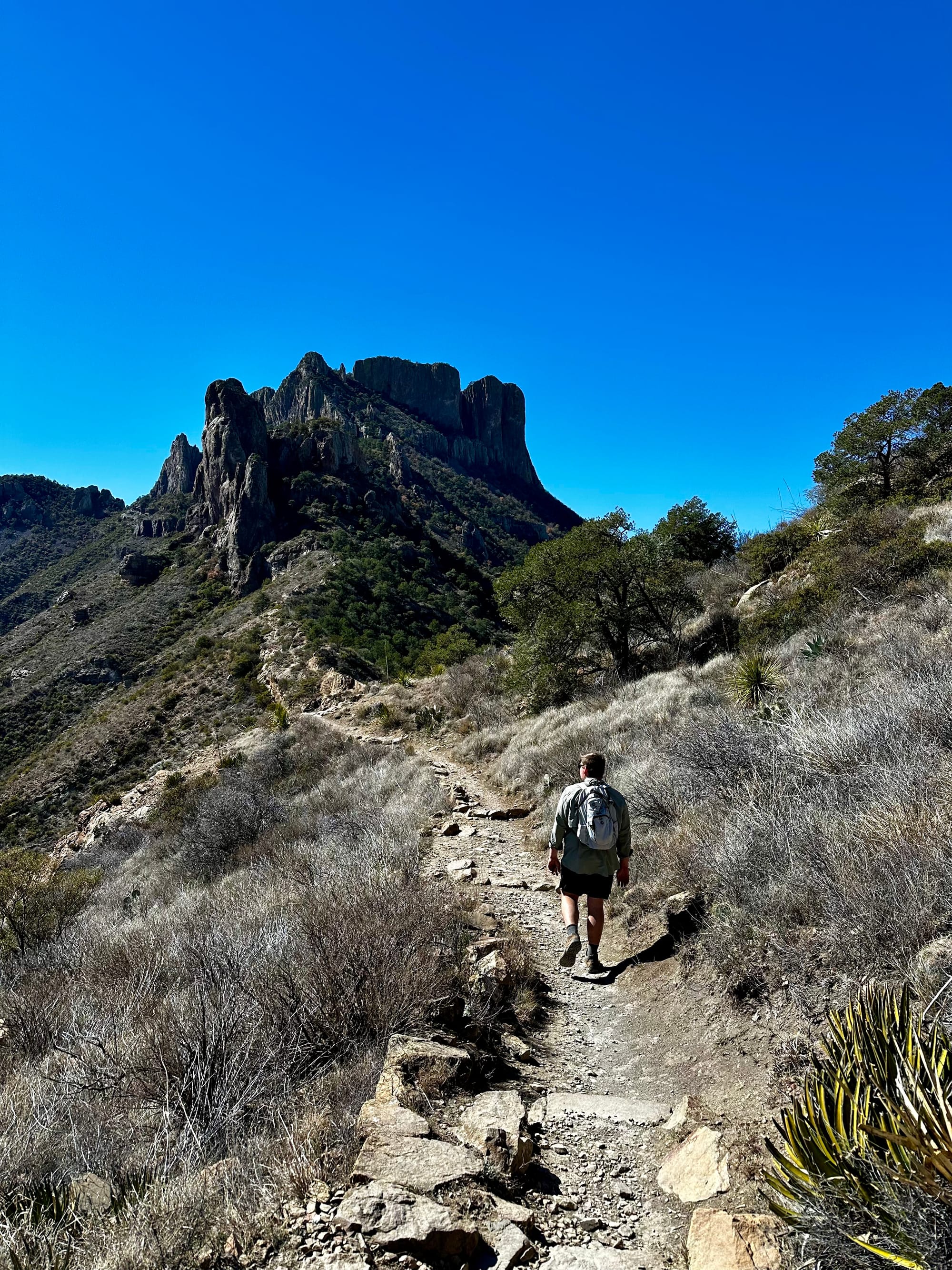
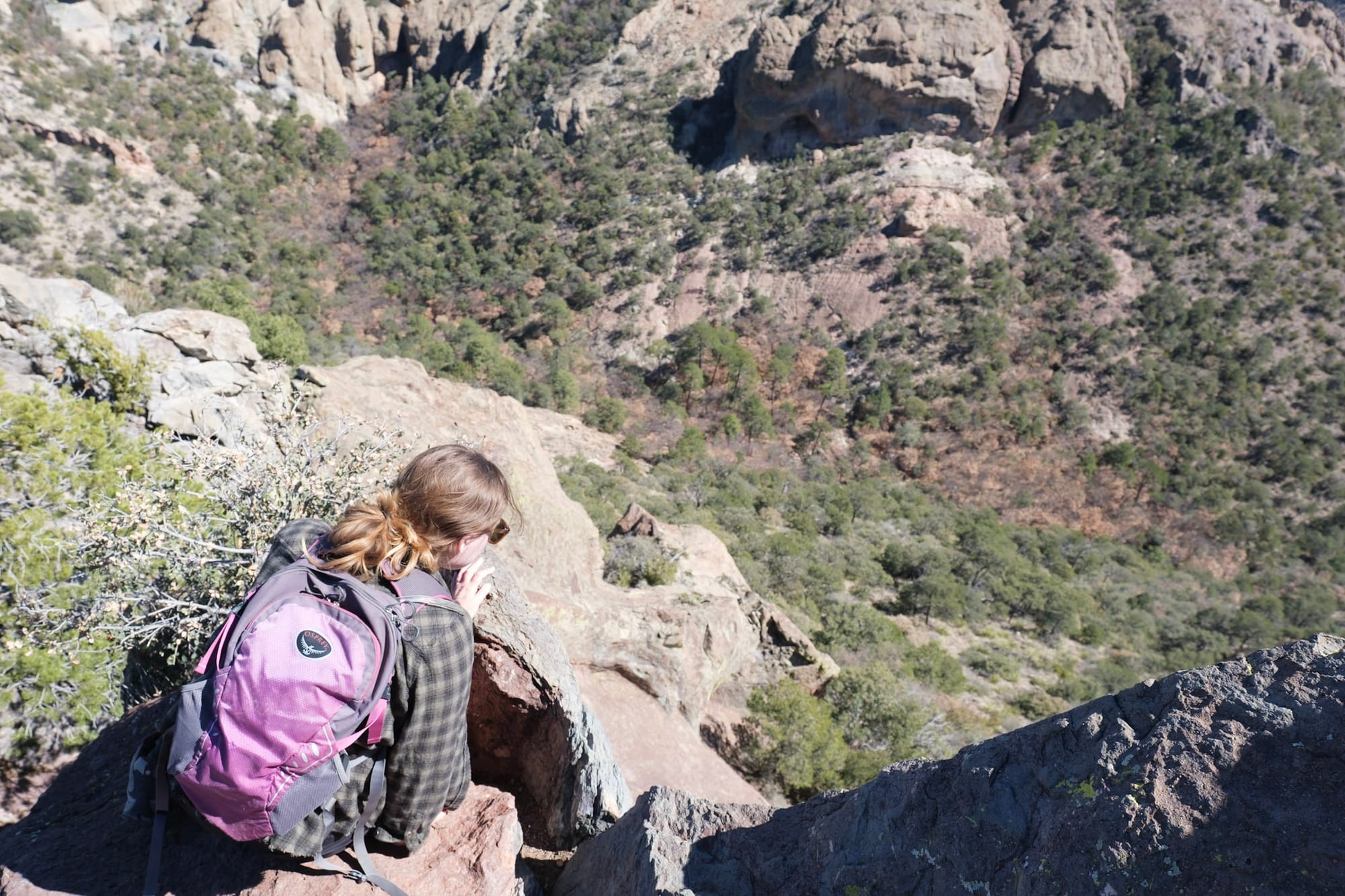
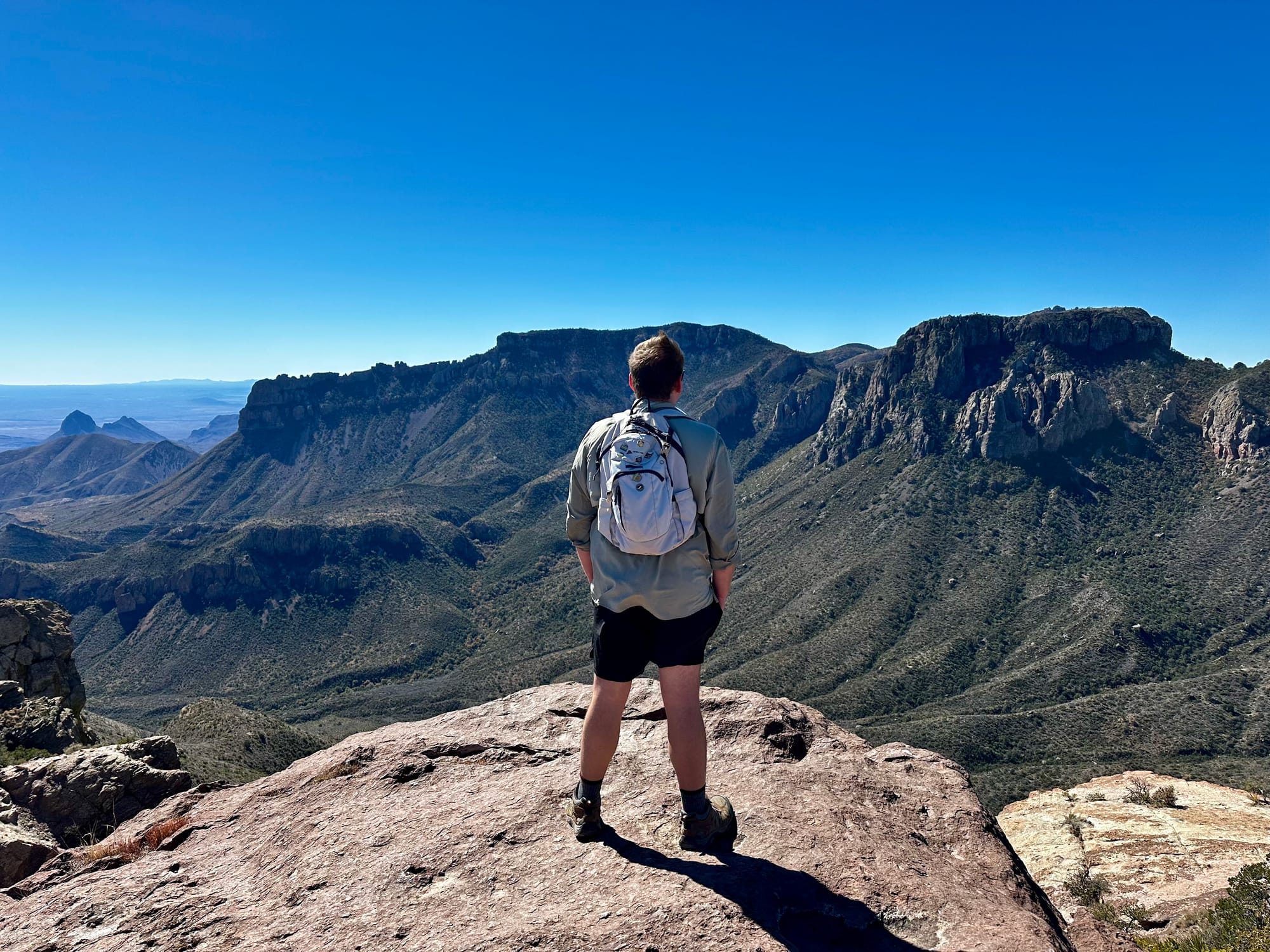
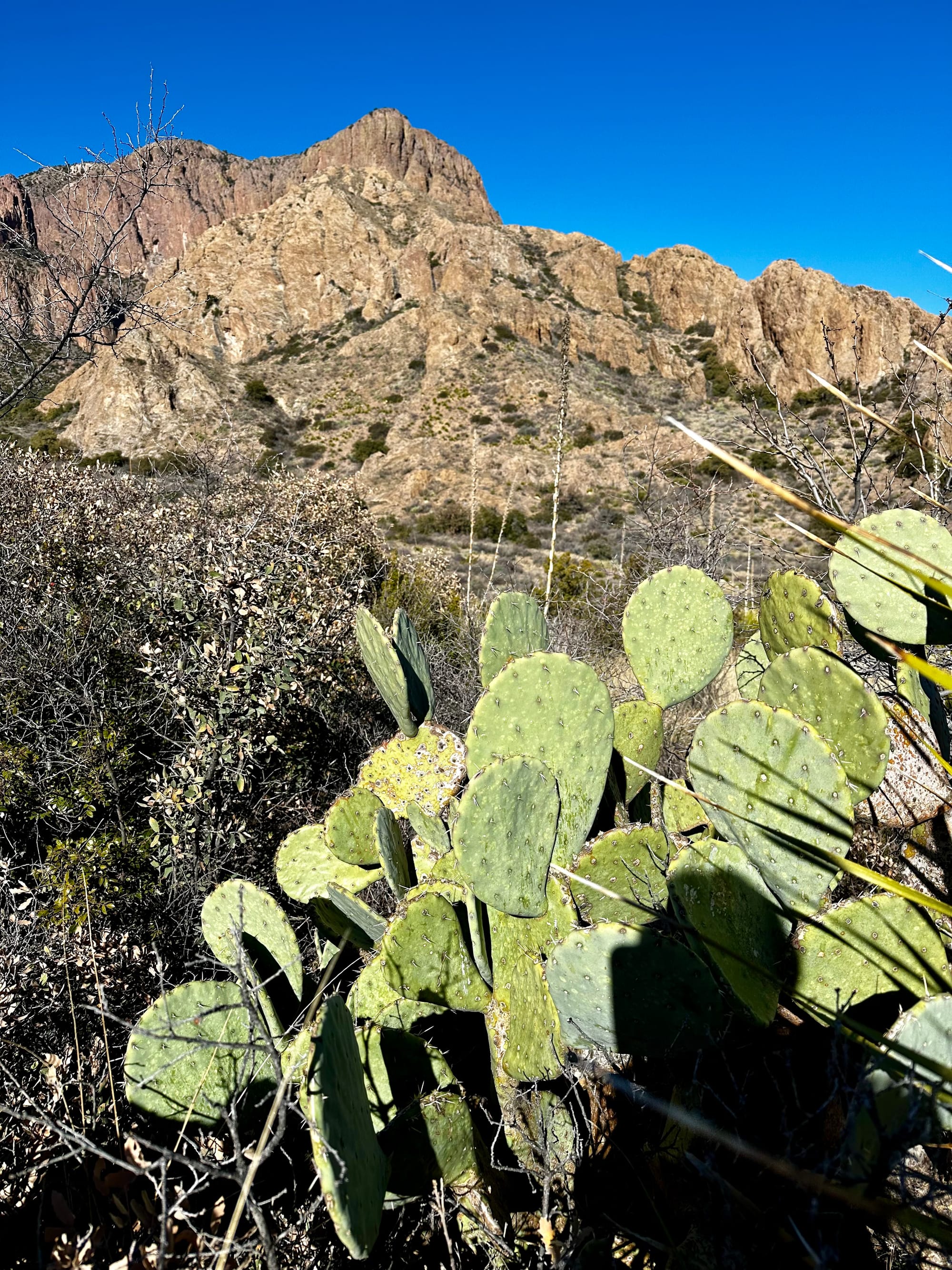
On the way back to the campground, we spotted a coyote on the side of the road and pulled off to get a closer look from the truck. He was just as curious about us and stopped as if he was letting Joey take photos of him, haha – it was really cute. After a while, he laid down. But when we opened the door to see if we could get a bit closer, he started running away.
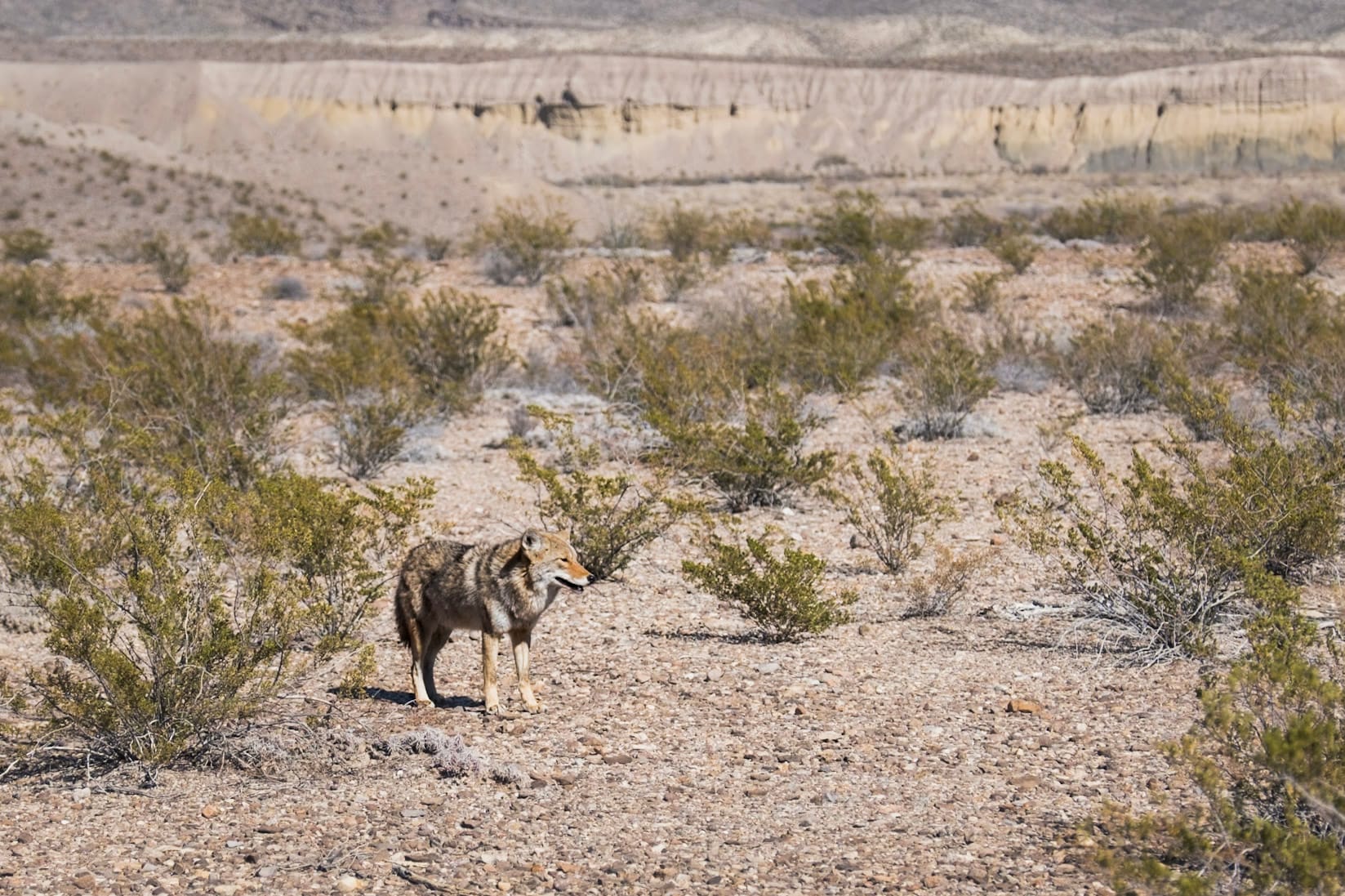
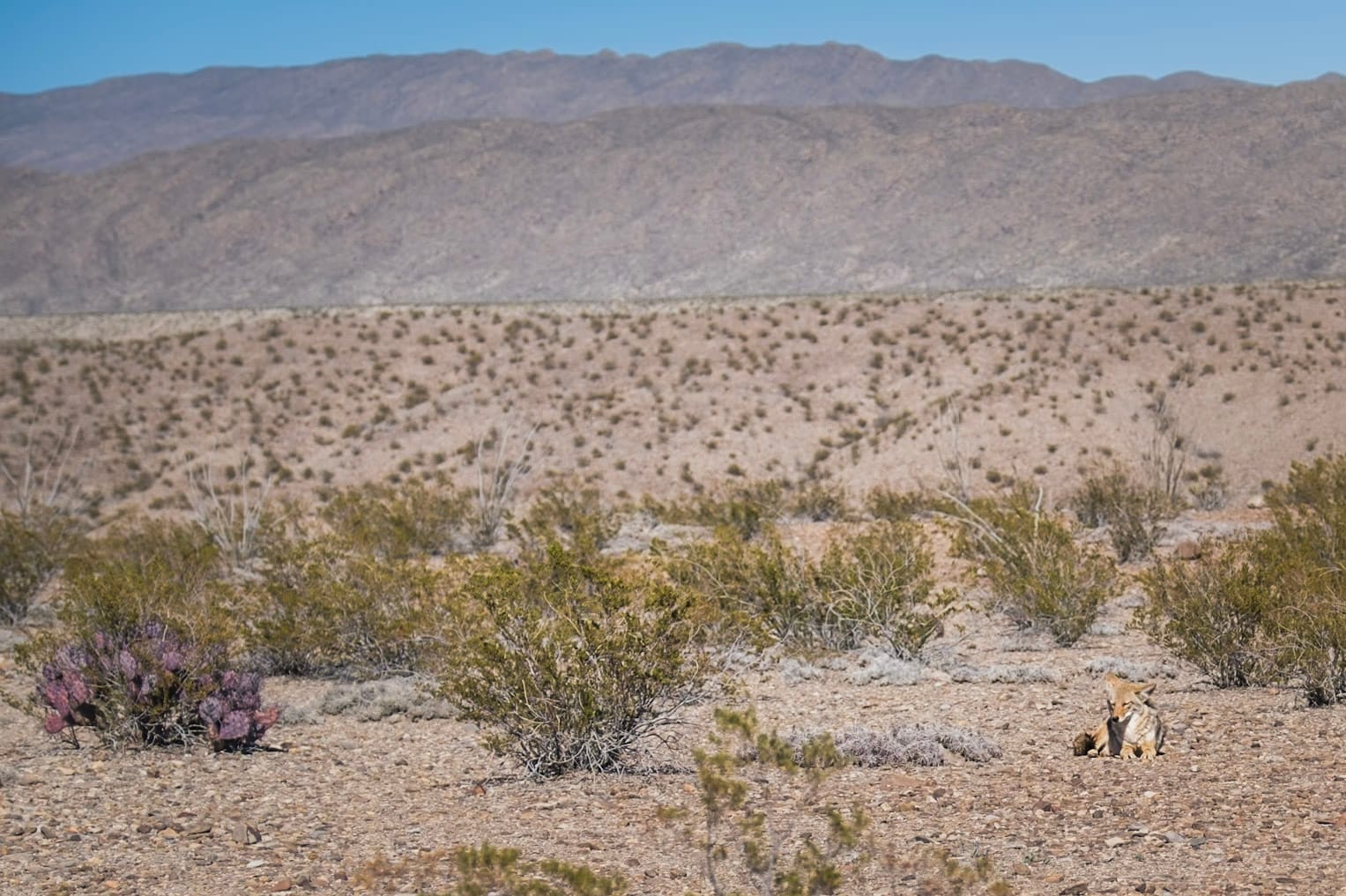
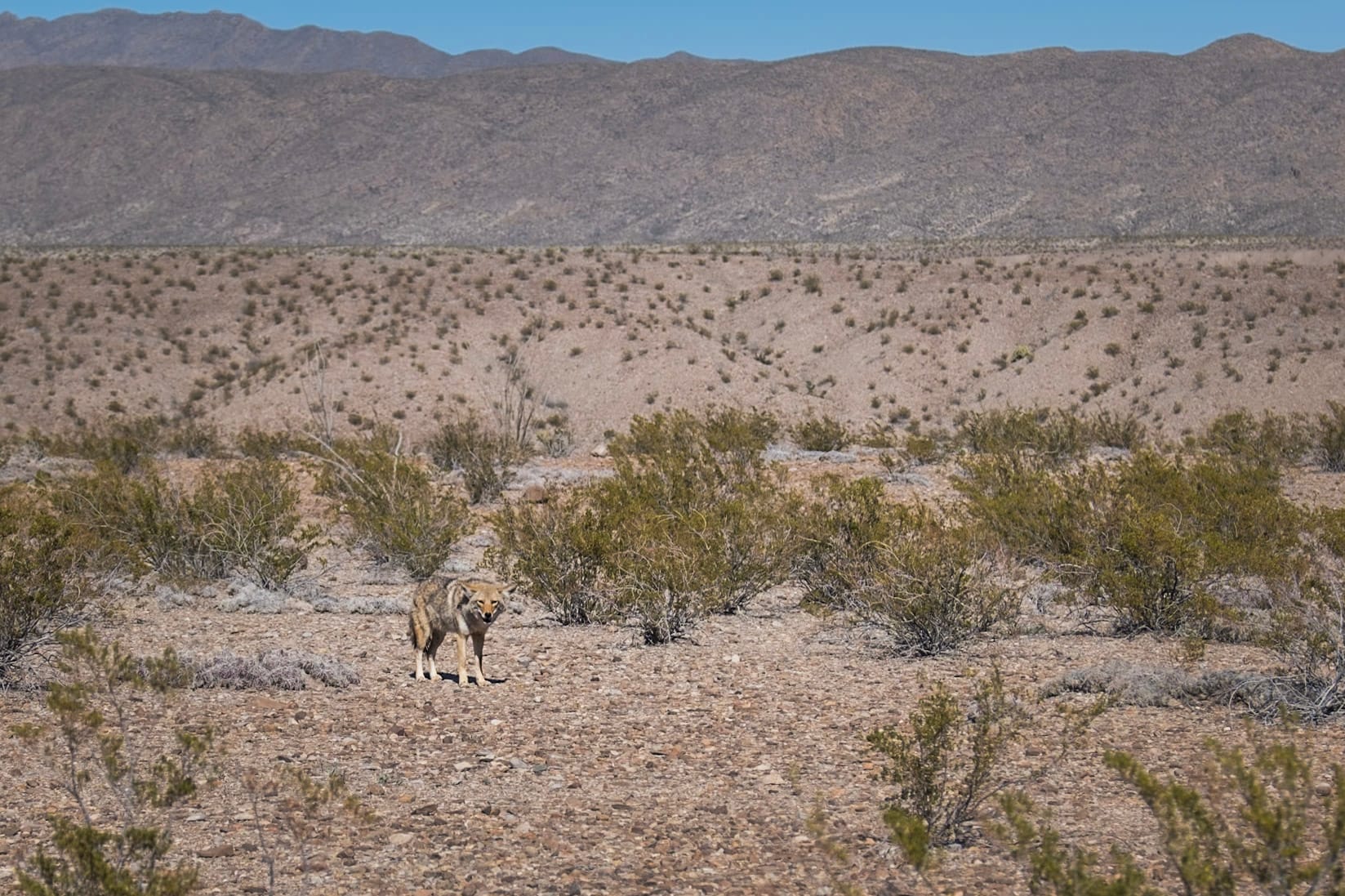
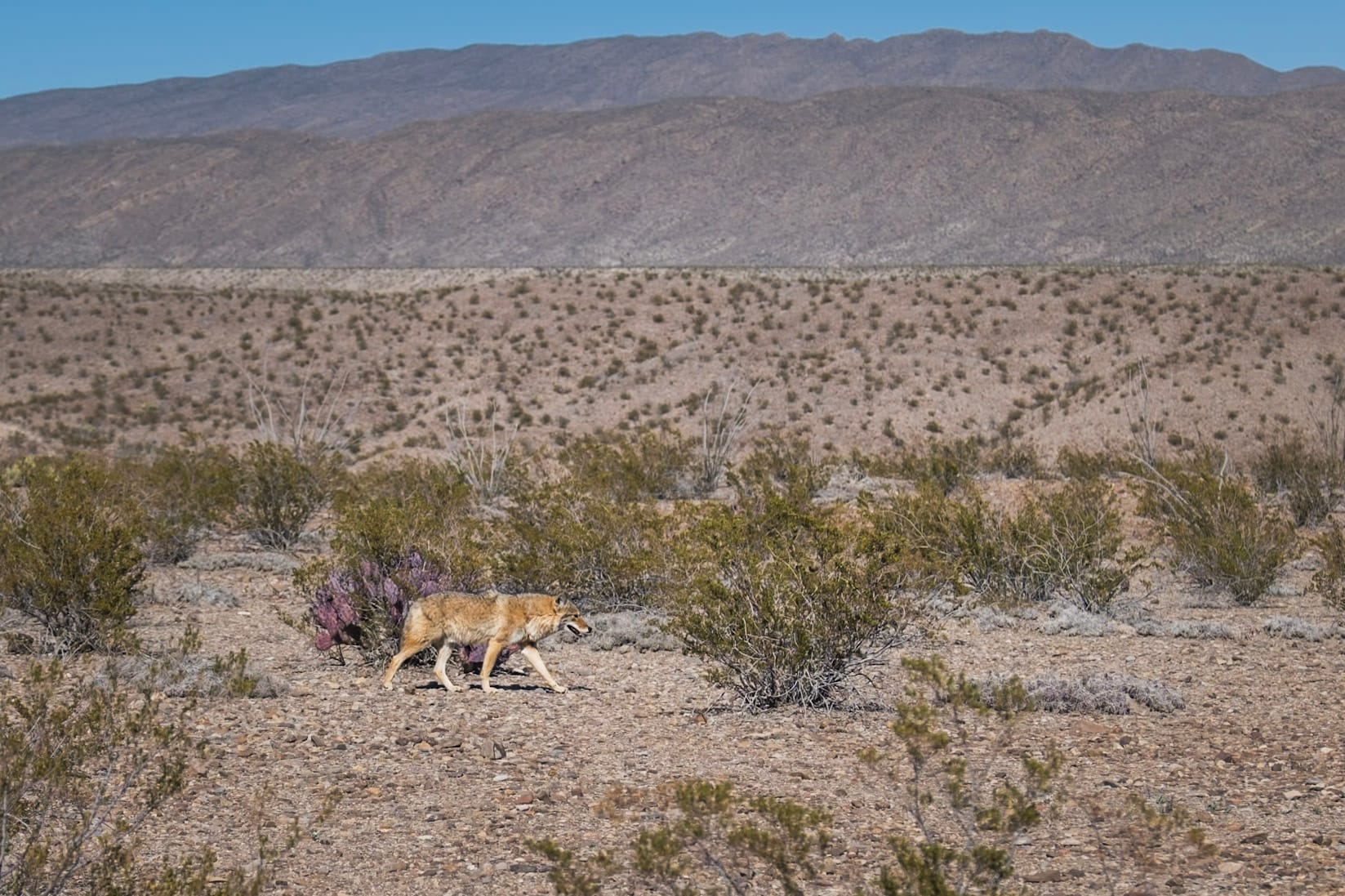
We drove back to the campground, rescued Hollie from the RV (she wasn't allowed on any trails in Big Bend), ate dinner and hung out for a while, and then went back out to have a sunset and stargazing party. Ten minutes down the road was the Rio Grande Overlook, a beautiful viewpoint overlooking the desert and the huge mountain wall (which are the Sierra del Carmens in Mexico). We set up our chairs and the camera and settled in with a 6-pack for the evening.
The sunset was gorgeous, lighting up the wall fiery pink again, and then the stars came out. This was a much better spot for stargazing than the night before, higher up and wide open (and we weren't paranoid anymore lol). We couldn't believe that no one else stopped by the entire time. The stars were bright and there were tons of them everywhere you looked, and you could see the Milky Way. Joey's photos, which capture way more stars than we could see, turned out amazing.
When we got back to Rio Grande that night, we realized why people might not feel the need to leave to go stargazing – the stars at the campground were basically just as good.
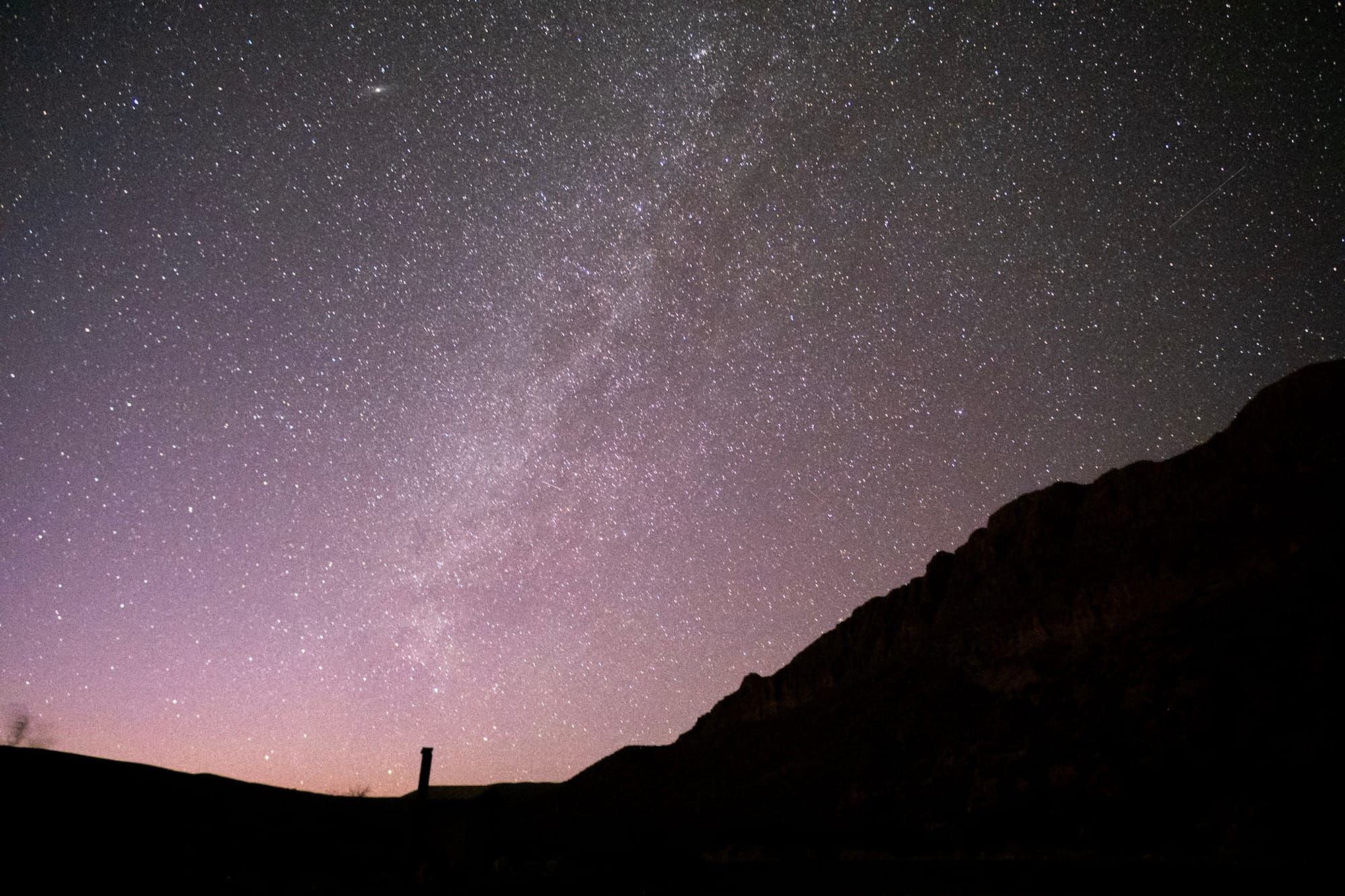
Day 3
Back to work today. I mentioned that there's almost no cell or internet service inside the park. That's why we got Starlink this year!
Besides a few frustrating hiccups (which I'll cover later) Starlink is awesome. We got it set up Monday morning and had perfect internet for working all day. It uses a decent amount of battery power, but we also keep our solar panel set up all the time while we're dry camping (which works great as long as we have decent sun) and we also got a generator this year to keep us afloat on non-sunny days. We feel pretty confident about our off-grid setup – our goal is to do more remote and free camping while we're in the southwest.
That morning, we also saw our first javelinas! There were two of them, grazing on grass across the road at our neighbor's campsite. They were bigger than I expected. I walked over there to get some pictures on my phone. Apparently, they can get aggressive when it comes to food (and you're supposed to pack everything away at your campsite at night) but overall they'll leave you alone.
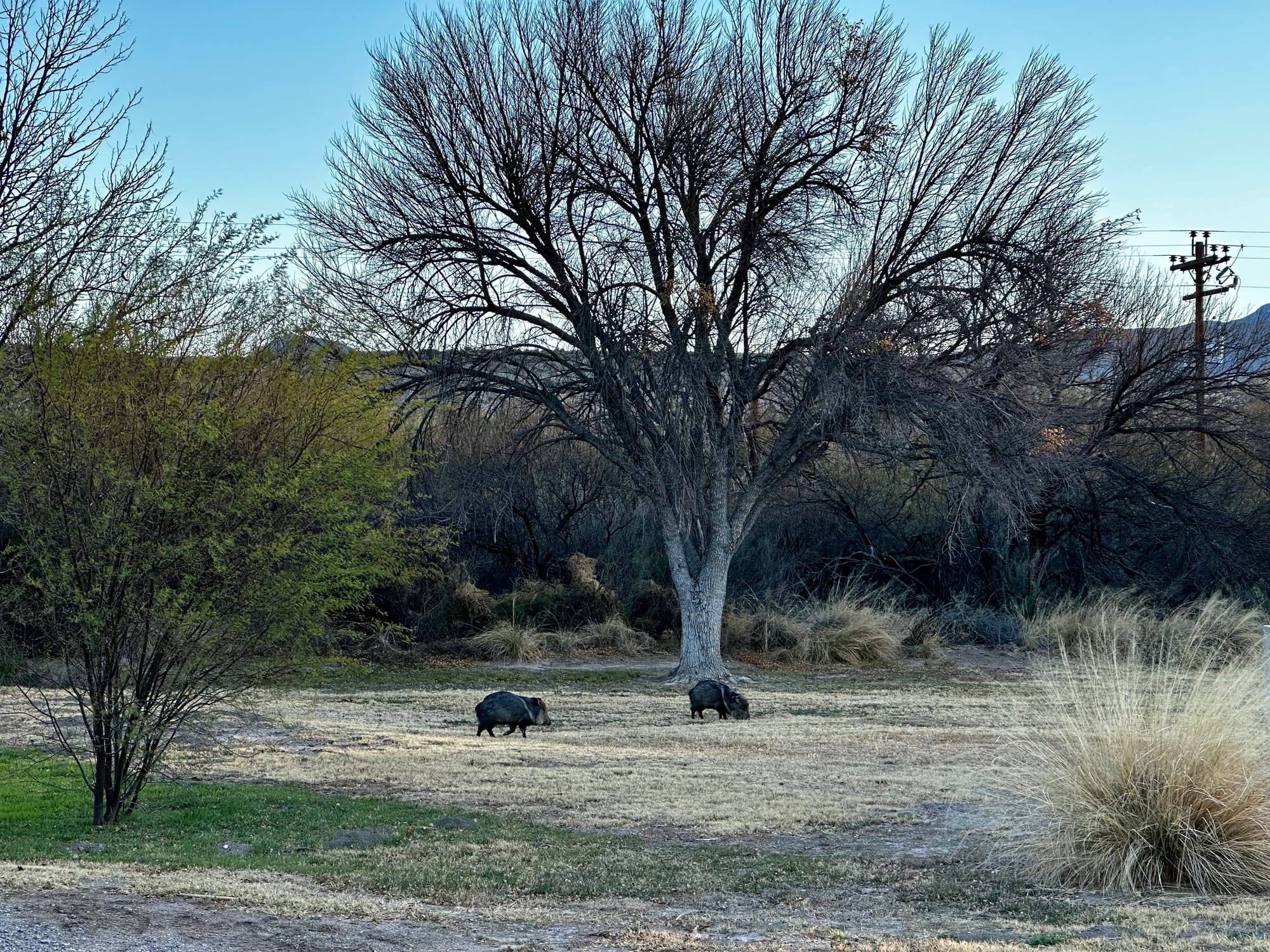
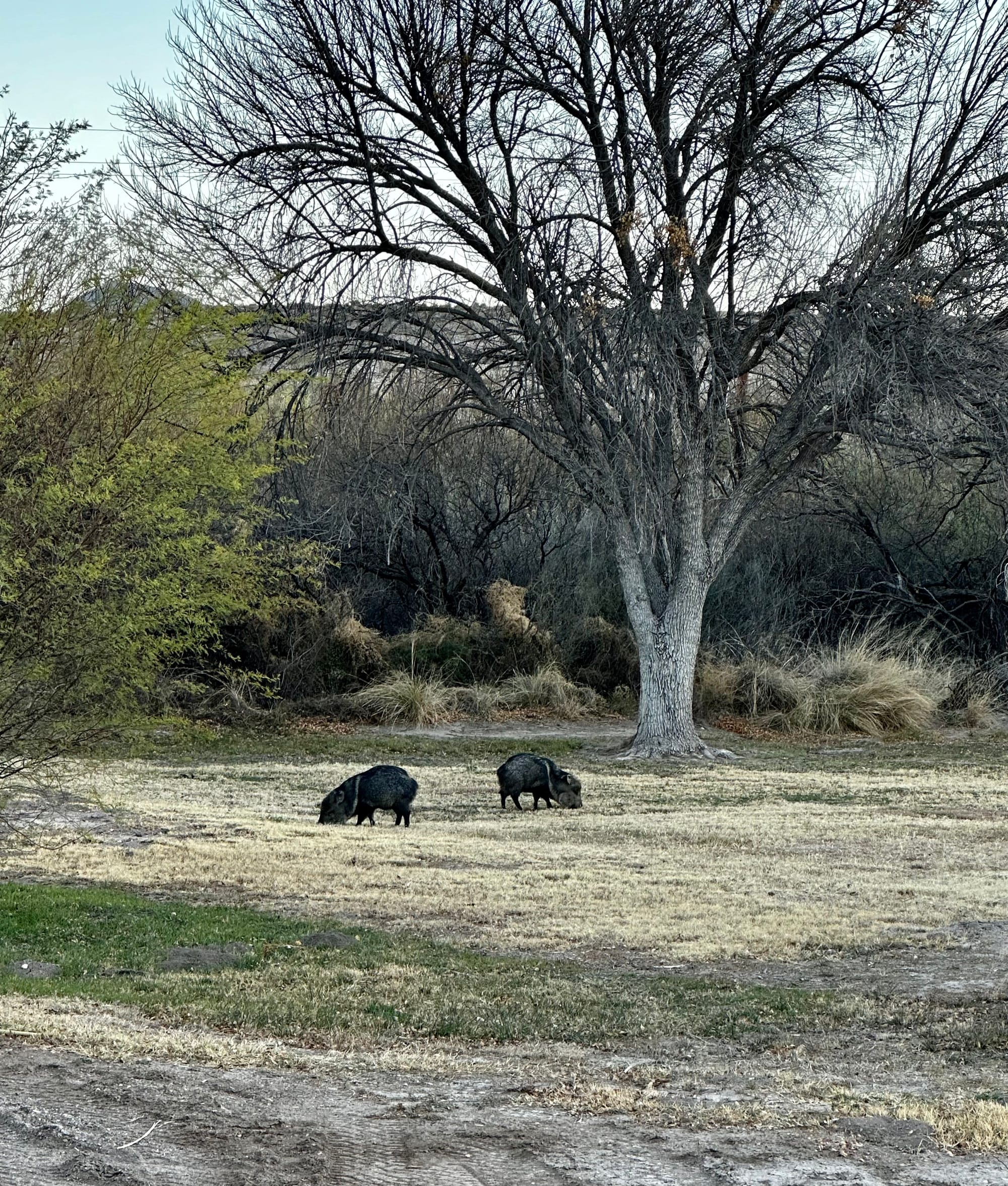
Javelinas!
After work, we hiked the Boquillas Canyon Trail. It's short, less than two miles total, but gorgeous. It follows the Rio Grande into Boquillas Canyon, which is huge and beautiful. You can hike deeper into the canyon for a while, alternating between the sandy shores and rockier climbs higher up. There were a few places we could've crossed the river just to say we were in Mexico, but we didn't (don't worry, border patrol officer reading this).
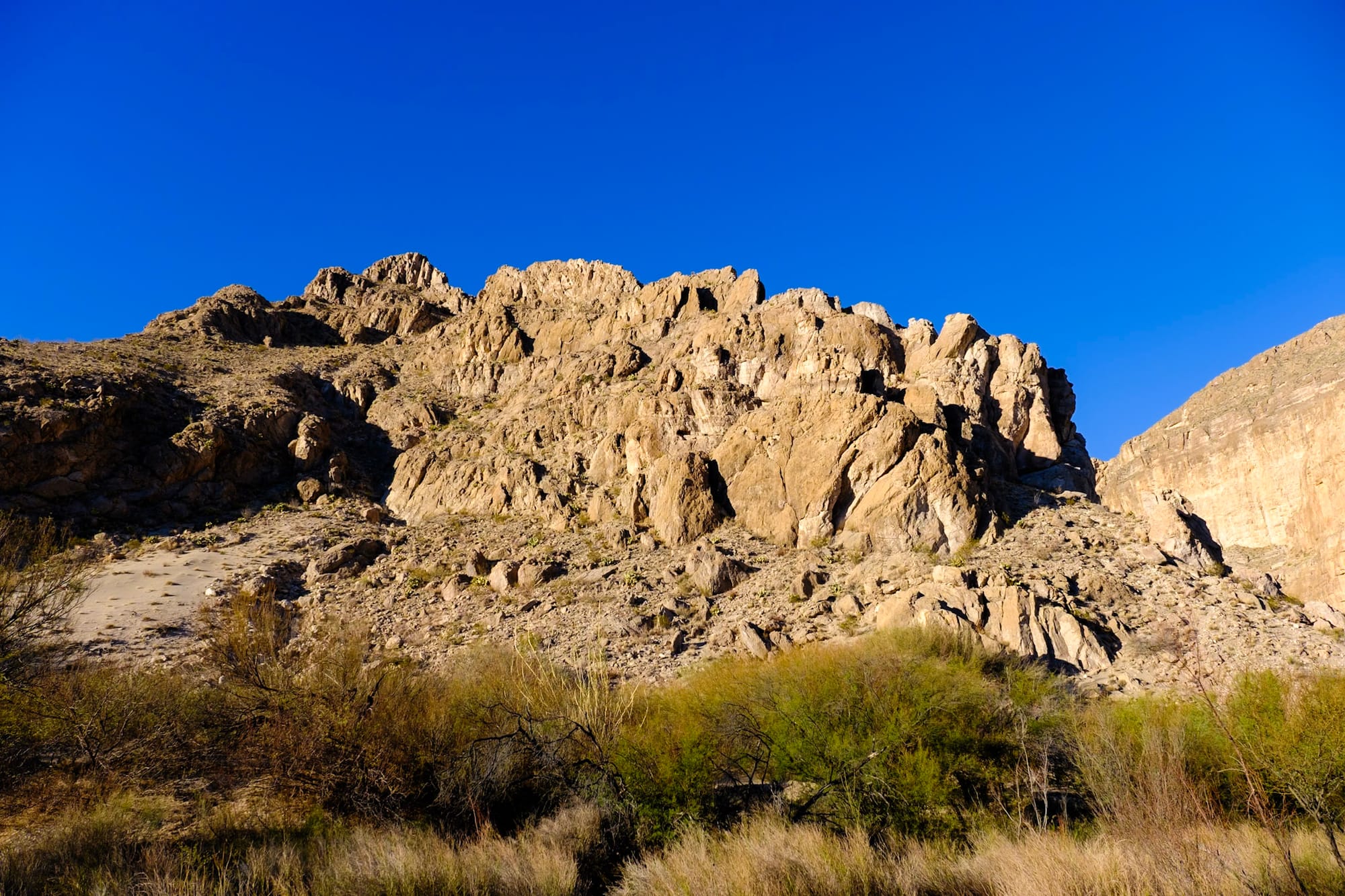
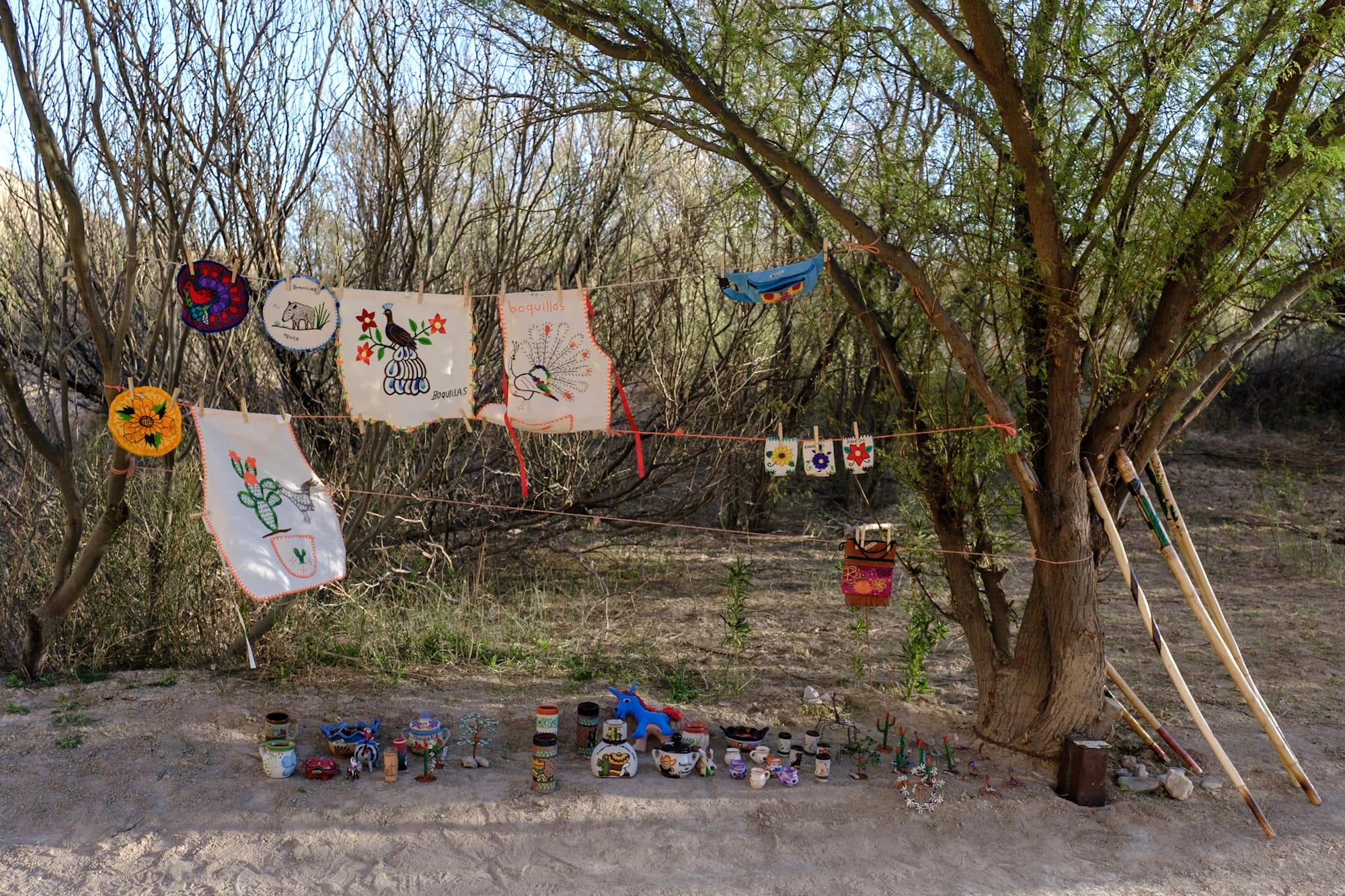
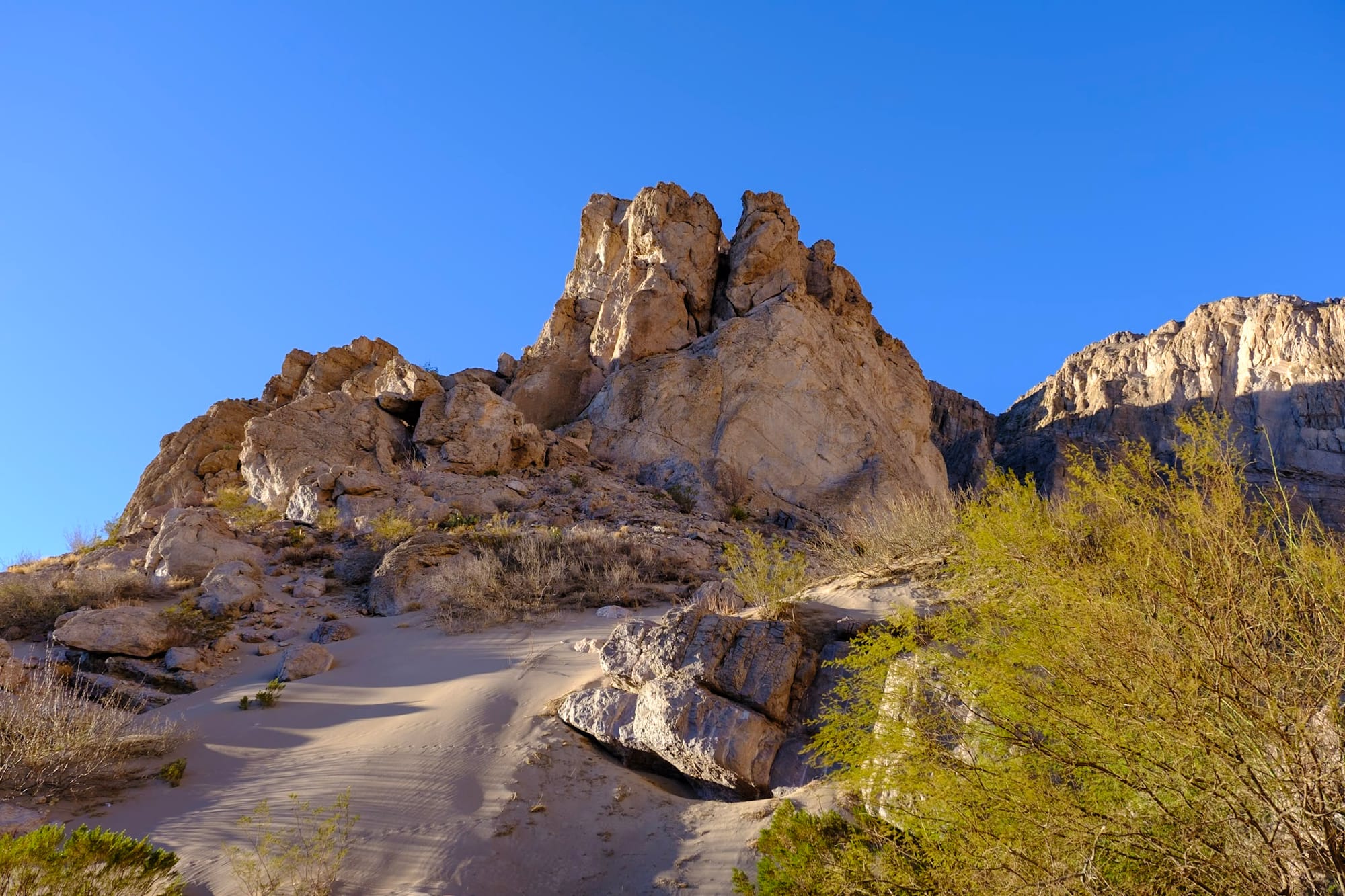
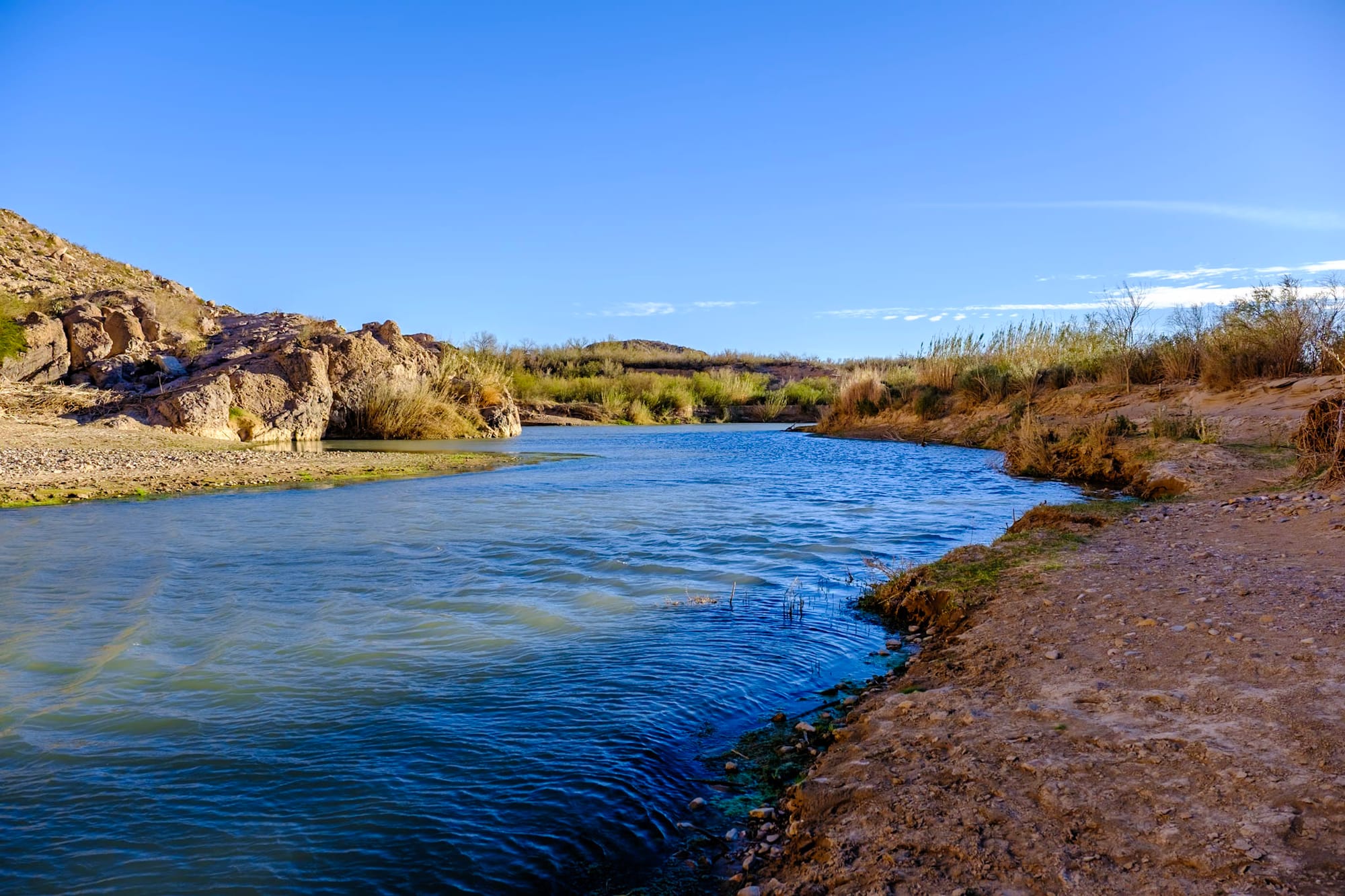
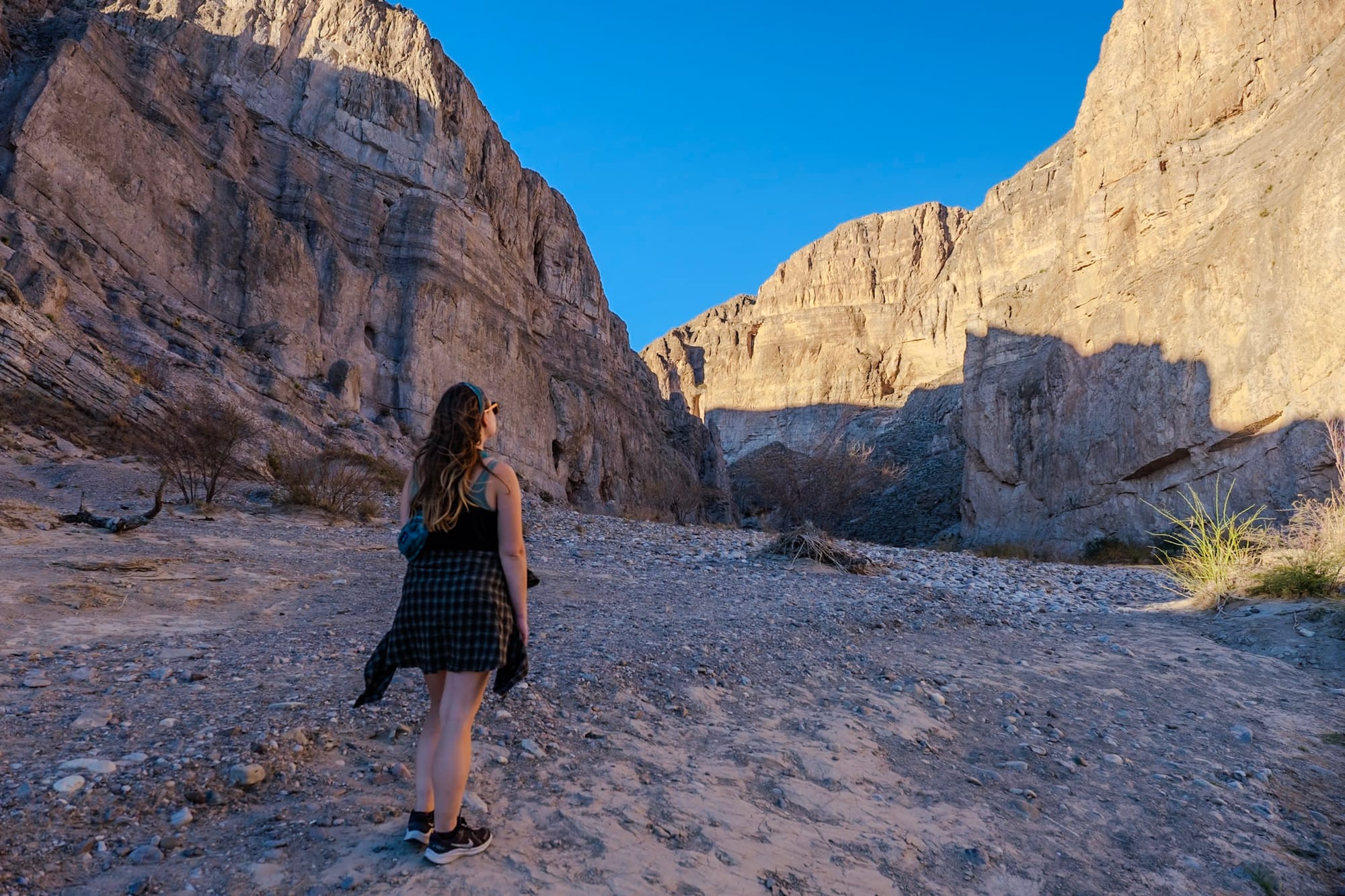
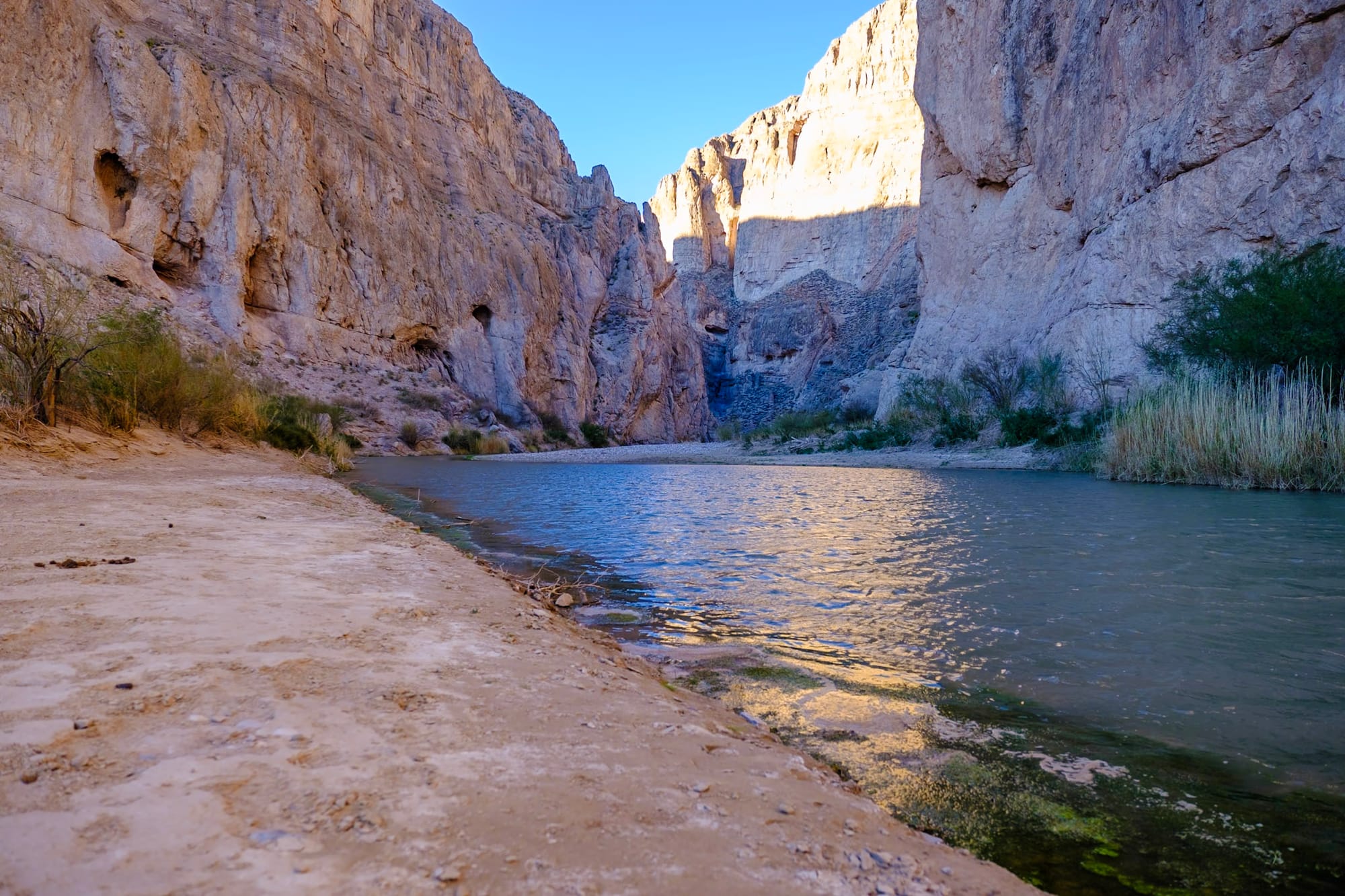
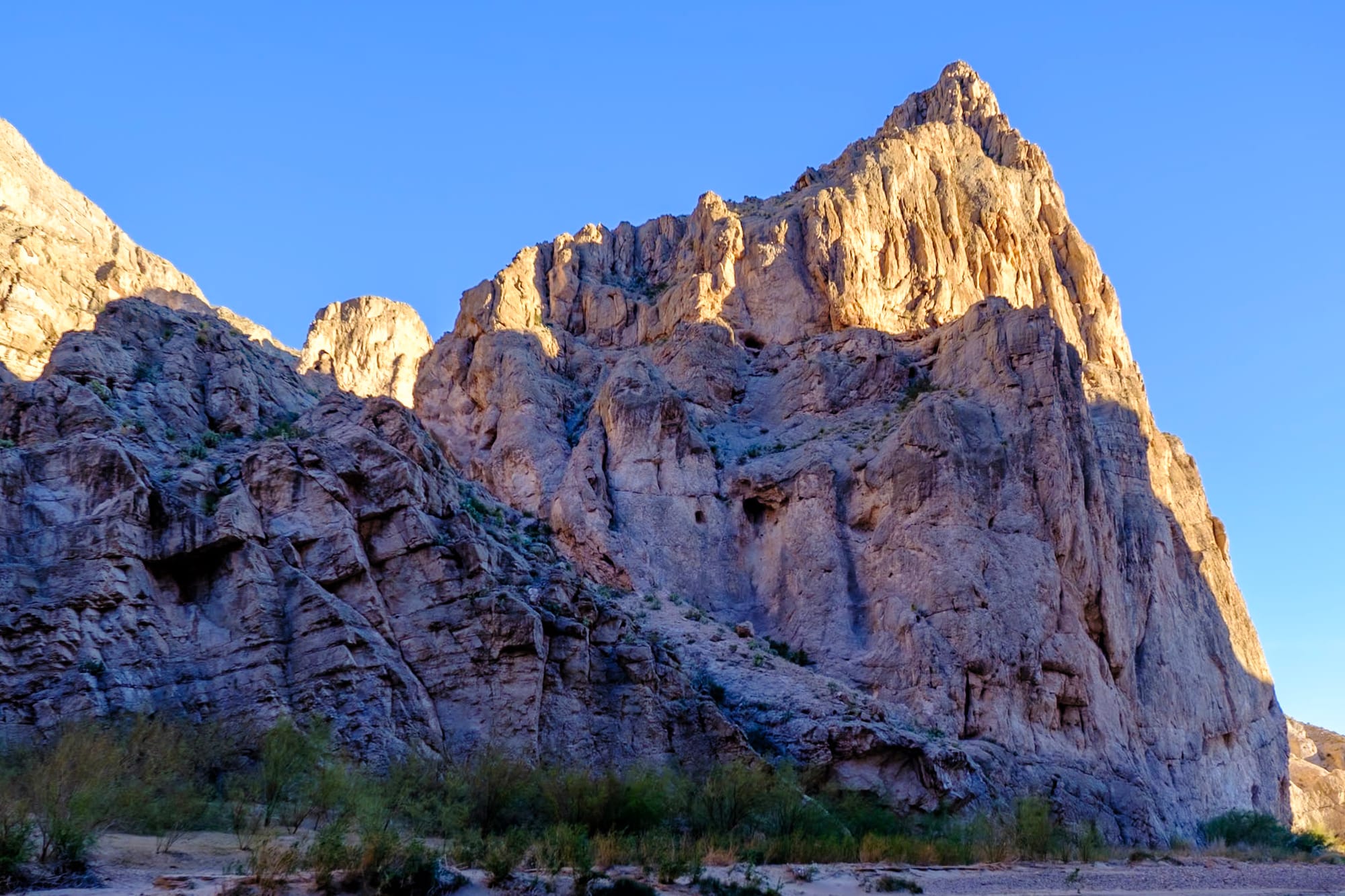
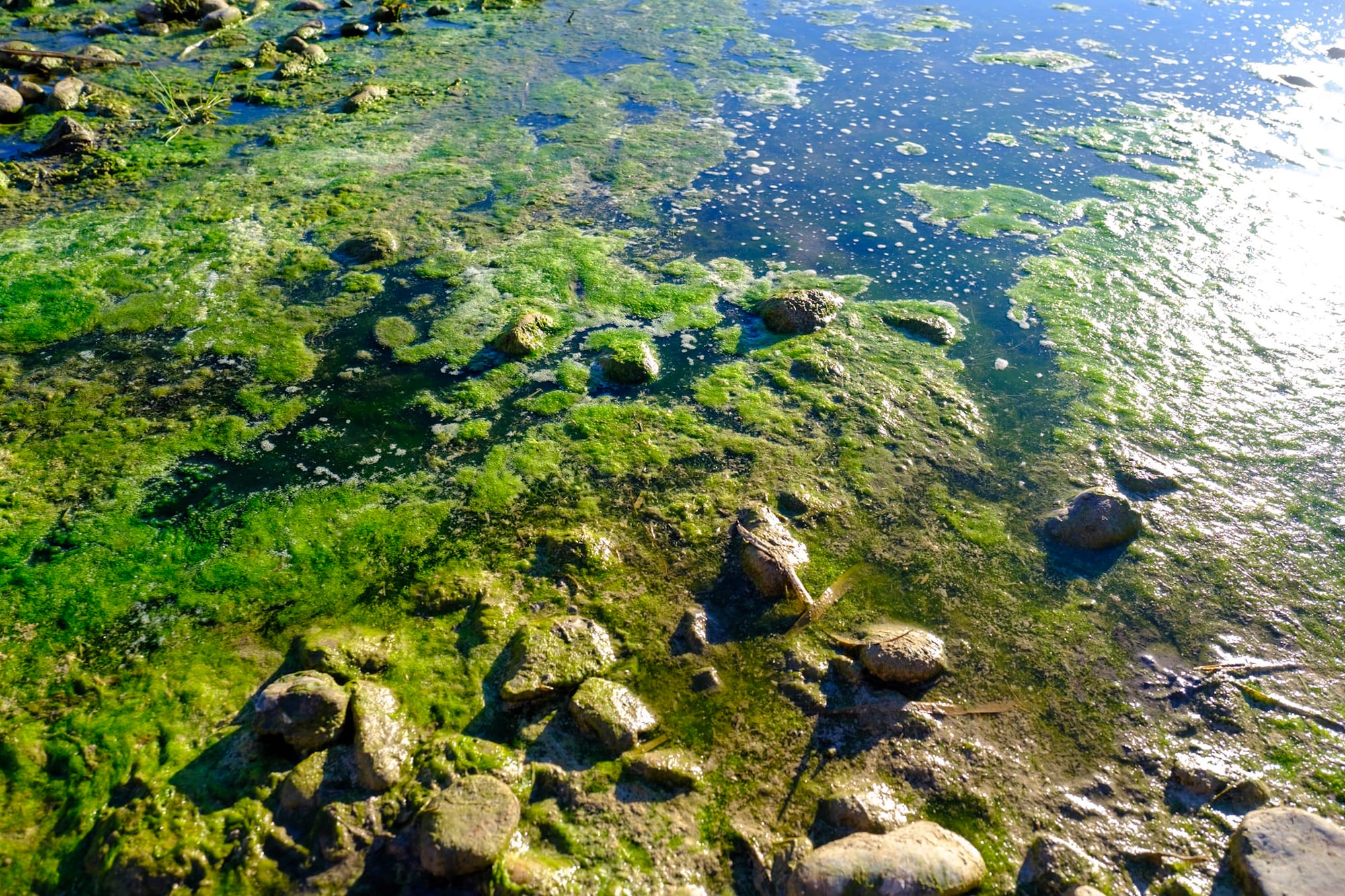
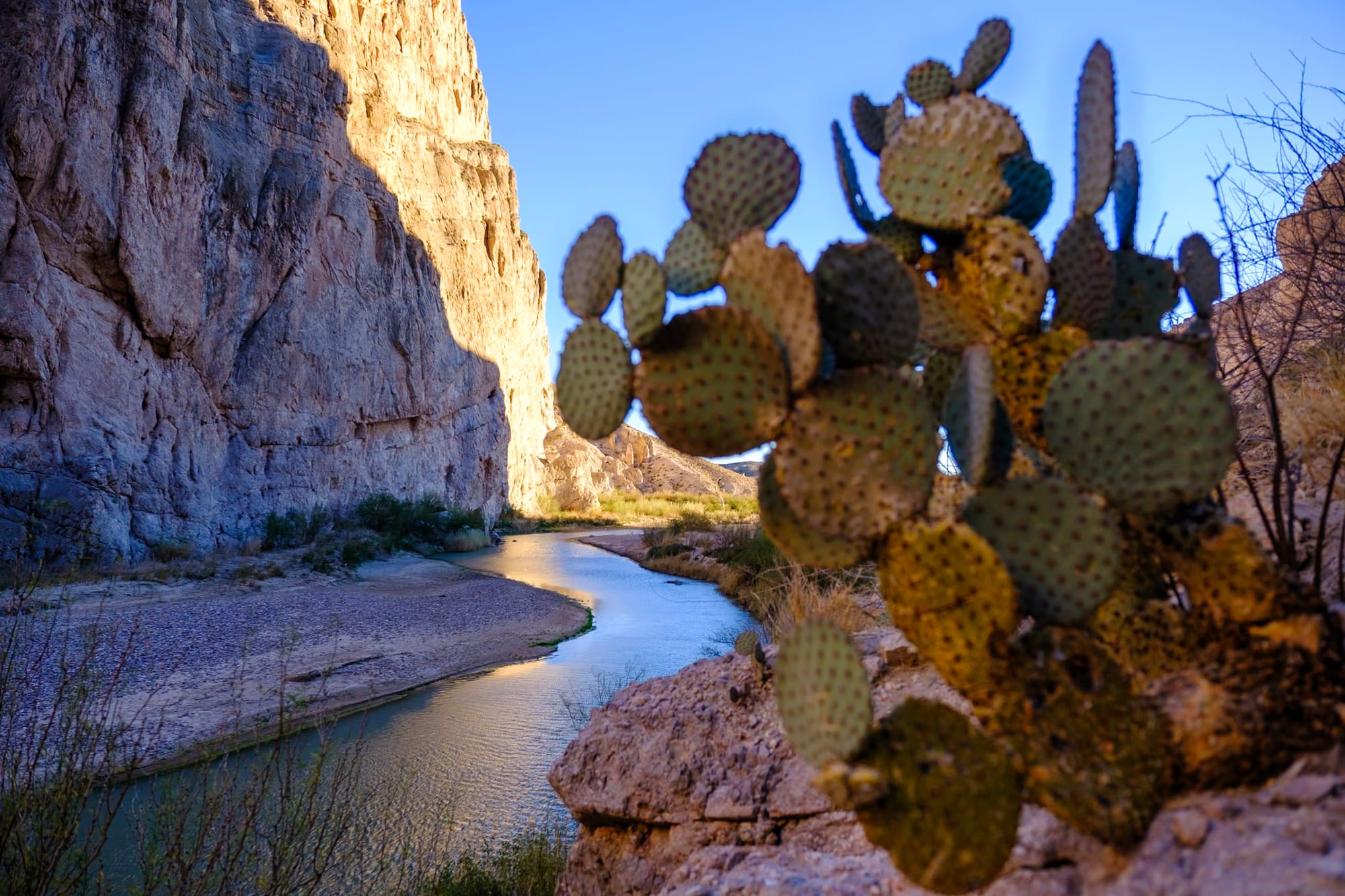
Day 4
Our last full day on the east side. After work, we rode our bikes to the Rio Grande Visitor Center (which was small but nice) and along a road by the other RV park, passing a few random cows lying down in a field and an old historic building (Daniels Ranch).
Then we biked to the more wooded, secluded and shady area at the back of our campground to hike the Rio Grande Nature Trail. It's short (about a mile loop) and a popular place to watch the sunset, since you can walk to it from the campground. It starts by crossing some boardwalks through a watery, swampy area with tall reeds and grasses. Then you emerge out in the desert landscape again along the Rio Grande, and climb up a rocky hill. From the top, you have 360 degree views of the river, campground, Mexico, the Sierra del Carmens, and the Chisos off in the distance.
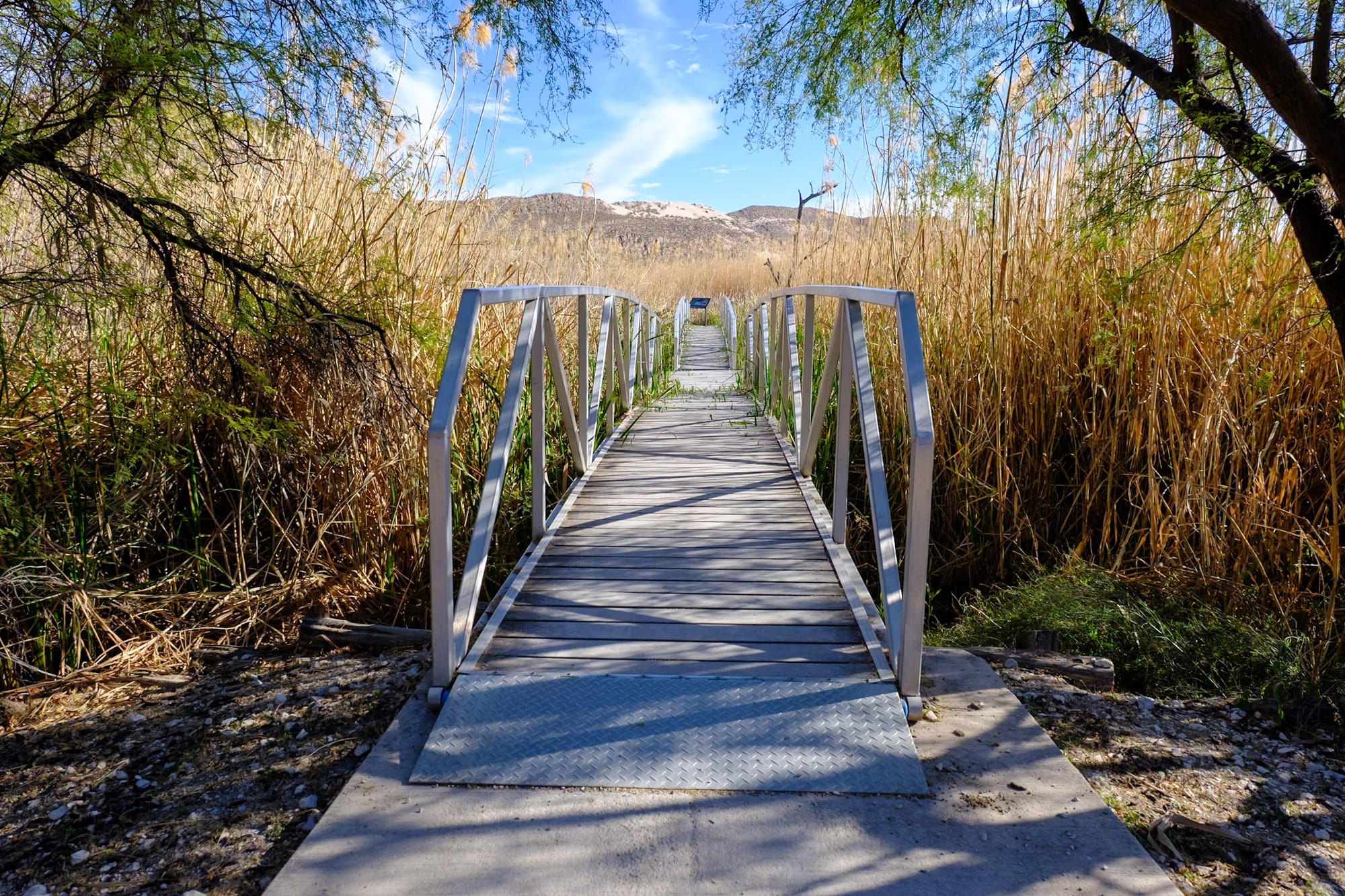
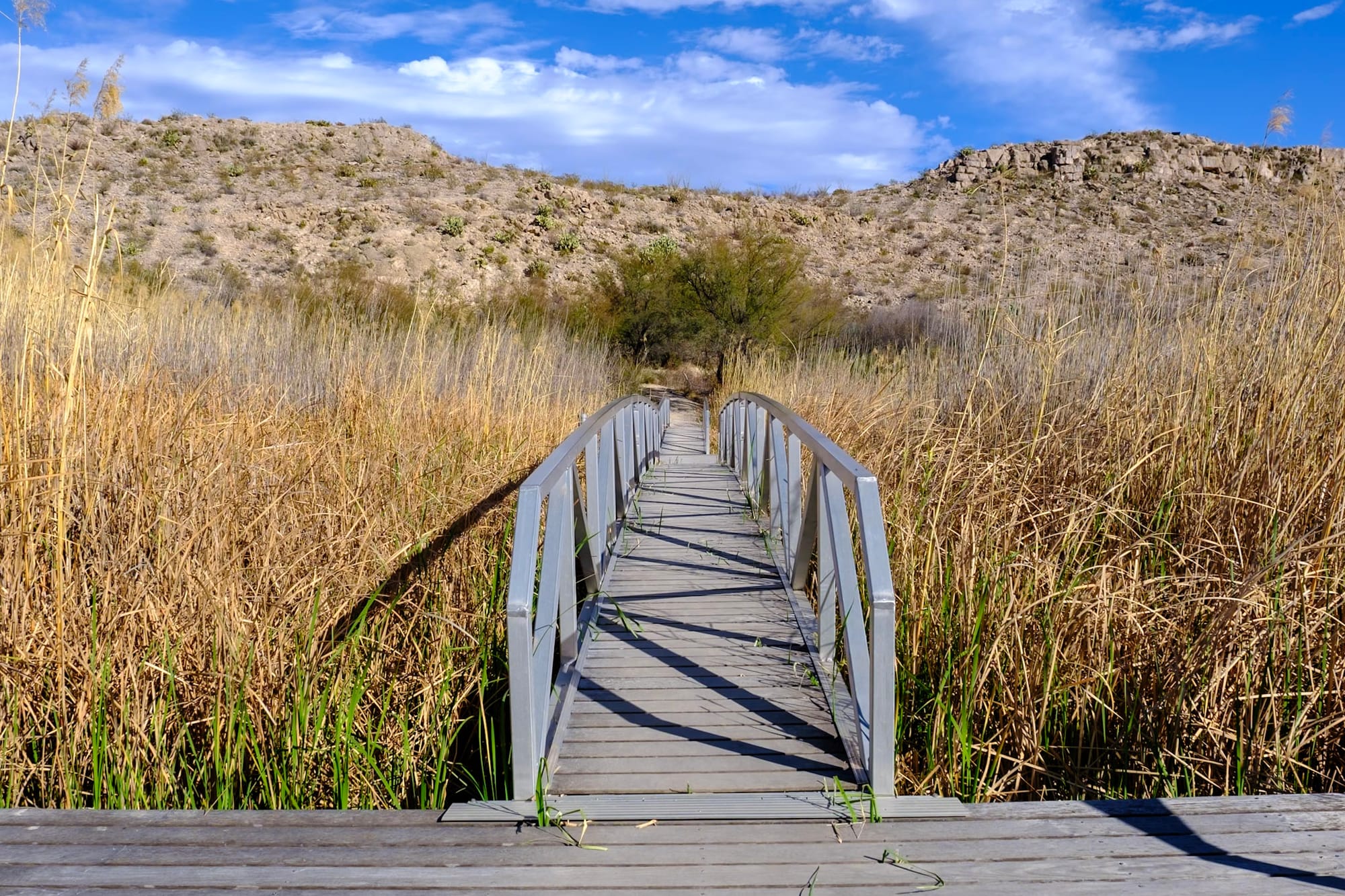
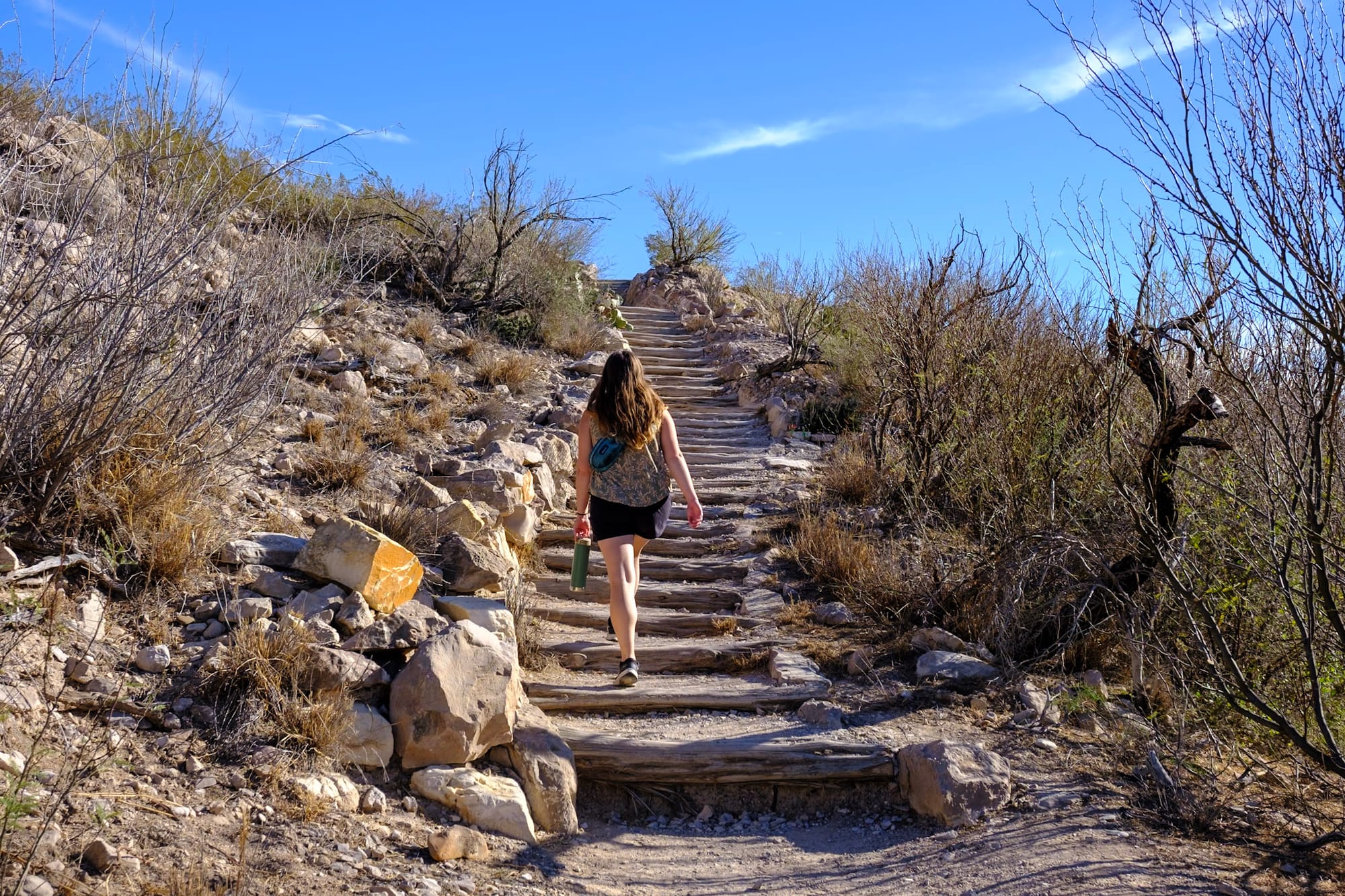
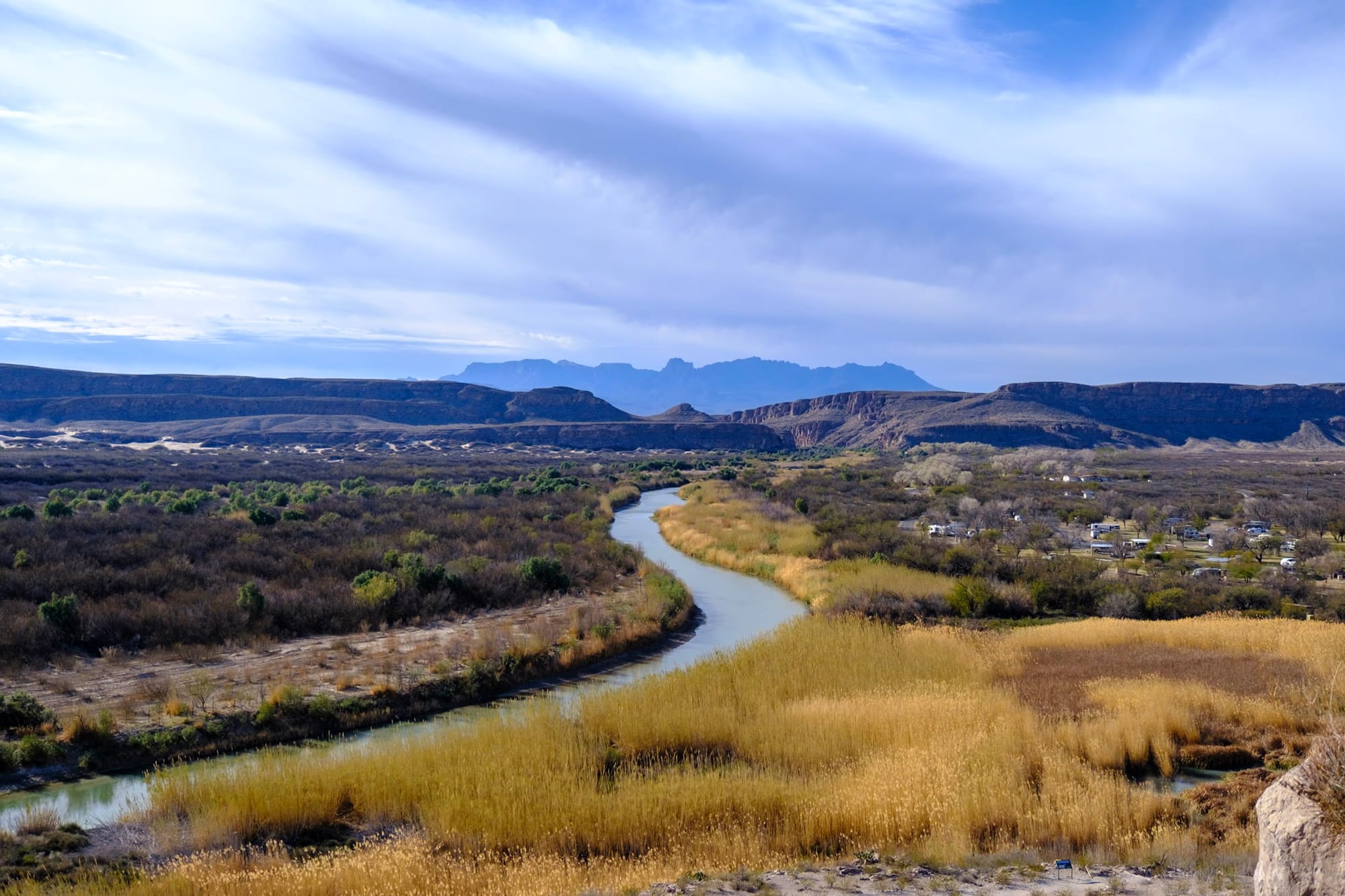
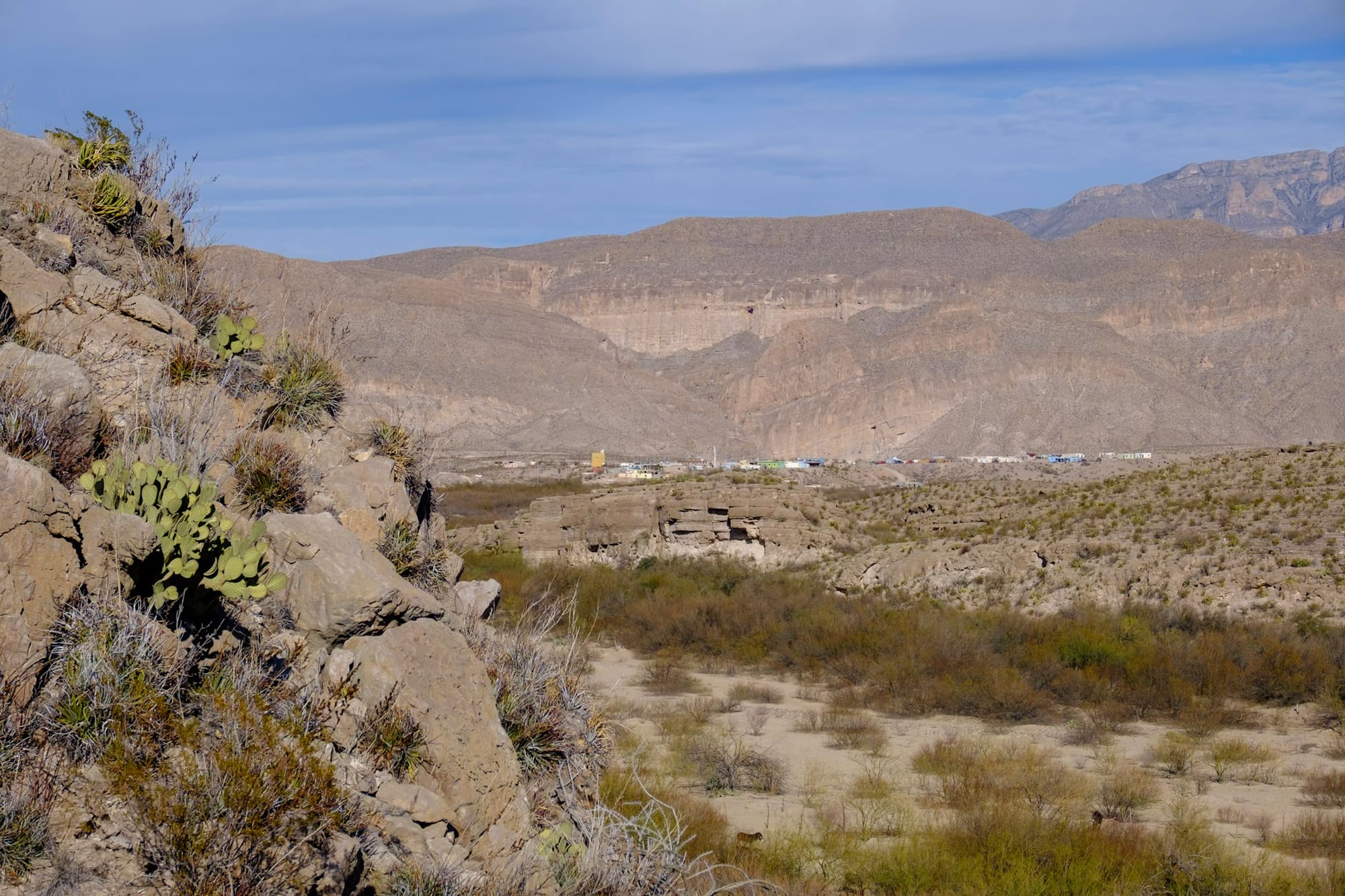
Rio Grande Nature Trail, and the town of Boquillas in the distance
We set up the camera and stayed to watch the sunset. It was peaceful and beautiful. After a while, we saw a guy riding a horse on the Mexican side of the river, with a few dogs running ahead of him. They all crossed the shallow river to the U.S. side, close to the hill, and then crossed again at the riverbend back into Mexico. Then we noticed a few mules on the other side that he was herding; they had bells around their necks that were jangling. It was cool to watch! Later, another guy from Boquillas and his dog crossed the river to collect the money at one of the souvenir spots along the trail.

A random discovery: beneath a rock that Joey was sitting on, there was a wooden box. We thought it was a geocache until we opened it and discovered a typed note and a small evil eye. Turns out, it was a box with some guy's ashes! There were hardly any ashes inside the box, but the note said that he had loved Big Bend and that he often camped there with a group of friends, who had gone back to the place he loved to scatter his ashes over this hill.
All of this was a good way to end our time in Rio Grande Village.
Cottonwood Campground (west side)
Day 5
The next morning was a little chaotic. Moving days are always busy (especially when we have to move in between work) but a few things added to the hecticness.
It started off peaceful: I took a solo walk on the Rio Grande Nature Trail again, this time on the part of the trail that goes down to the river. I heard some mule bells and saw one tied to a tree on my way back.
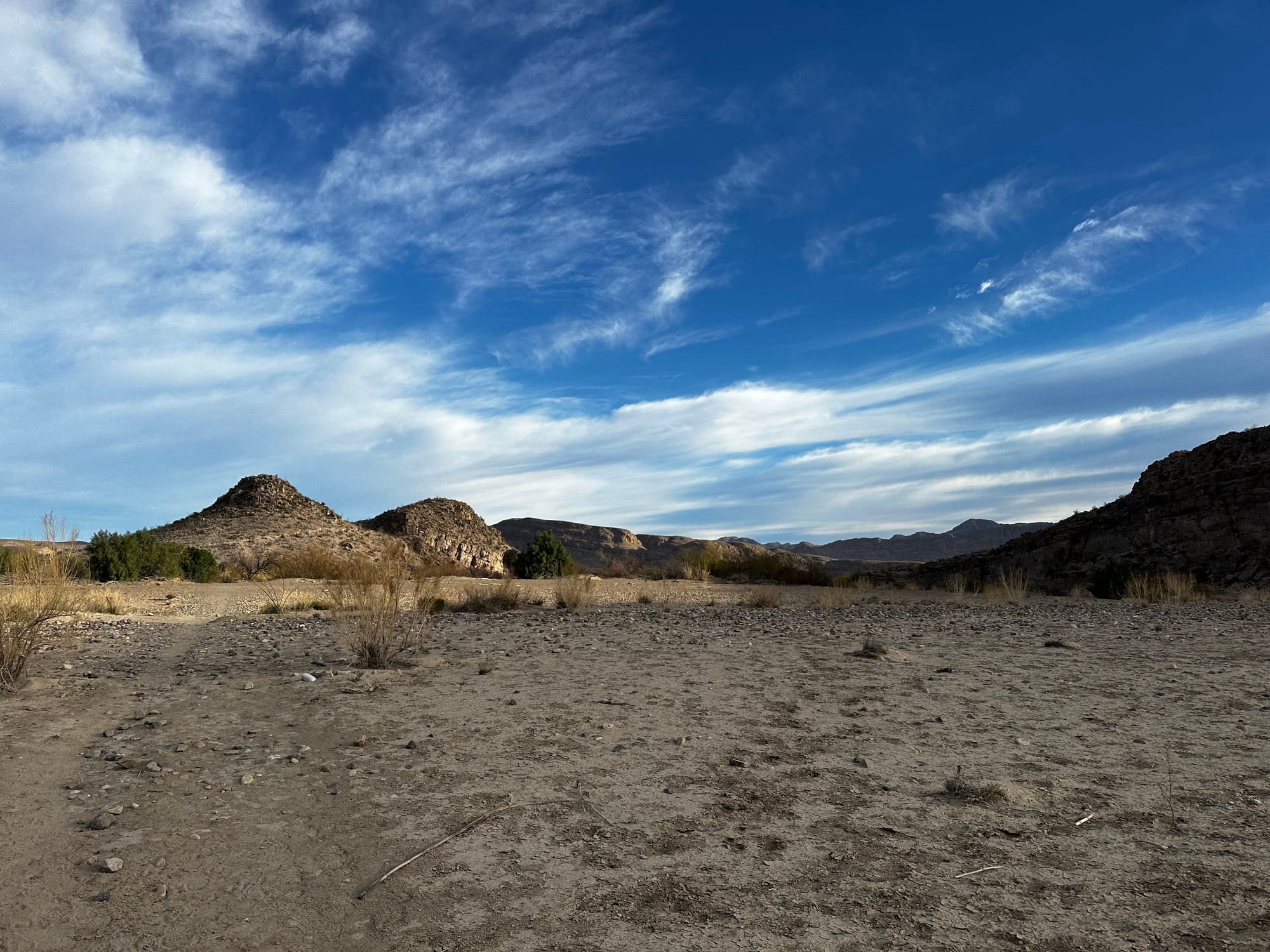
When I got back to our site, Joey tried to get the generator going to charge our batteries before the next campground, where generators weren't allowed, but something wasn't working. He eventually figured out how to fix it.
Then a ranger showed up and told us that the grassy area next to our campground would flood soon because of the irrigation they were doing in the area that day (this had happened to another field the day before). This wouldn't normally be a problem, except the way we were parked required us to drive on the grass in order to hook up and get out of our site – so we had to hook up earlier than expected and move closer to the road to avoid the flooding.
Then a random older guy with a French accent showed up at our door, saying that he had our site booked for that day. We had until 1pm to leave, and I told him we'd be leaving around noon (I wasn't sure if he was trying to get in earlier, he was sort of hard to understand lol). He asked if he and his wife could park their bikes at our site for the time being. After a while, they rode back, locked their bikes to our picnic table and left again. It was all fine, just many interruptions when we were trying to get some work done before moving lol!
Finally, we left for the 1.5 hour drive over to Cottonwood Campground on the west side of the park. We said goodbye to the Sierra del Carmens and Rio Grande Village, drove past the Panther Junction visitor center hub and the Chisos road entrance, and entered new territory for us. To get down to Cottonwood (which is also close to the river), you follow the Ross Maxwell Scenic Drive – which is gorgeous, with great views of the other side of the mountains and unique, colorful rock formations and buttes.
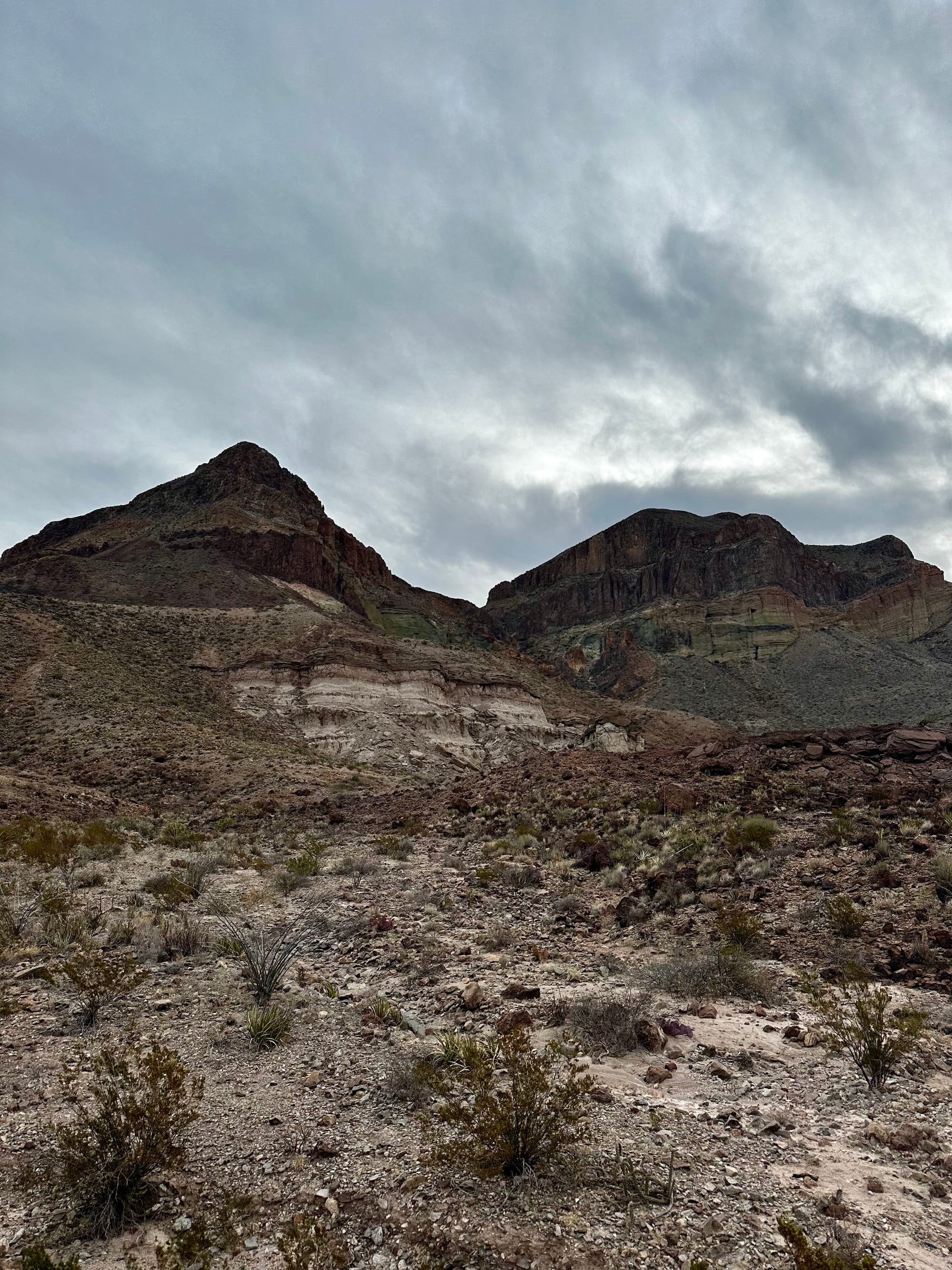
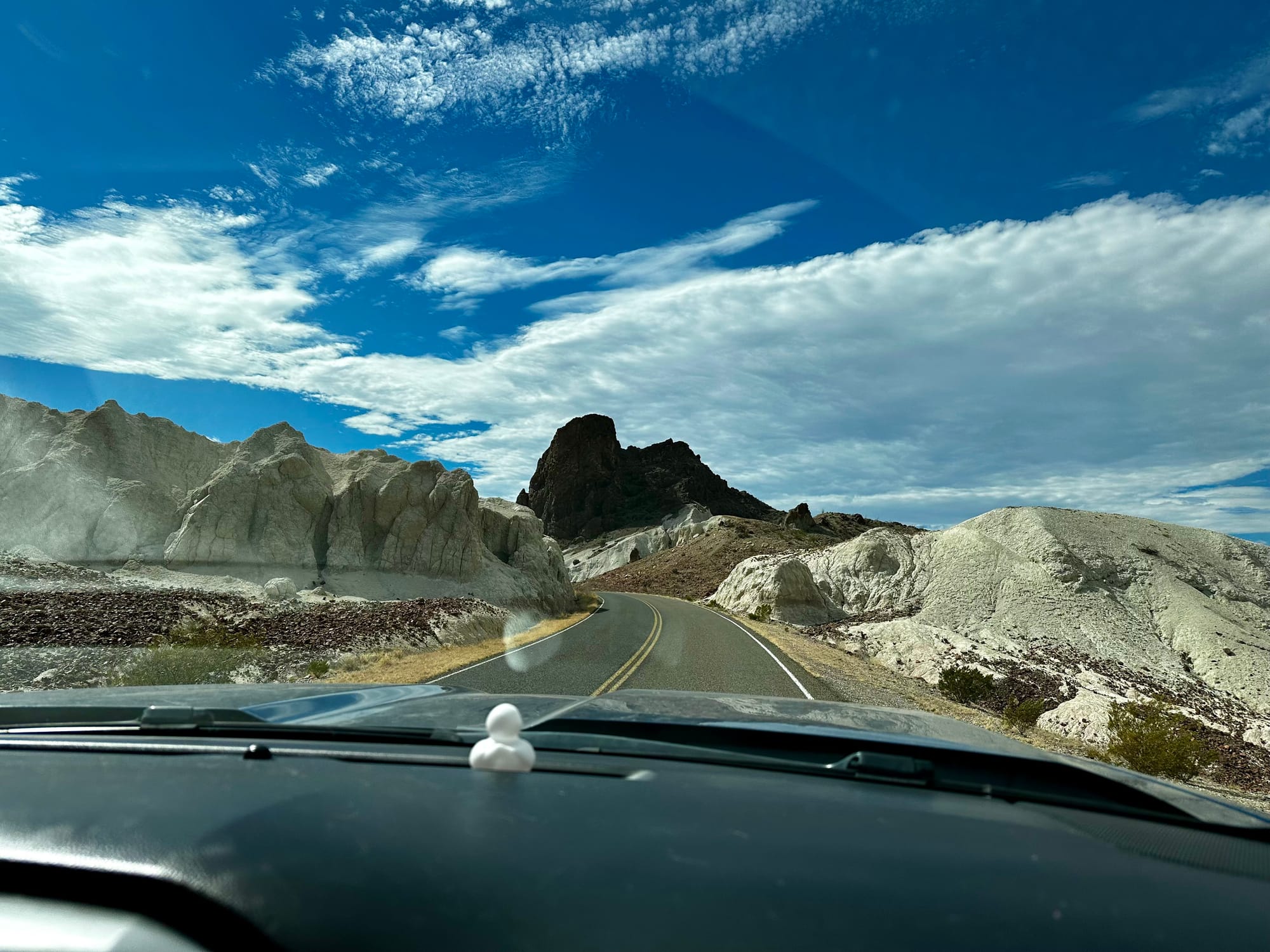
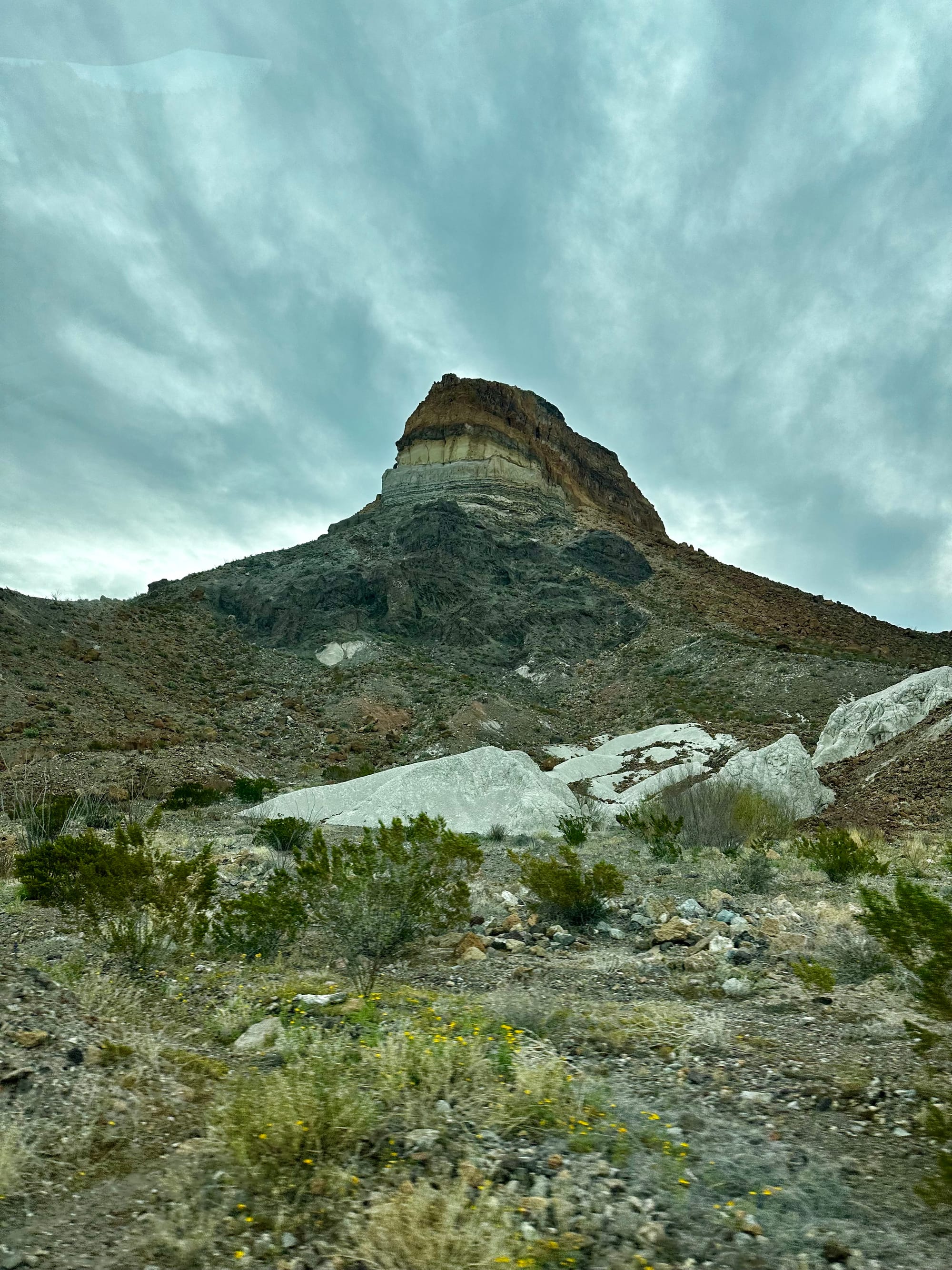
Ross Maxwell Scenic Drive views
Cottonwood is much smaller and quieter than Rio Grande. We had a good spot at the end of a row. After we finished working, we drove an hour back up along the scenic drive and over to the town of Terlingua to get gas. (Cottonwood was further from gas stations - the closest one was 35 miles away - so we wanted to fill up to not worry about it for the next few days).



Sunset at Cottonwood Campground
Someone had described Terlingua as "funky" and that's accurate. It was a unique little town, a ragtag, dusty little collection of homes and campgrounds and old buildings scattered among the desert hills. The scenery here was almost as pretty as in the park. Terlingua Ghost Town is an area with the ruins of the old Chisos Mining Company, which was the foundation of the town in the early 20th century.
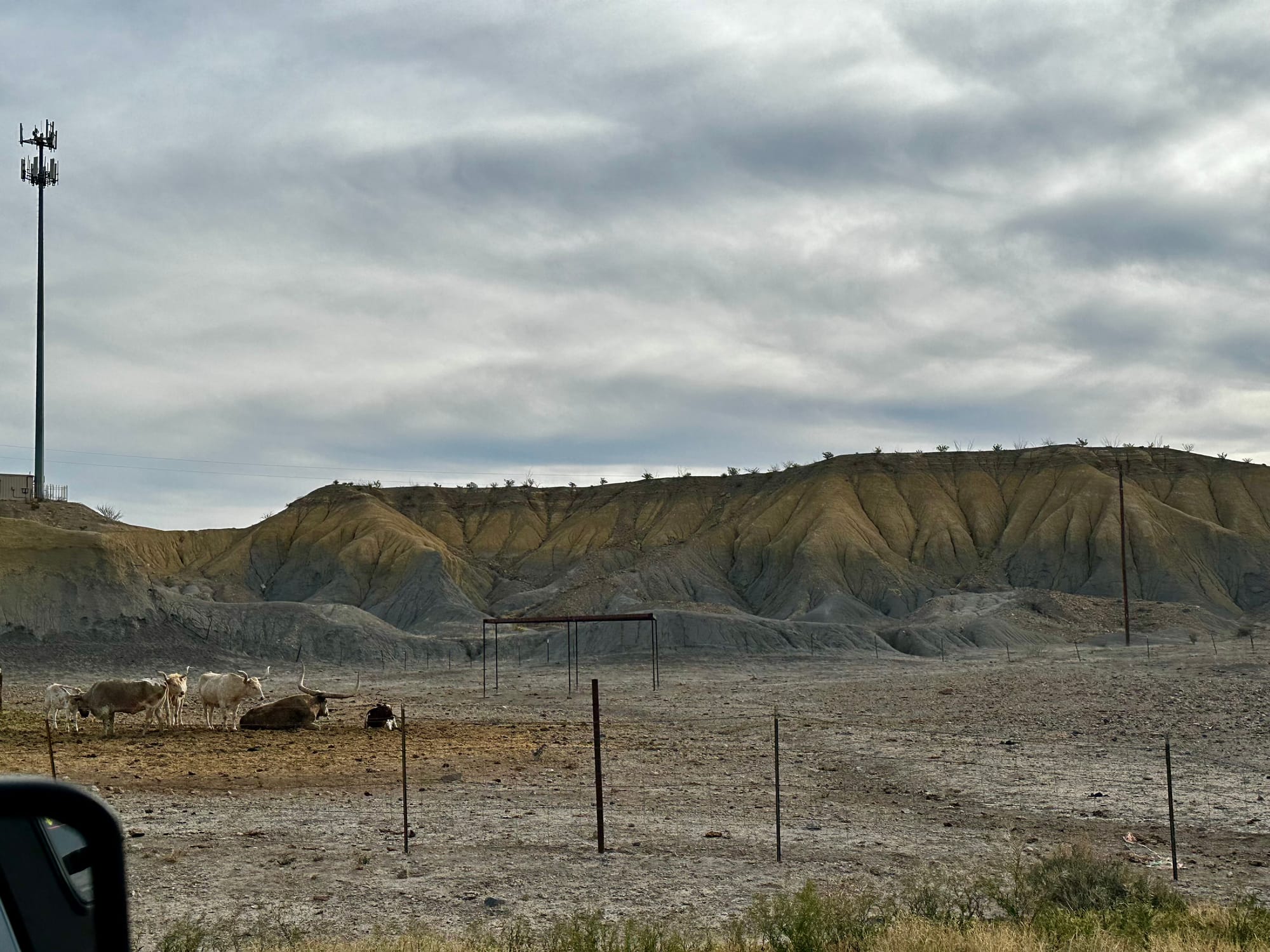
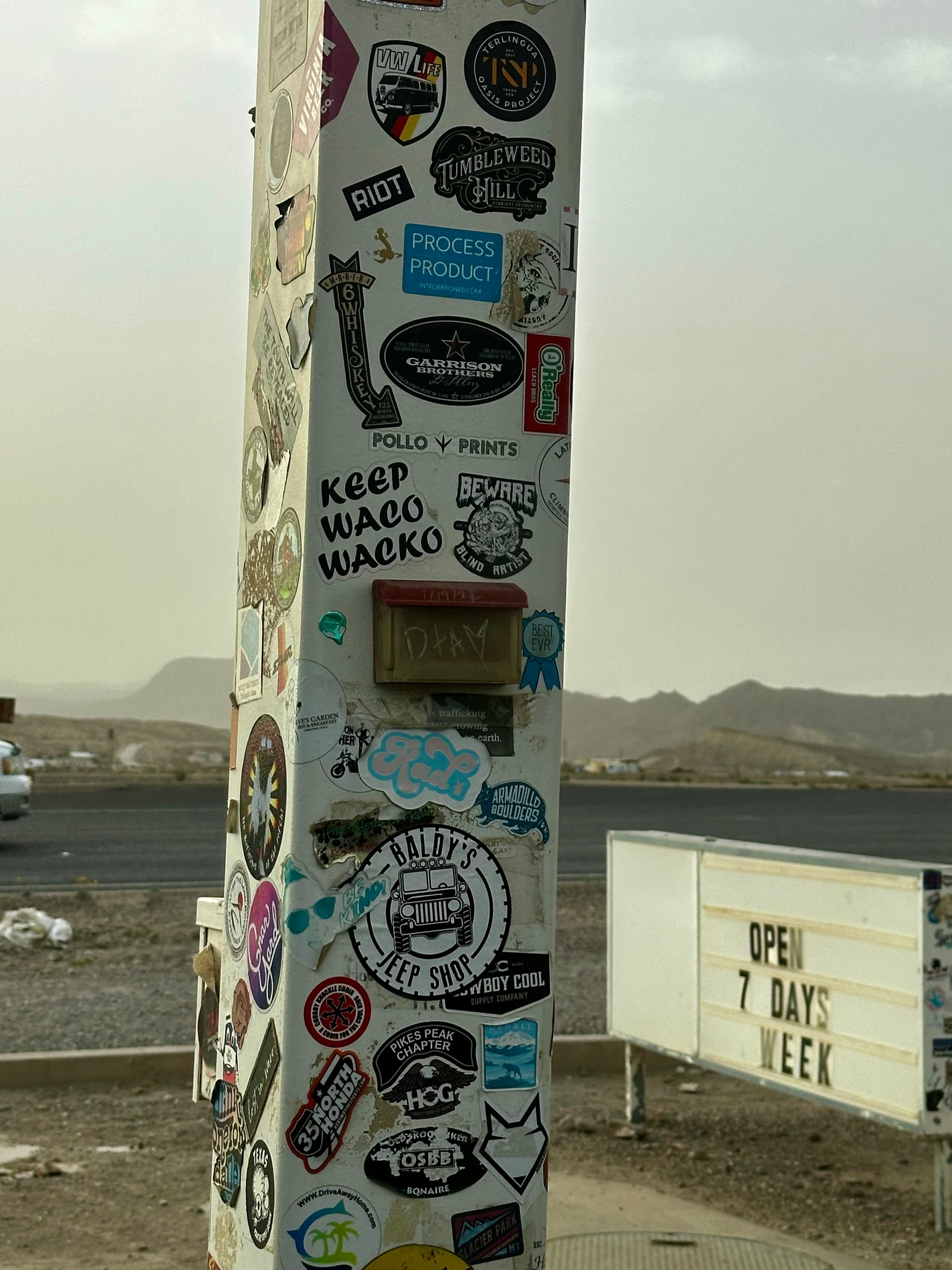
Longhorns and stickers in Terlingua
Nearby, we found an old cemetery. Most of the graves were old and marked with wooden or white crosses, but a handful were pretty new. A lot of the graves were uniquely decorated and covered with items like flags, flowers, statues, and beer bottles. The sun was setting and the lighting was beautiful.
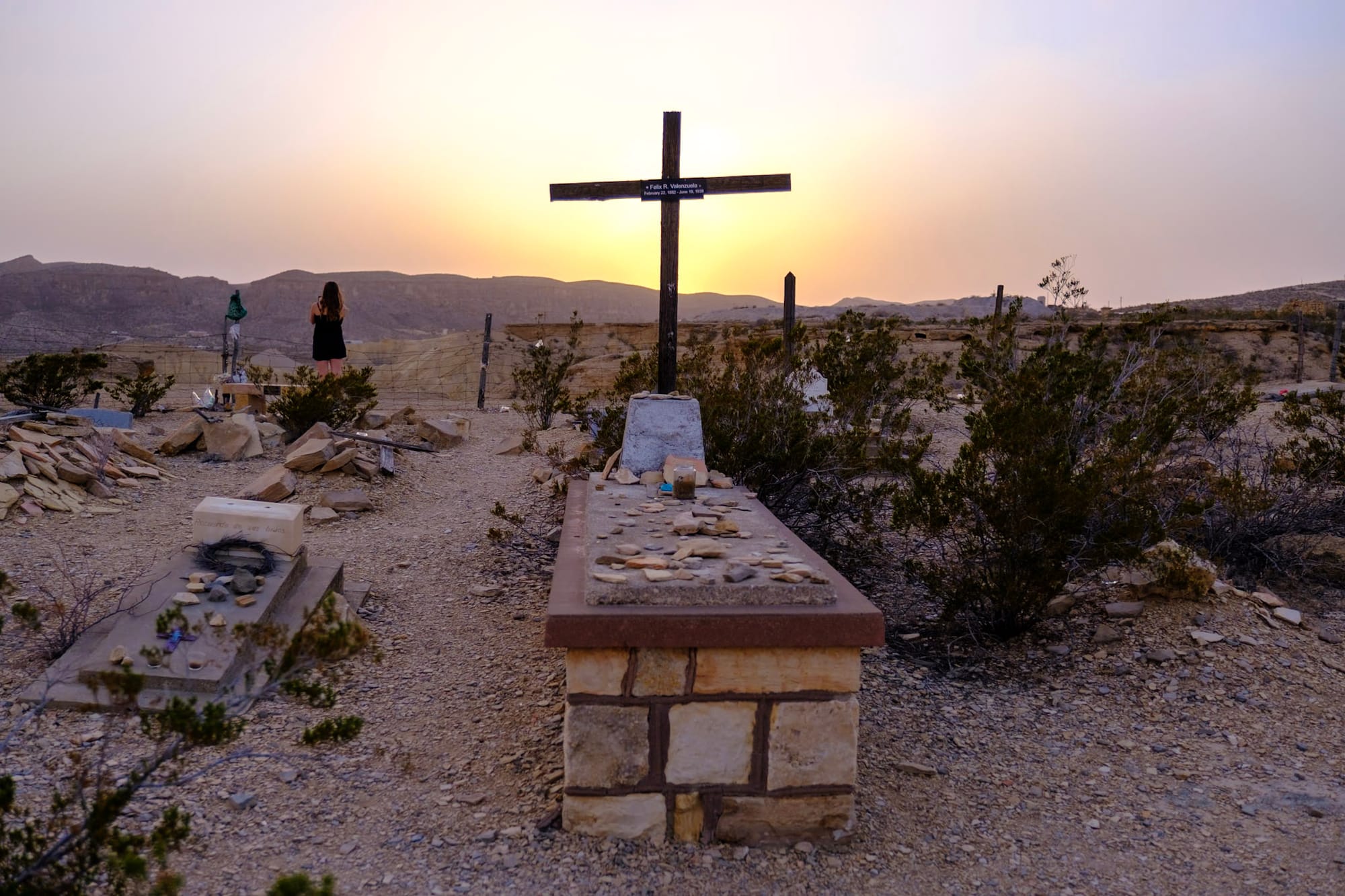
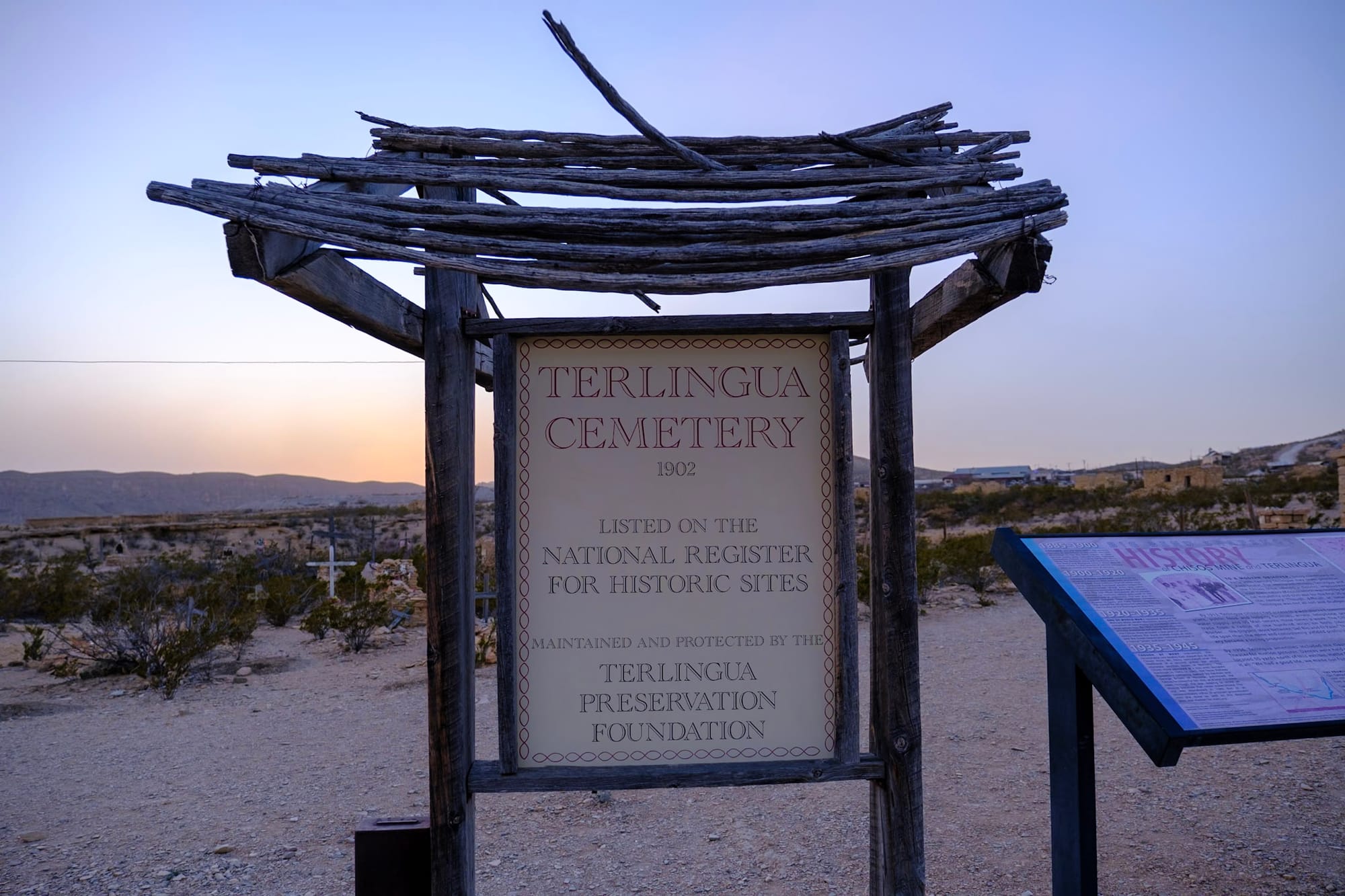
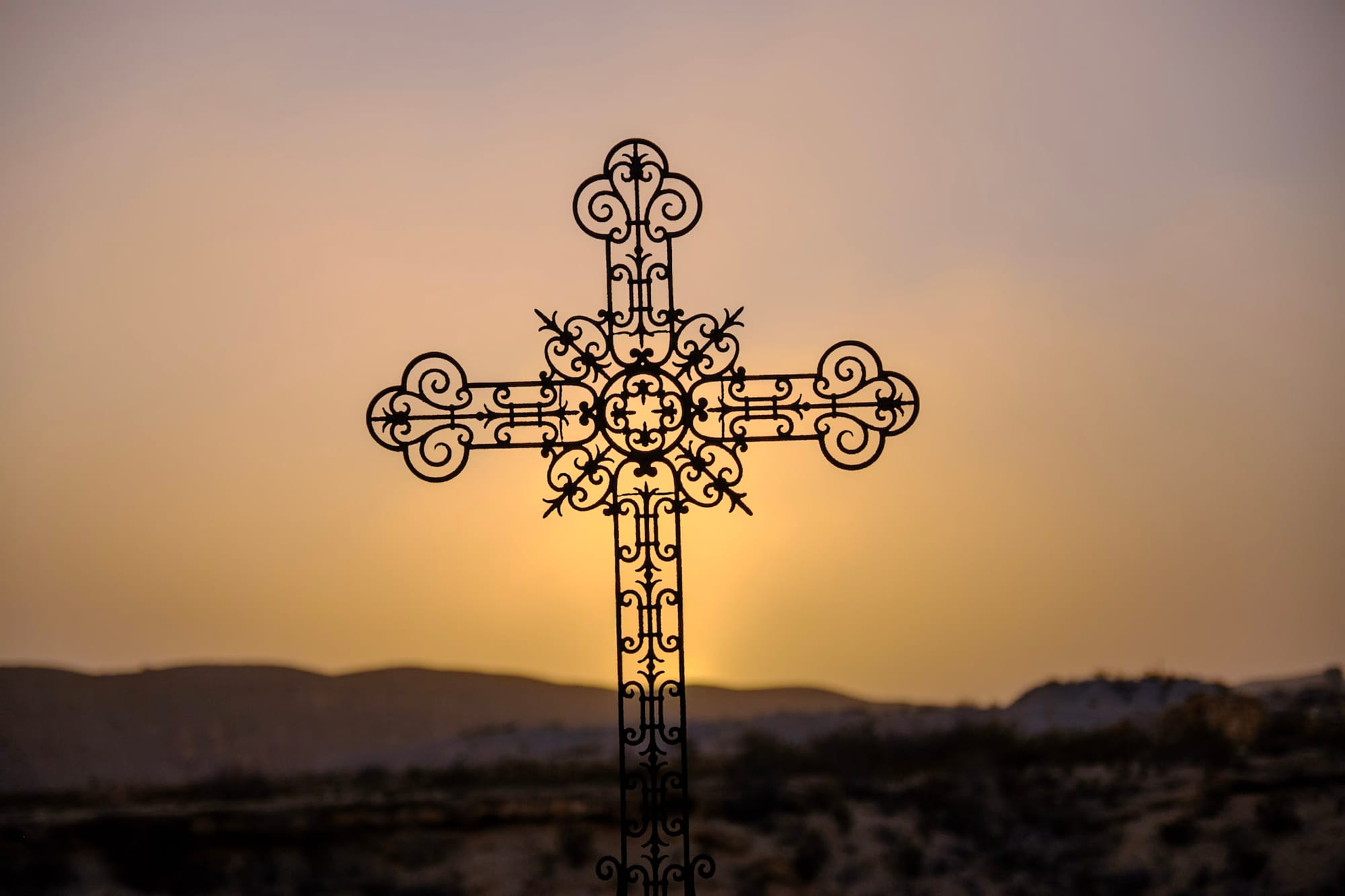

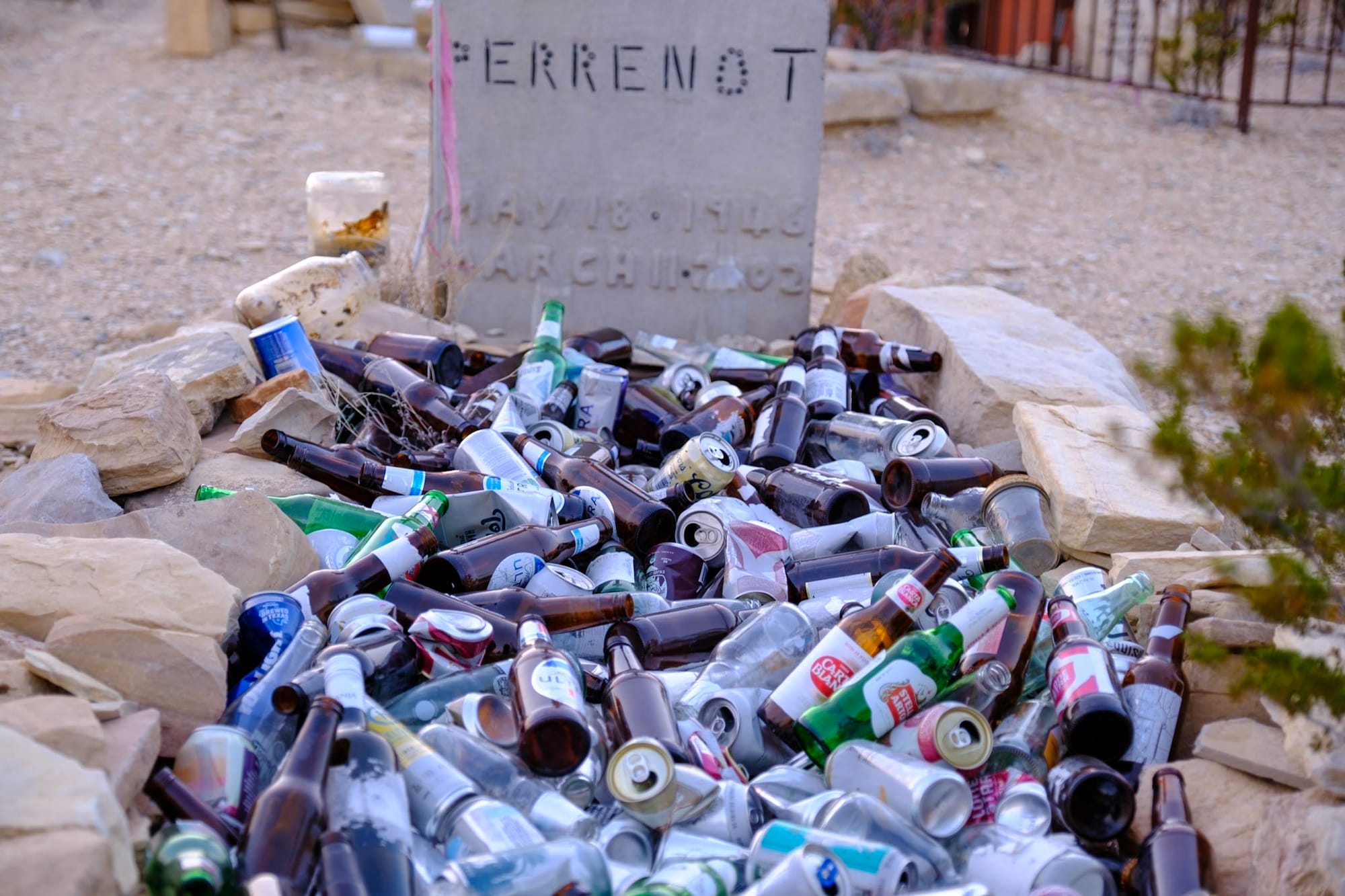
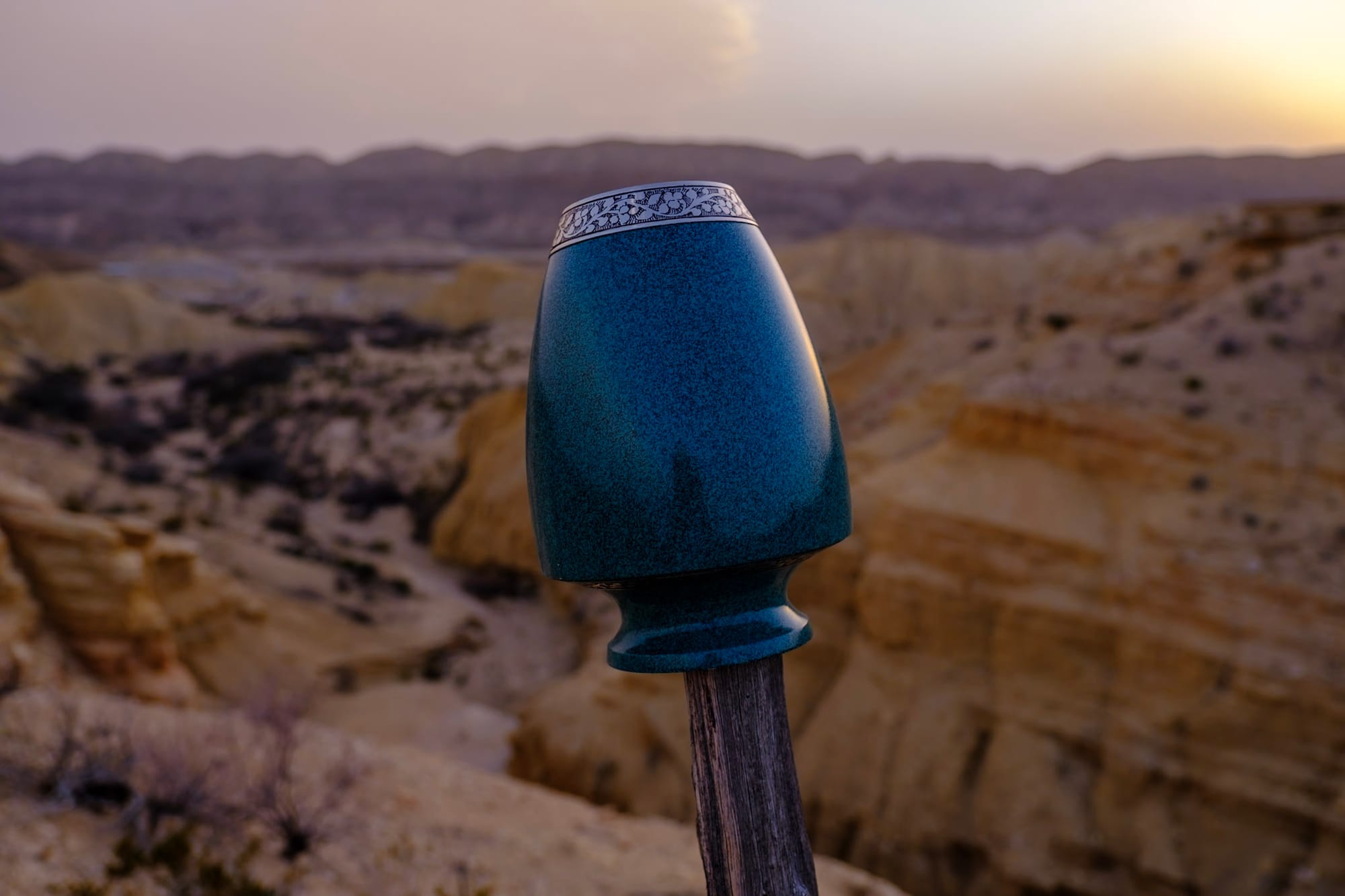
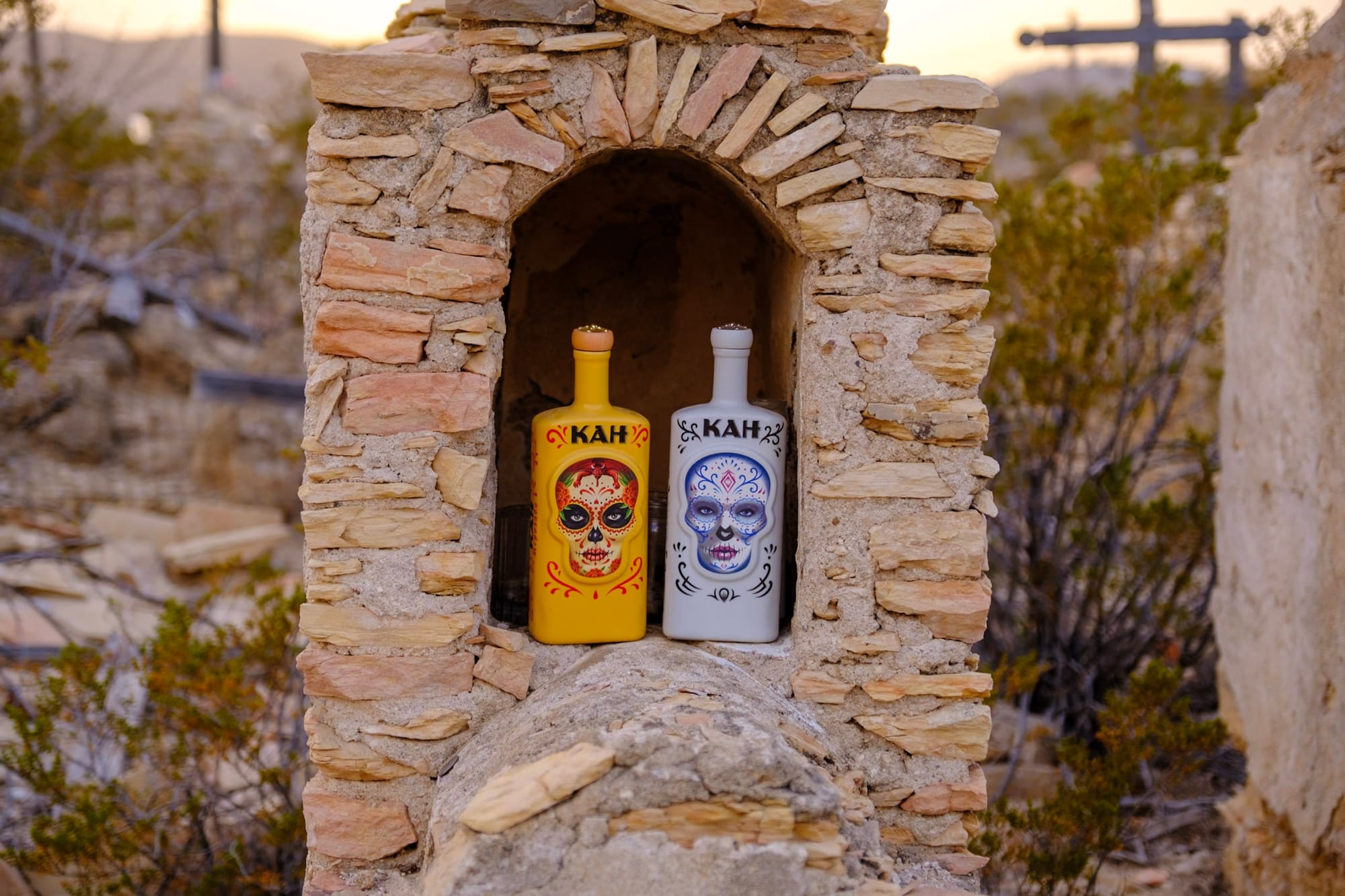
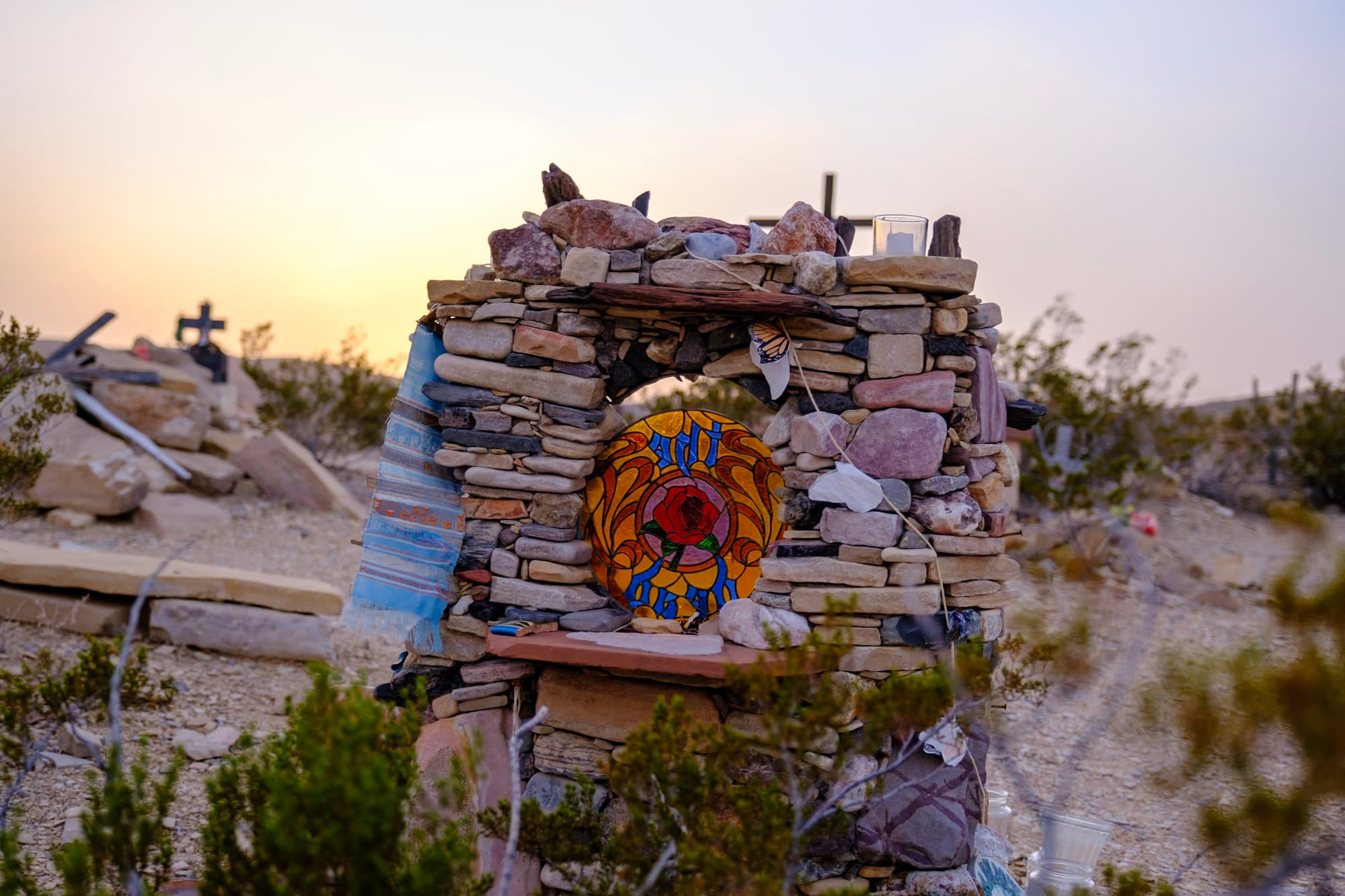
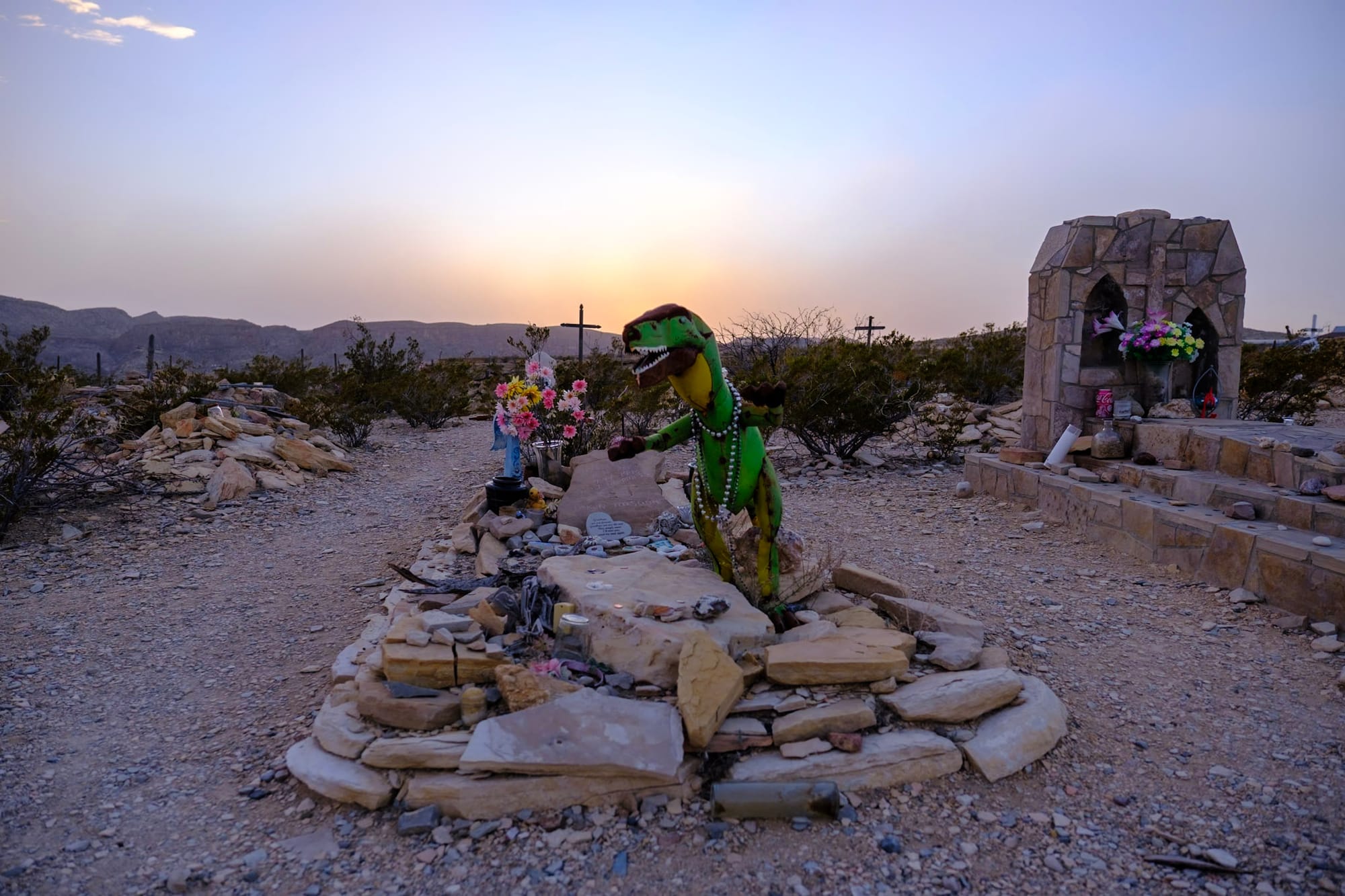
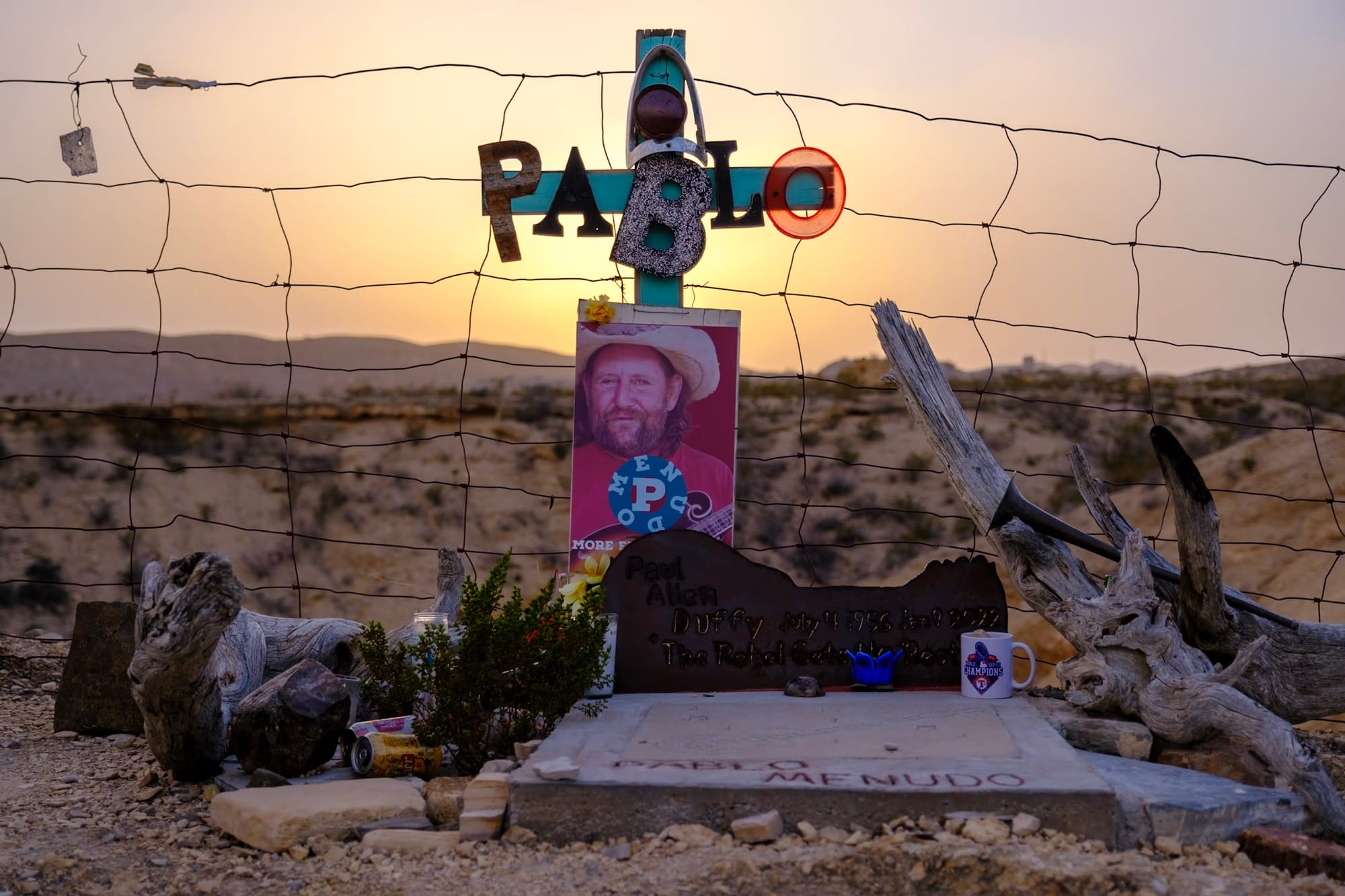
Terlingua Cemetery
Day 6
When we got up Thursday morning, we went to turn on Starlink – and it wasn't working. It told us that we needed to activate our account (which we'd already done). Since Starlink doesn't have a phone number you can call for support, we just had to submit a ticket through a support form and wait for them to get back to us... which is frustrating.
They'd originally sent us the wrong Starlink unit (we got one meant for someone else) but after about a week of back-and-forth with their team, Joey had sorted it out – or so we thought. Now something was messed up again, so we had to drive about an hour up to the Chisos Mountains visitor center, where they had Wi-Fi and decent cell signal so we could work and take Zoom calls.
It's always good to have a backup plan when you need internet in a remote place!
After my last meeting in the early afternoon, we drove down the mountains to one of the many rough gravel/dirt roads through Big Bend, where we still had 3G signal. We drove down the road for a while, way out into the desert, until we found a pull-off where we parked Tex, set up our chairs, and worked for a couple more hours. It was super quiet and nice, with only the occasional car passing by.


That night, we just hung out at the campground, stargazing next to Nome (the Airstream). When we went to bed, we heard a bunch of coyotes yipping and howling super close by – it sounded like they were running right next to us through the campground, and they probably were.
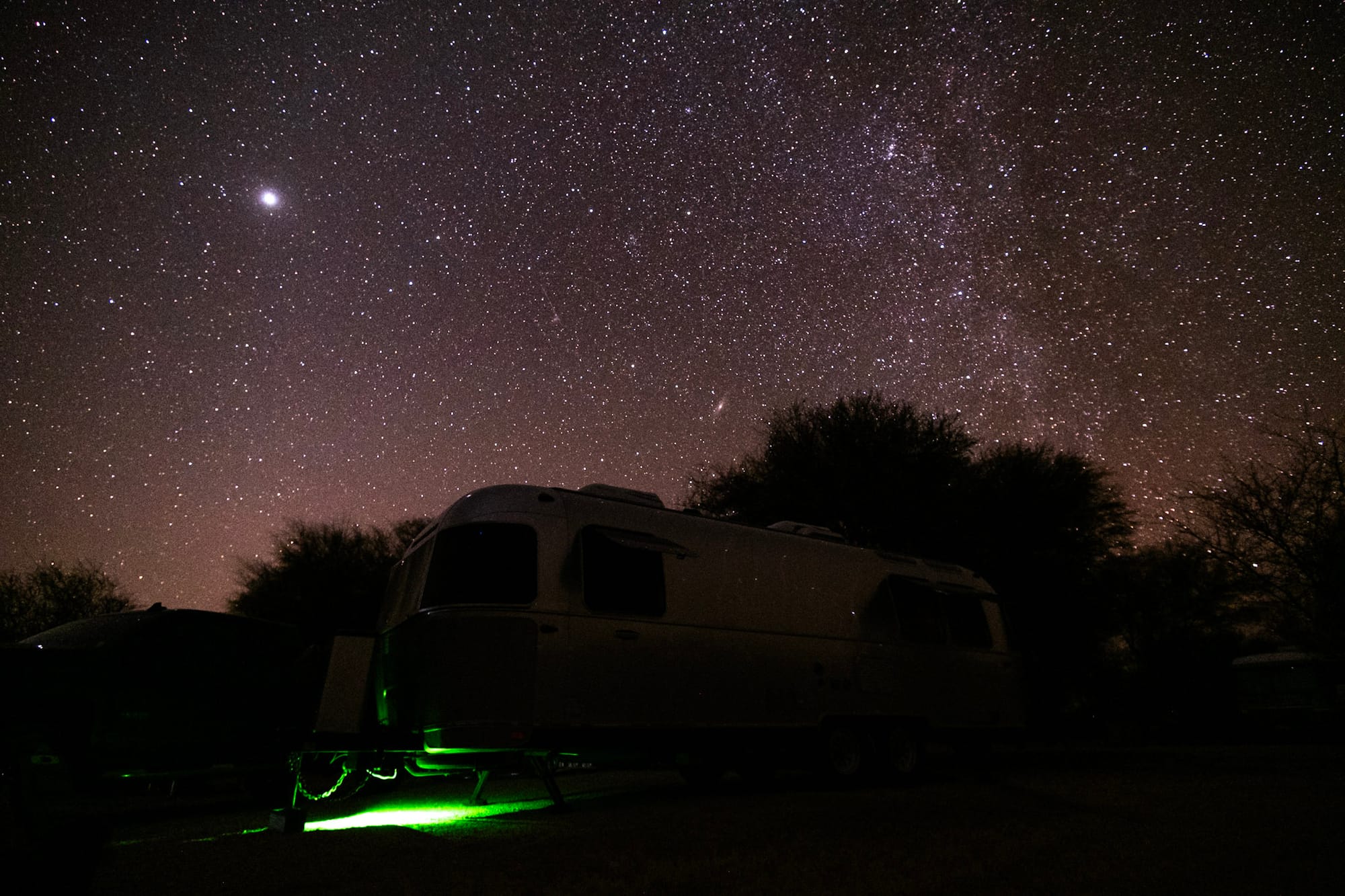
Day 7
Last full day in Big Bend. Joey and I went out early to do our last hike of the trip, the Santa Elena Canyon trail. This is another popular trail for a good reason: it's easy and short (a couple miles) with awe-inspiring views as you walk along the Rio Grande between the towering canyon walls.
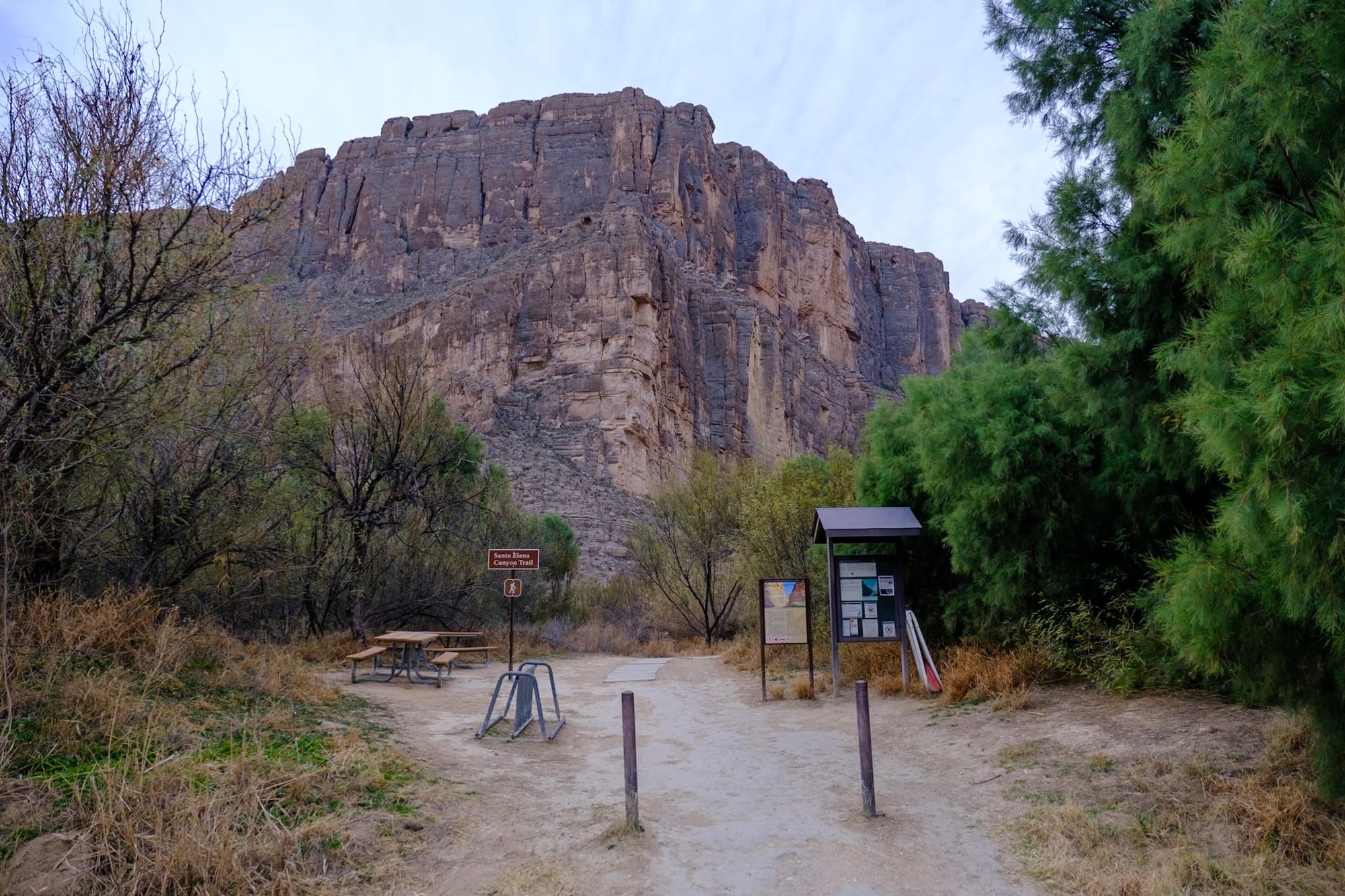
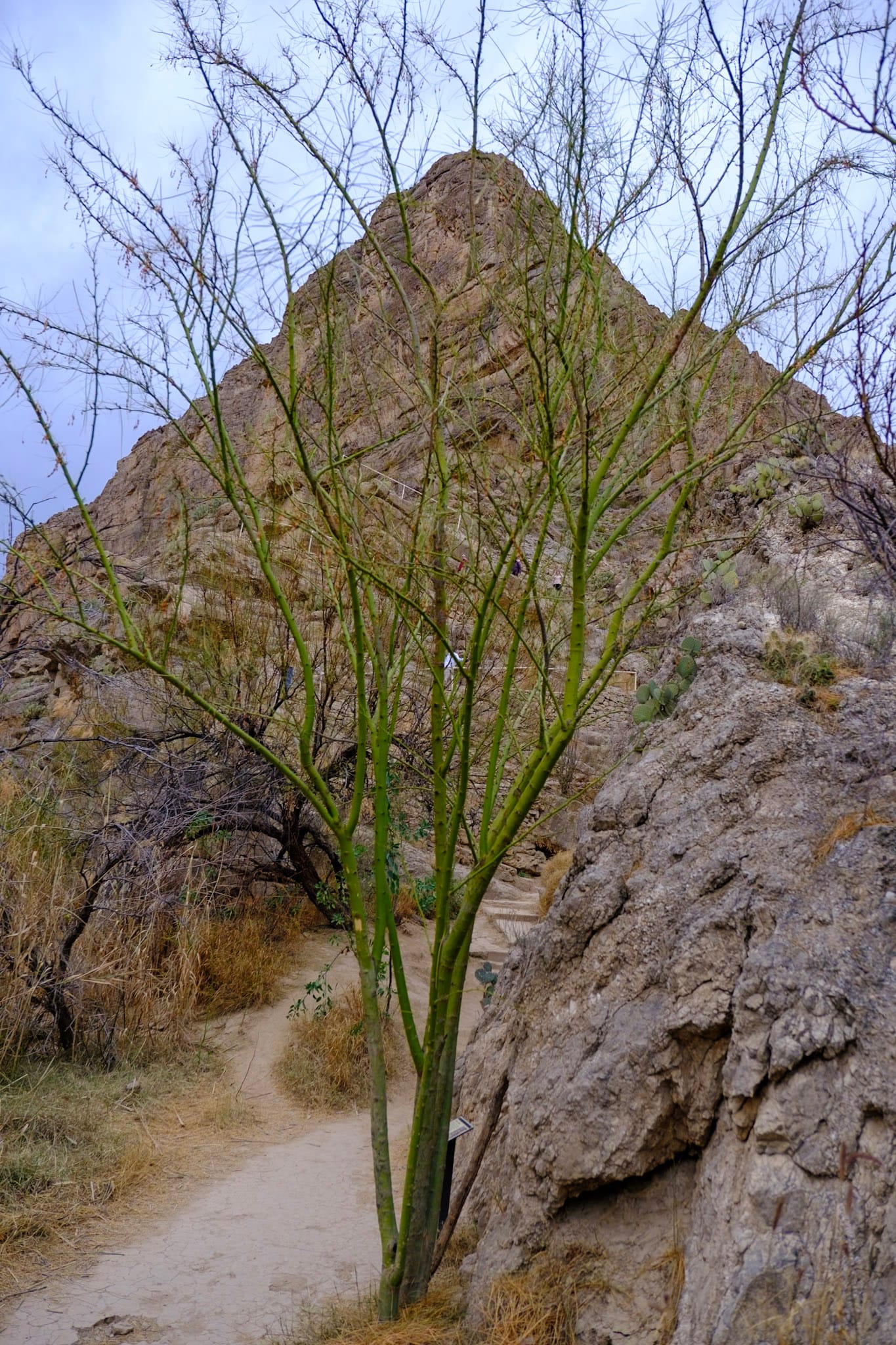
Santa Elena Canyon trailhead and a very green tree
First, you cross a creek that feeds into the Rio Grande at a super shallow area (there wasn't any water when we crossed, just sand and rocks, but sometimes it floods after a heavy rain). Then you climb the sandy bank on the other side and up some switchbacks built into the rocky wall, climbing up into the canyon. Then the trail follows the Rio Grande further into the canyon. It gets quieter the deeper you go, but also any sound you make bounces and echoes off the canyon walls. Where the trail ends right next to the river, it's extremely echo-ey – you can be speaking at a normal volume and it will still be amplified.
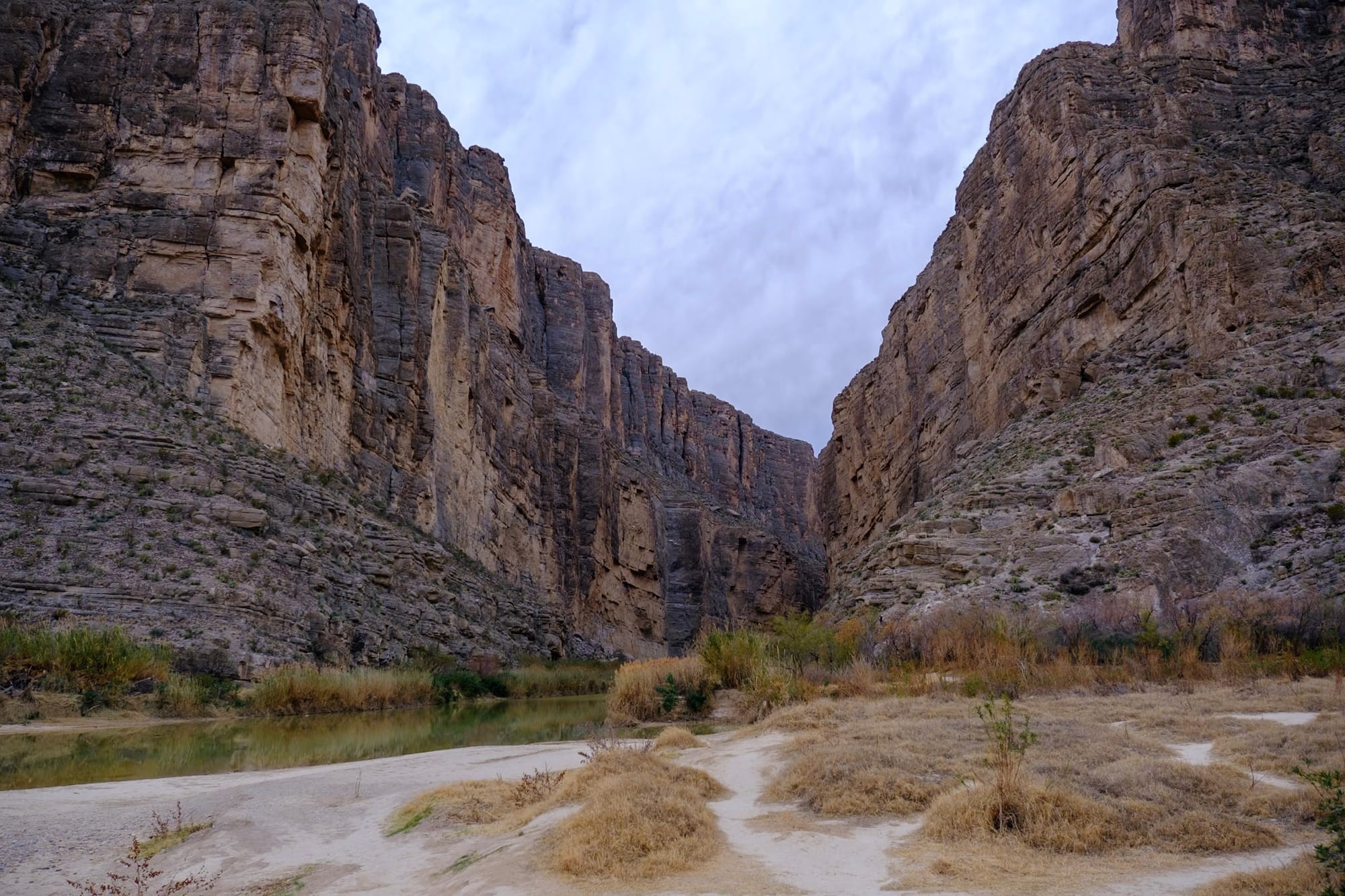
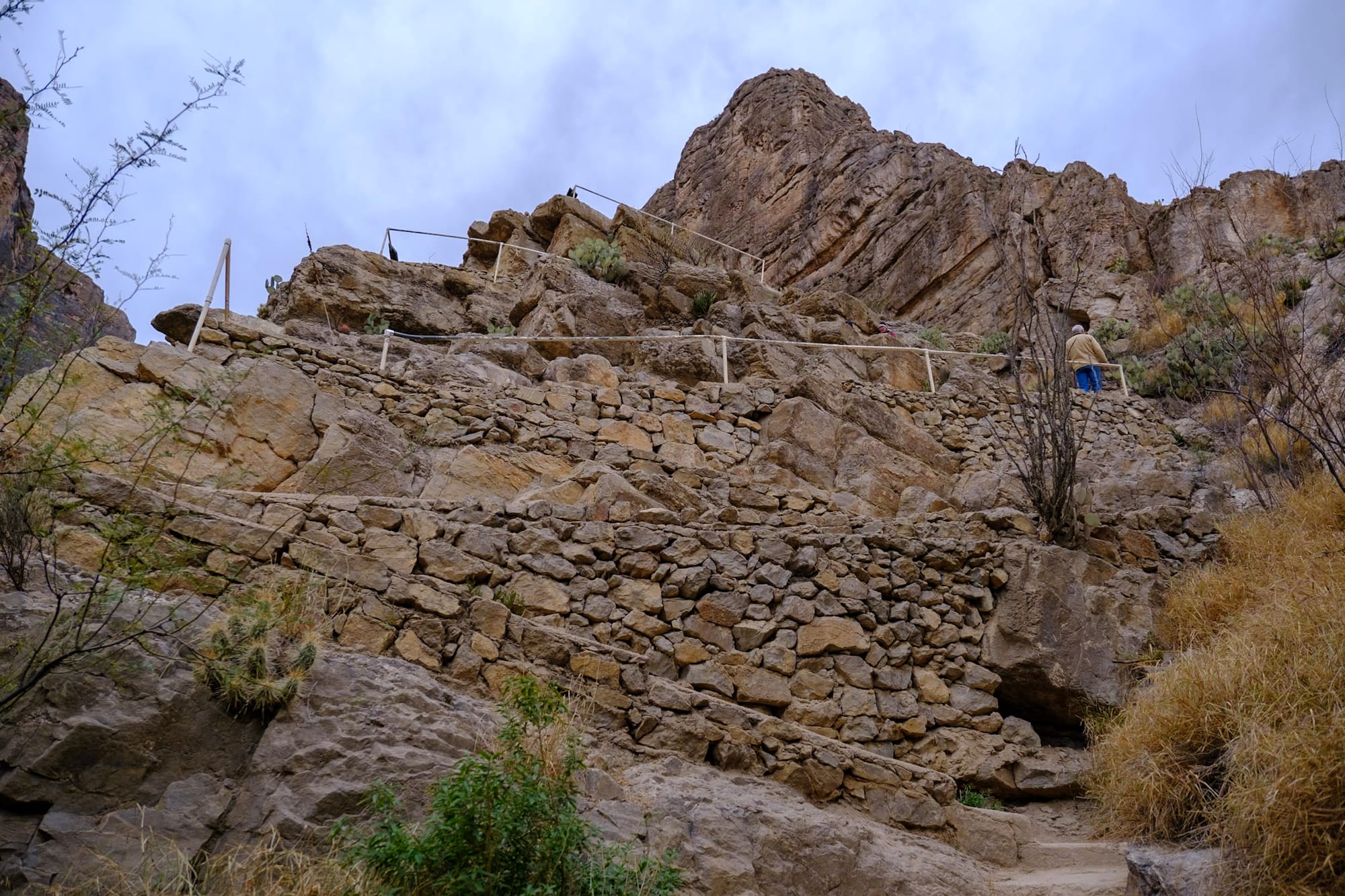

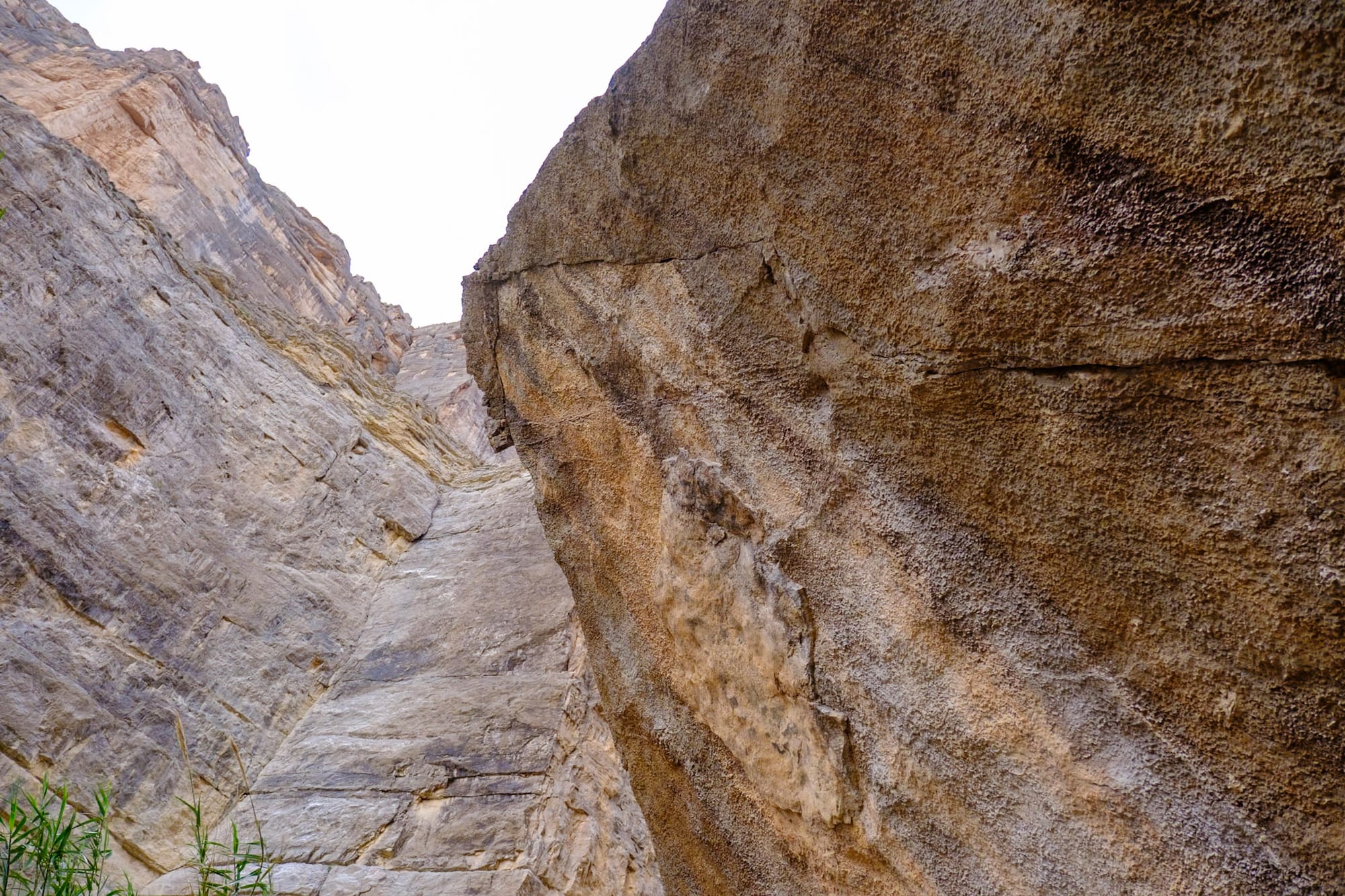
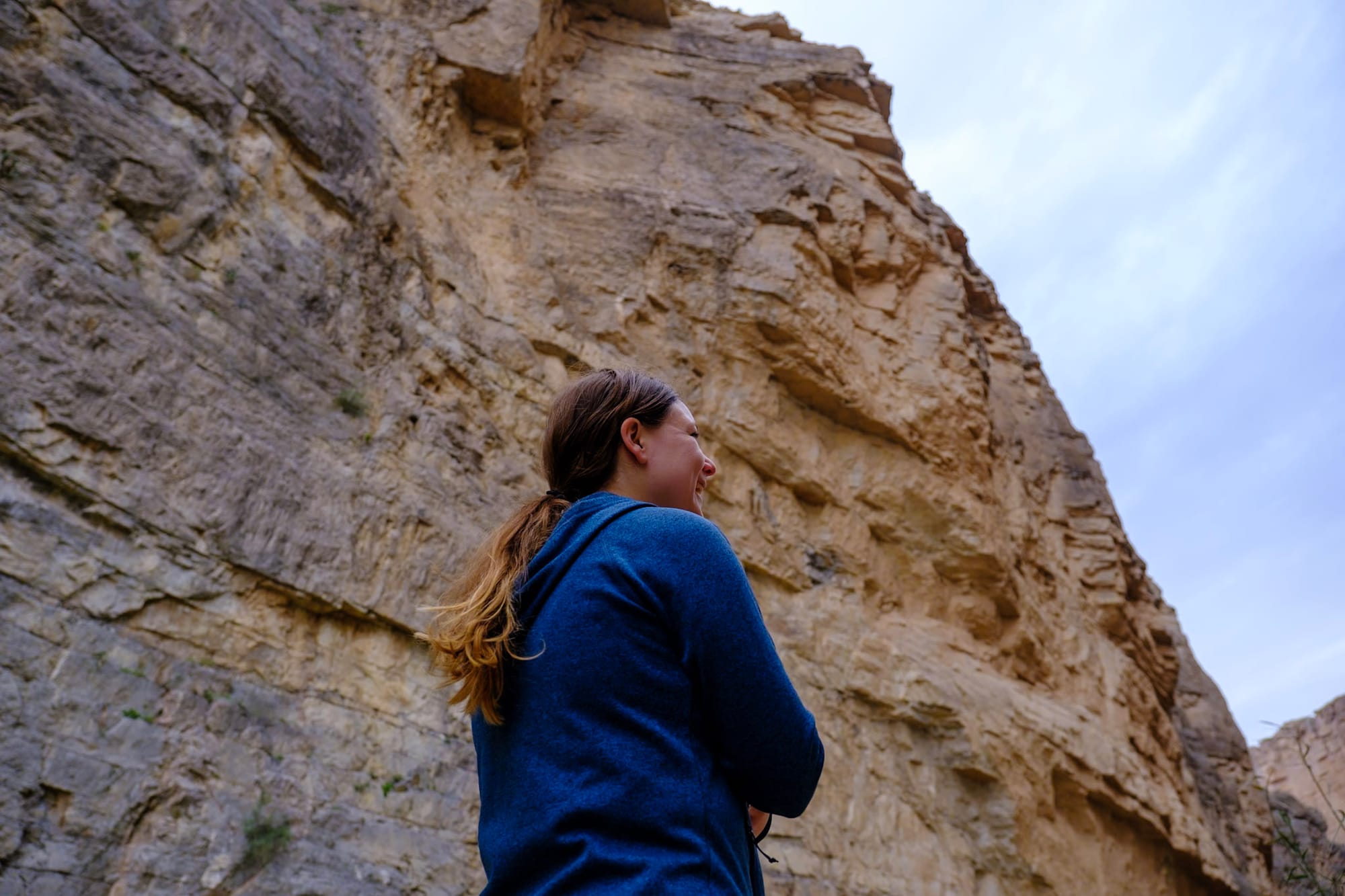
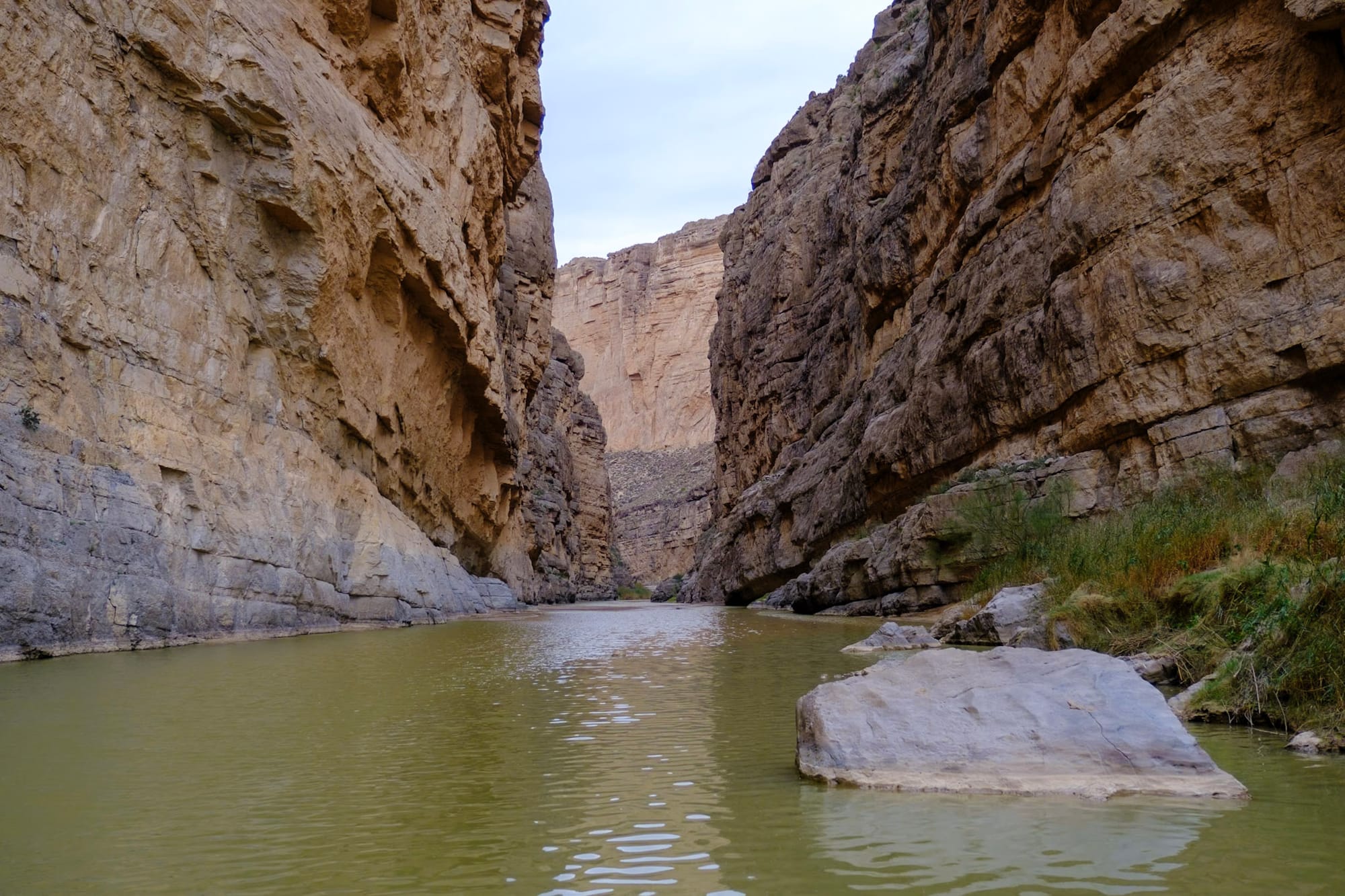
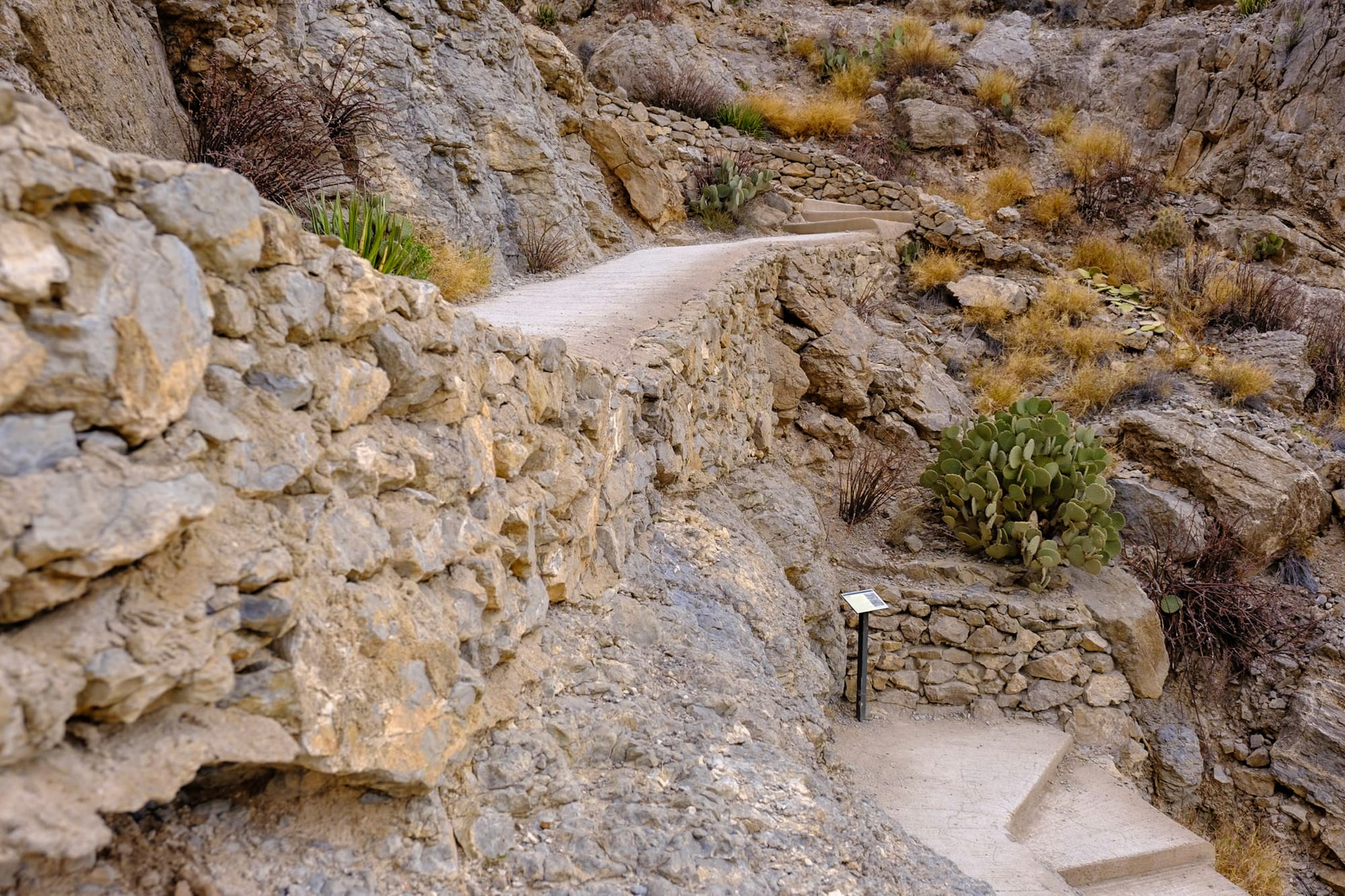
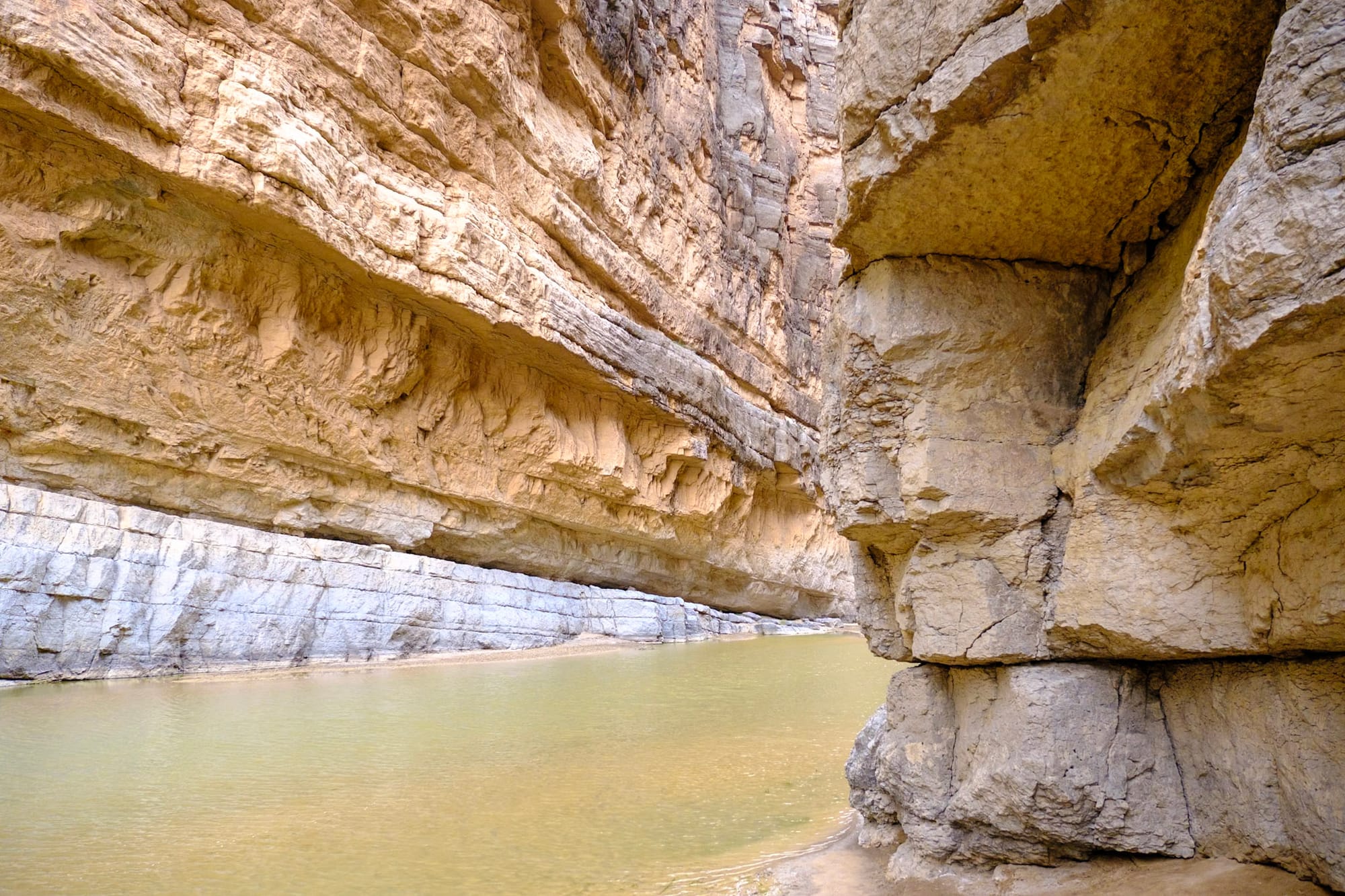
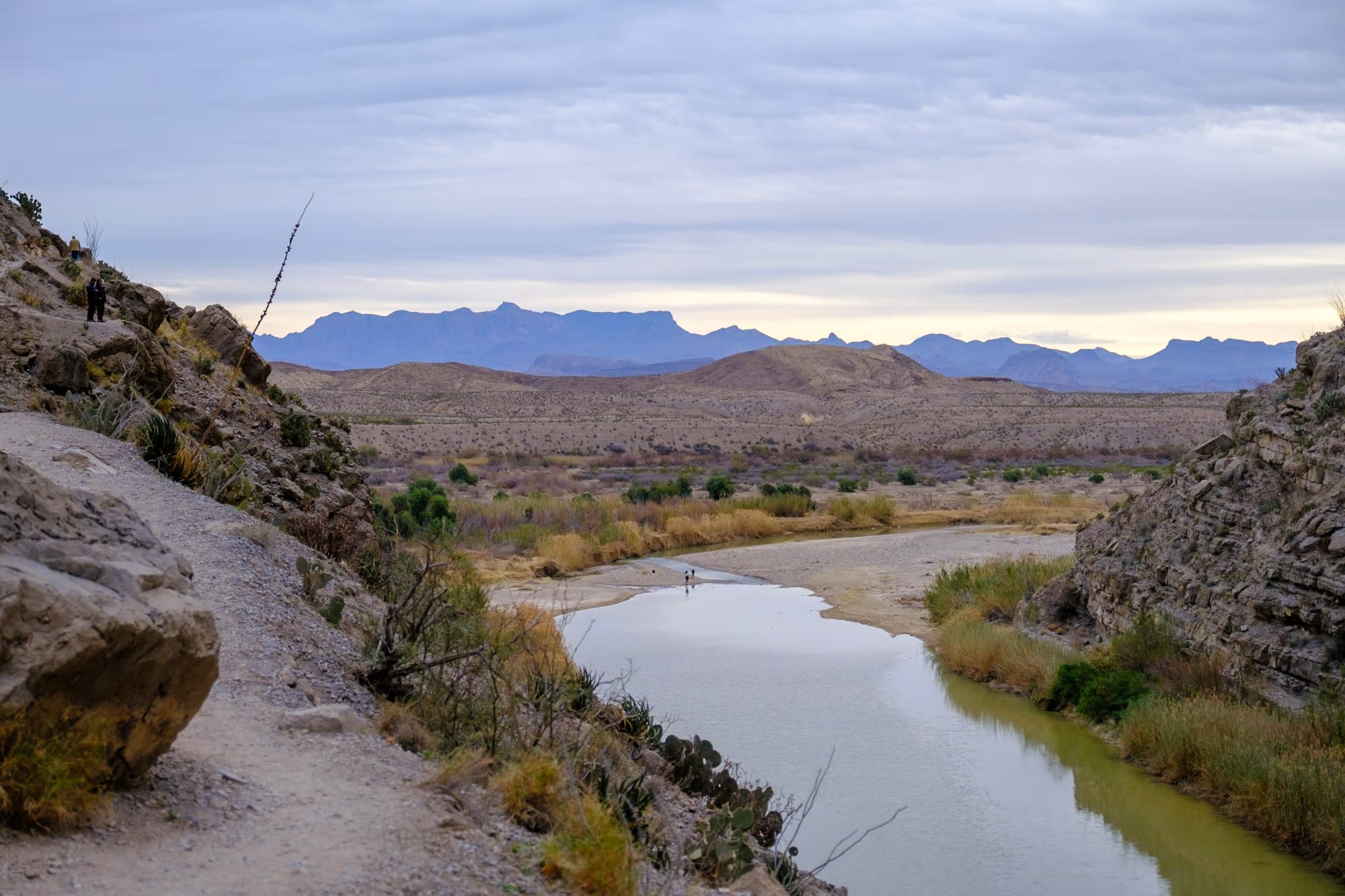
Santa Elena Canyon is huge, and it was super cool walking in between the walls. This is definitely a must-do hike in Big Bend.


After the hike, we went back to the campground to grab Hollie and our laptops, then drove up to an overlook we knew had cell signal so we could work (since Starlink still hadn't gotten back to us). We were high above the desert, just below a popular overlook point called Sotol Vista.


That night, we drove back to Terlingua to eat at the Starlight Theatre – a popular restaurant in an old movie theatre. This place was super cool and SO good. We had to wait a while, so we grabbed margaritas at the bar and sat at one of the tables just outside, people watching and hanging with a cute stray dog who was waiting around for food.
There was an older couple wearing cowboy hats waiting too; I found out that they've lived in Terlingua for over 30 years, and they said they remember when the town truly had almost nothing in it, more like an actual ghost town. It's gotten busier and more popular due to Big Bend, but it still feels pretty small and quiet overall to me.
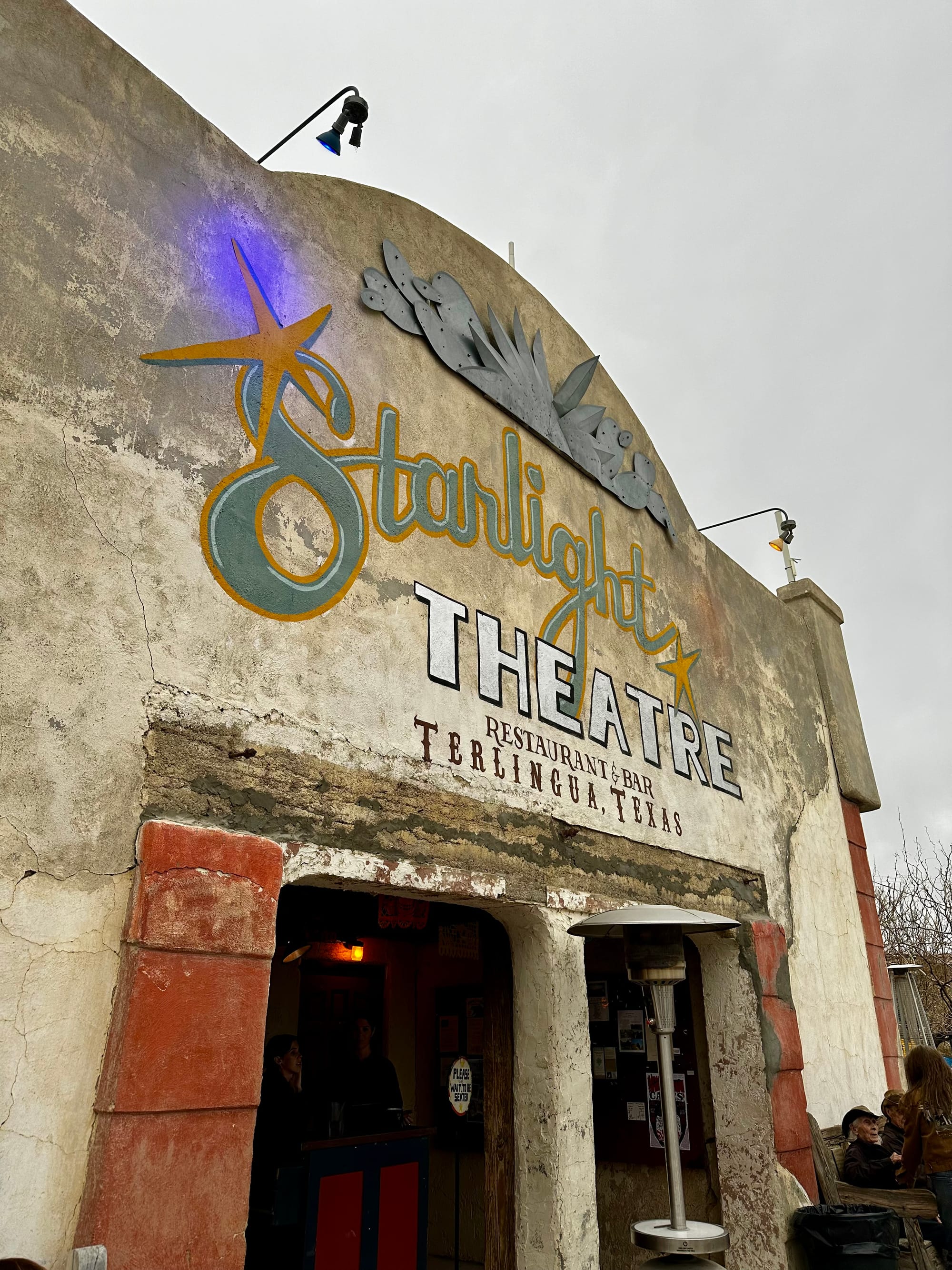
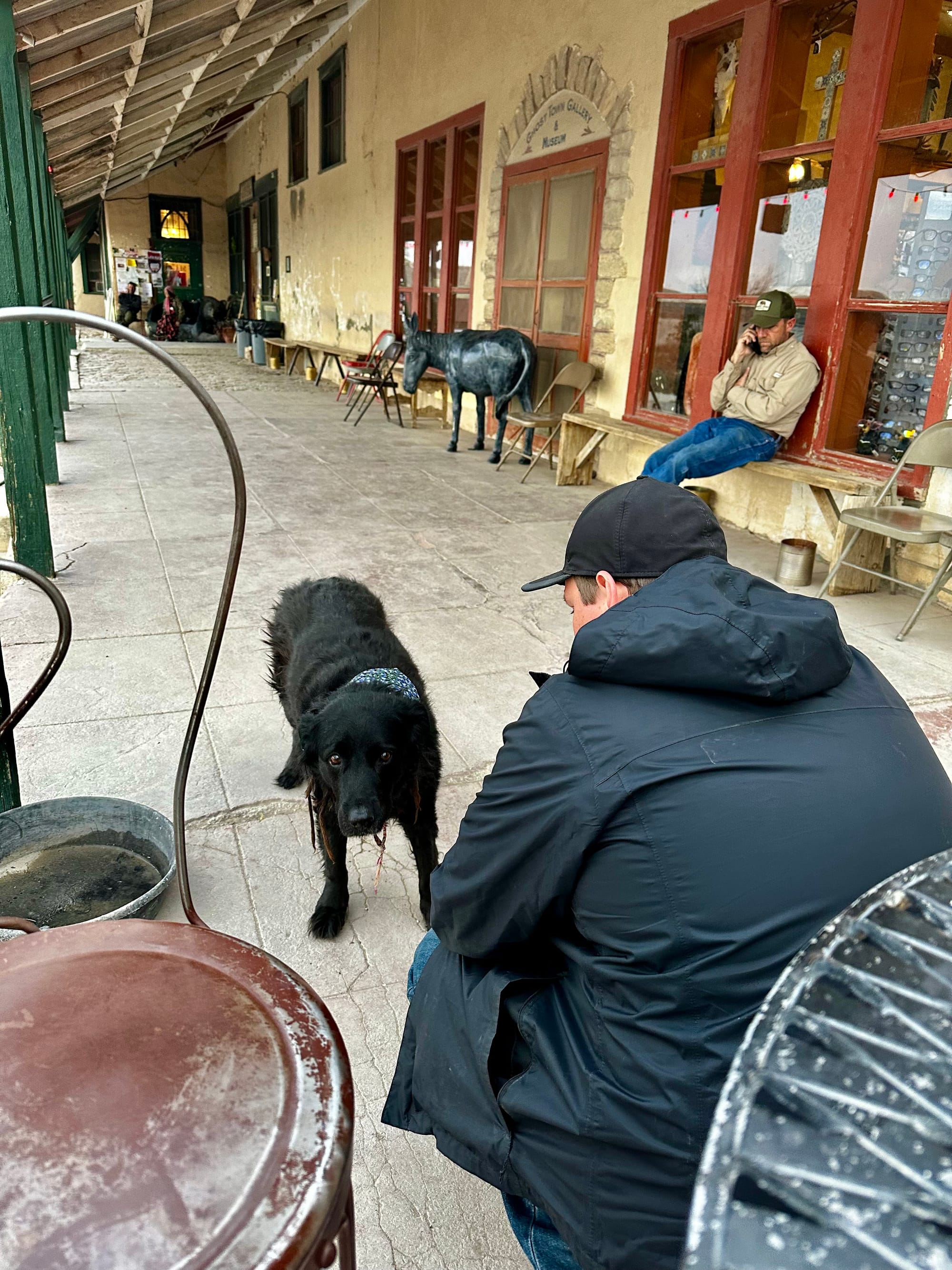
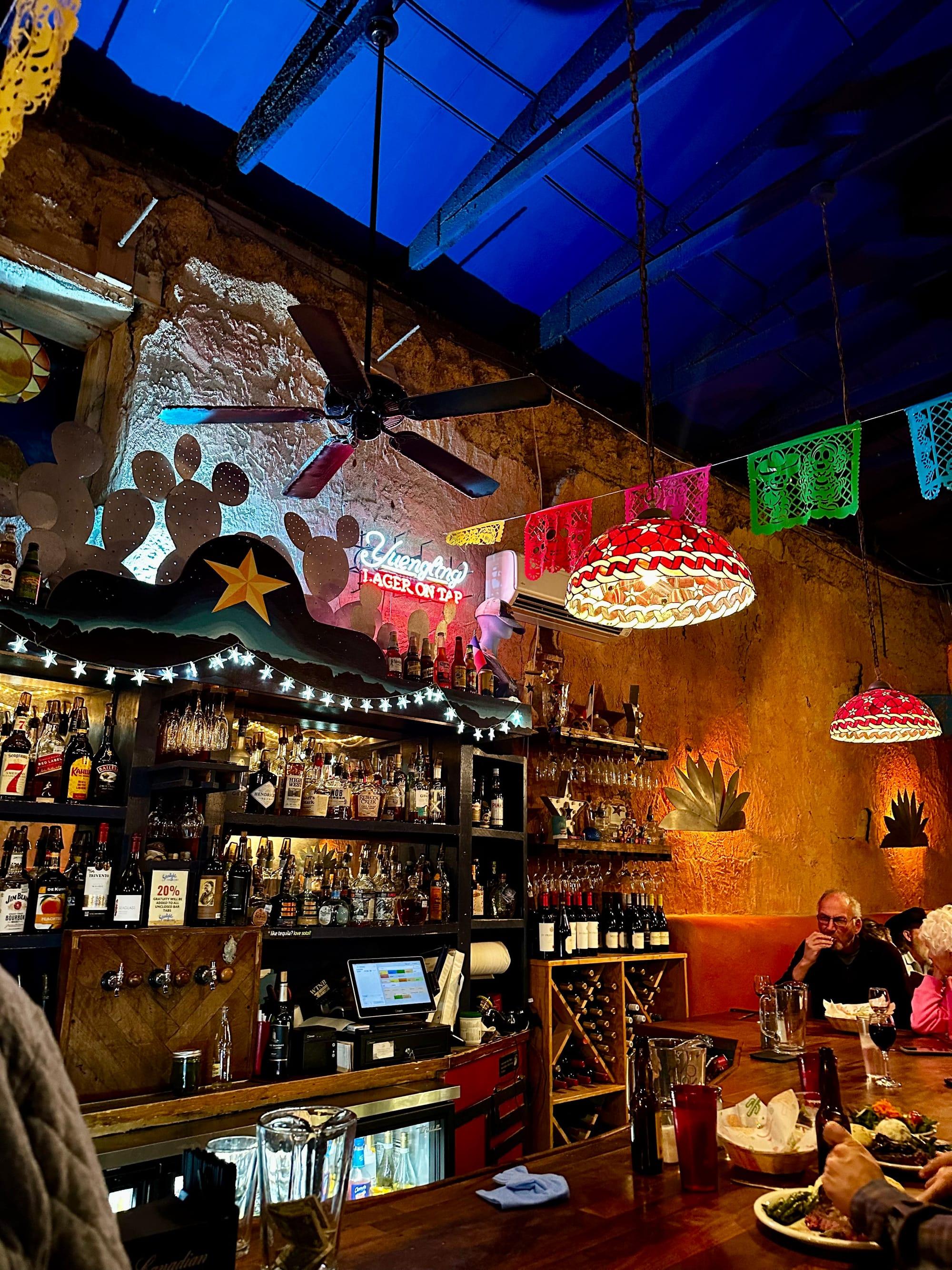
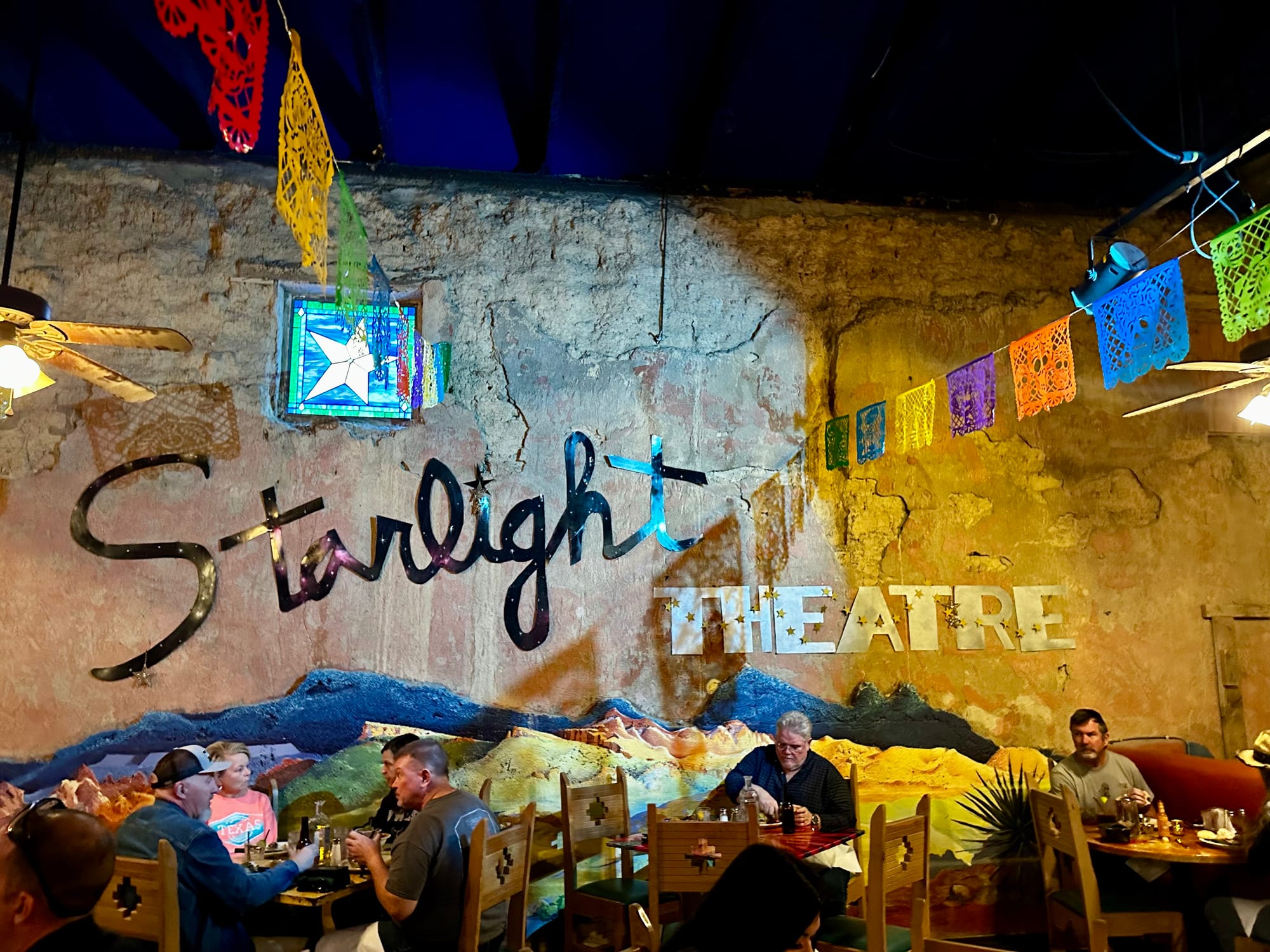
Inside, there was a stage with a local duo playing live music. We got the brisket queso for an appetizer (SO good), and we both ordered something different than we usually see off the menu – Joey got tequila-marinated Texas quail, and I got an antelope burger, both were awesome. We've been trying to eat healthier overall and not go out as much, so the times we do go out usually taste extra good lol. It was a great end to our week in Big Bend.

If you've made it this far, thanks for reading all this! We loved Big Bend National Park and highly recommend a trip there if you can make the trek – especially if you like the southwest, stargazing, and solitude.
Member discussion